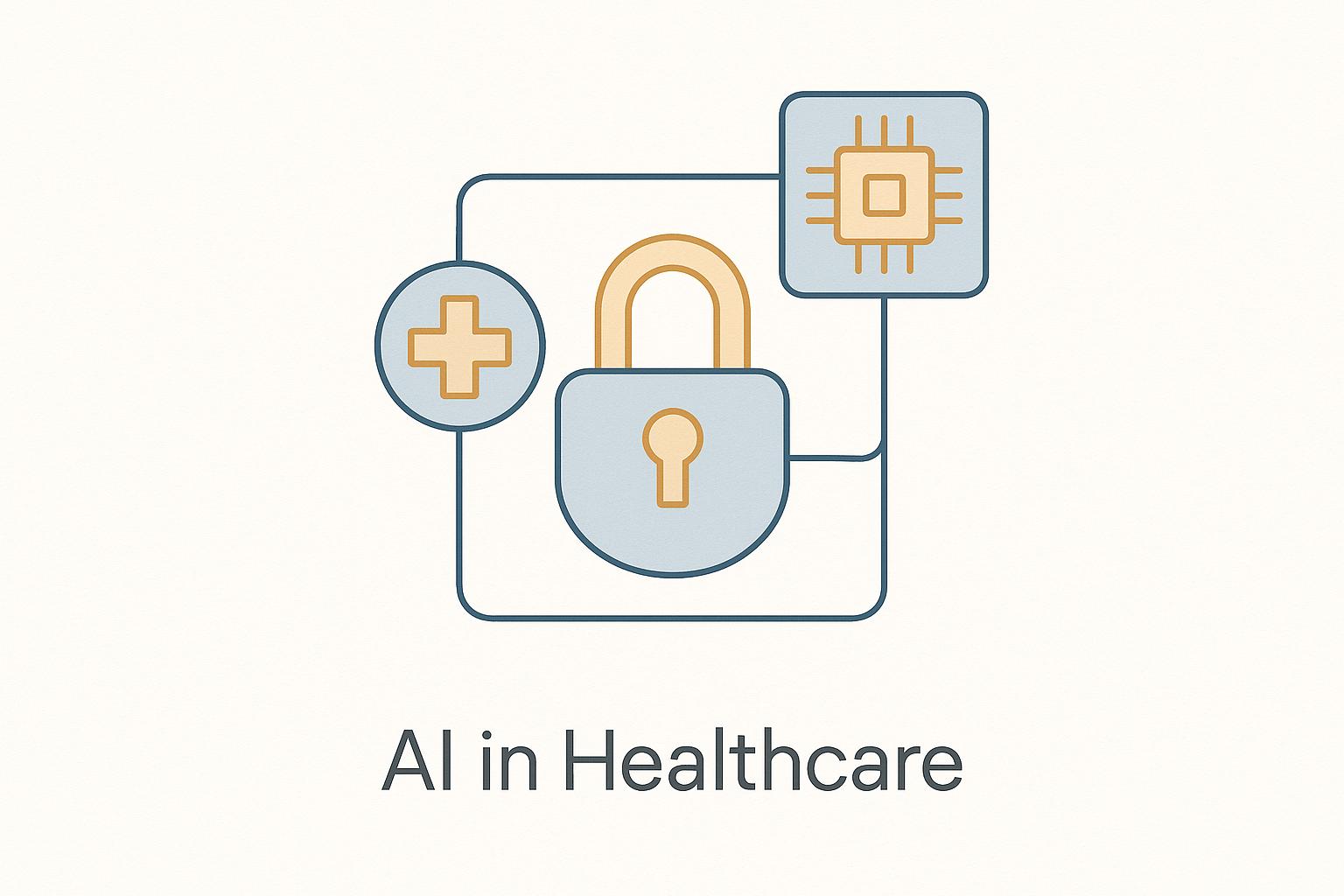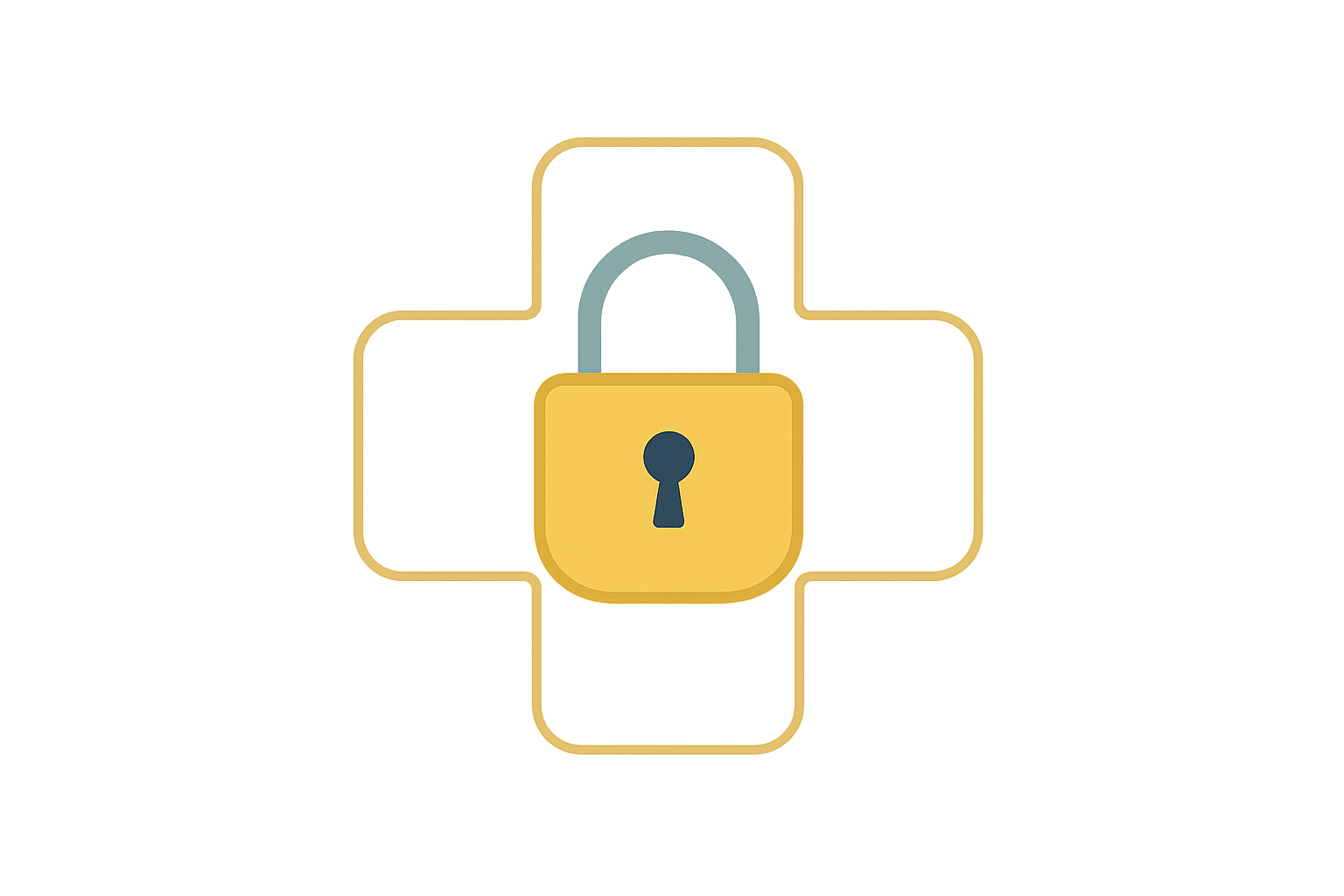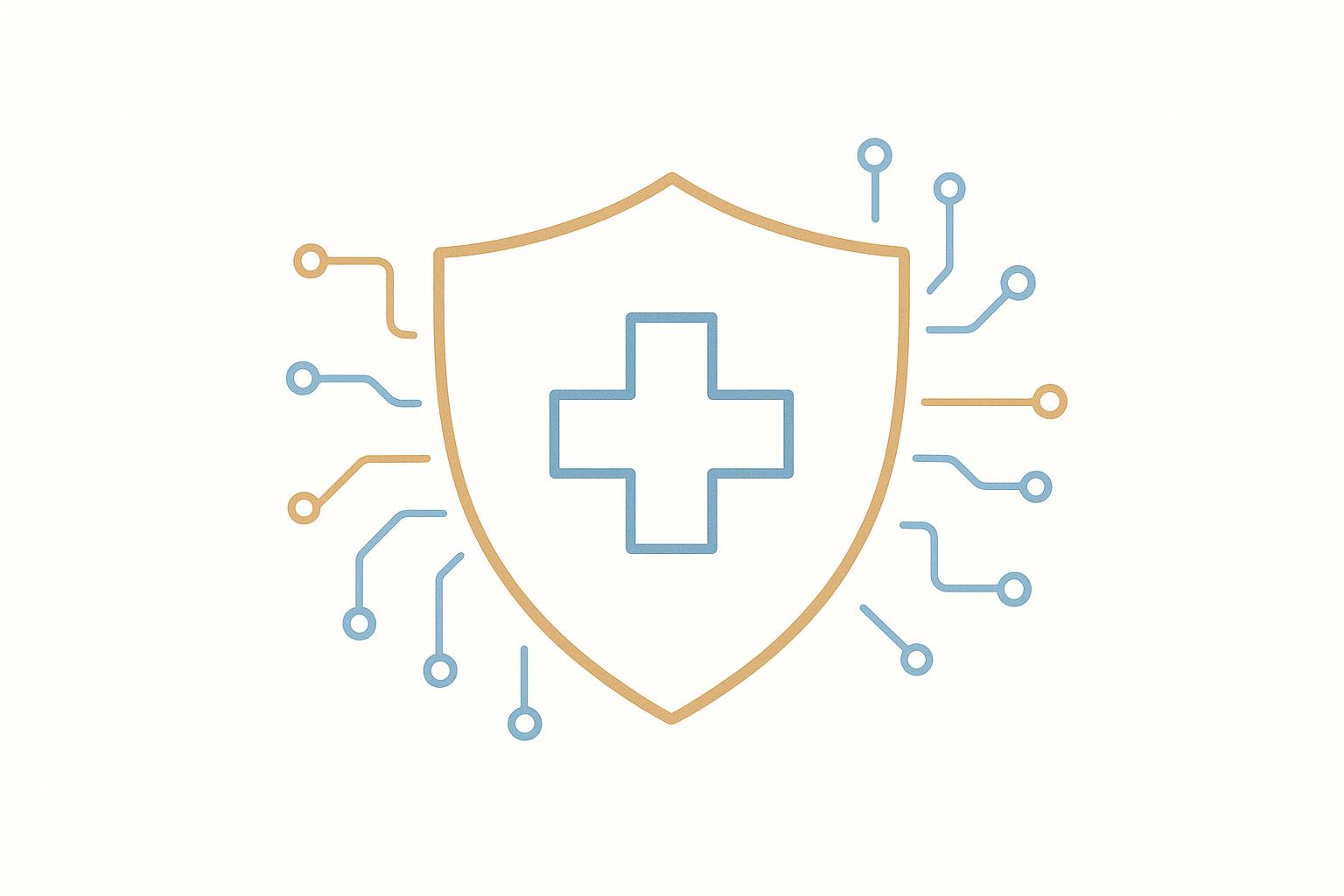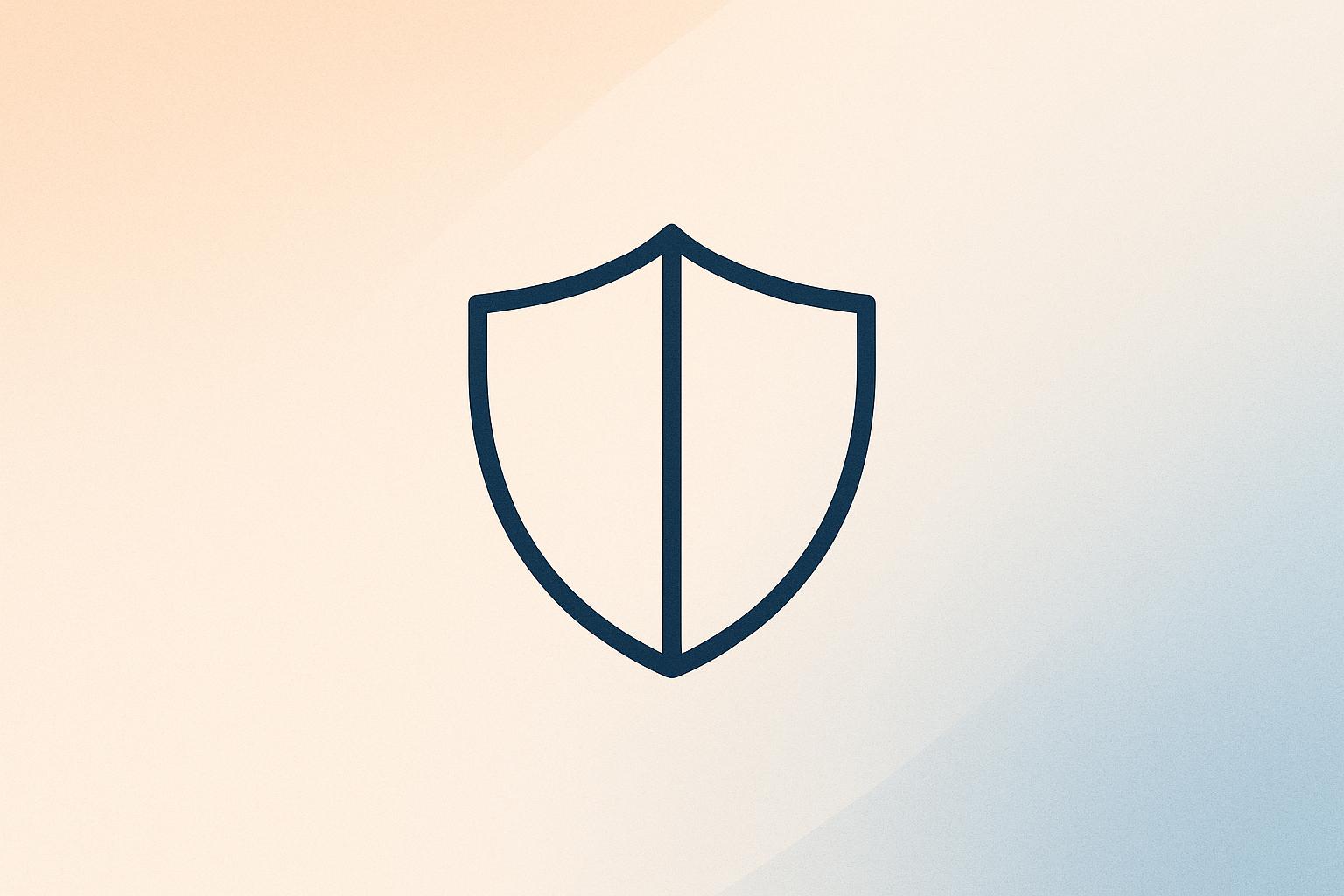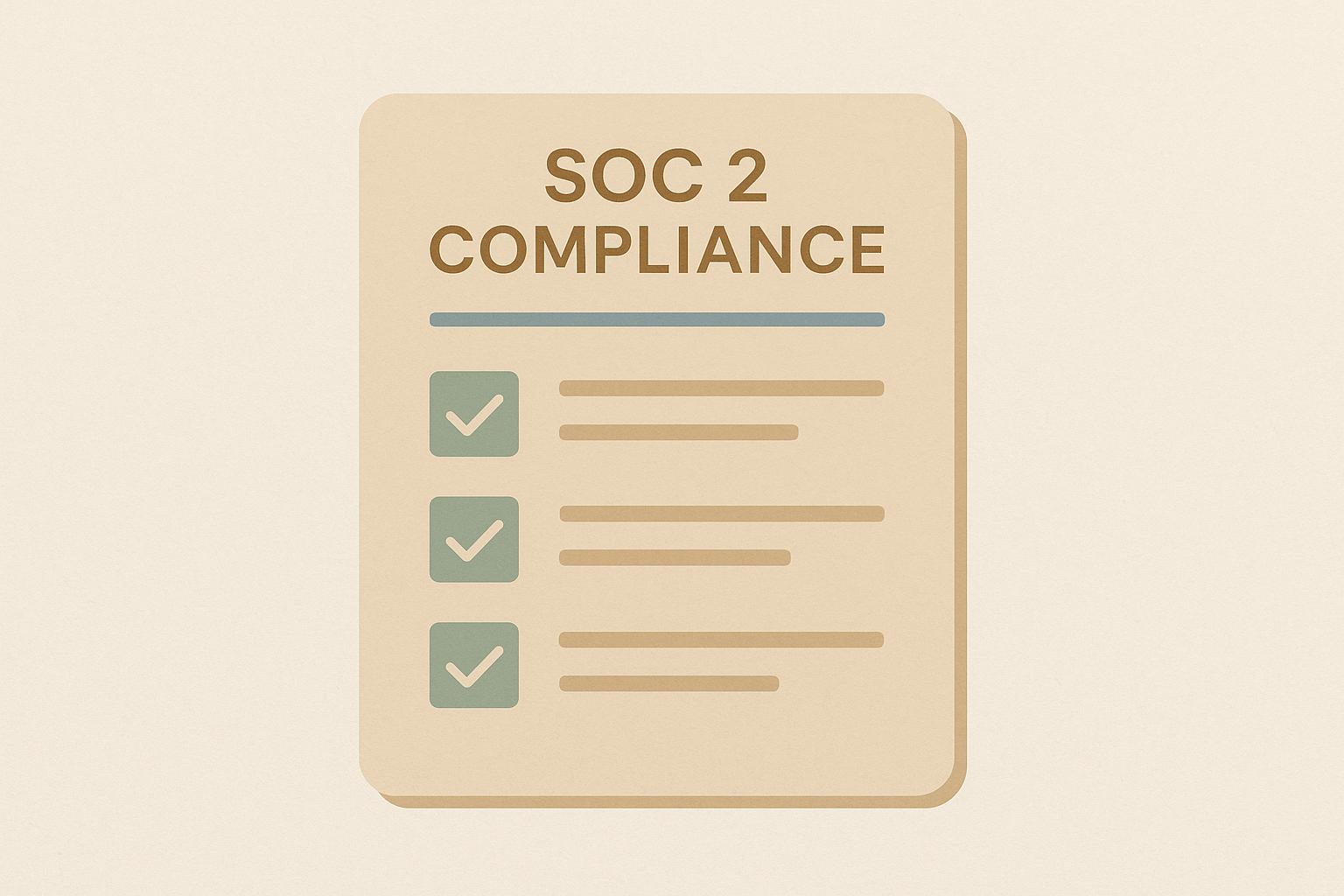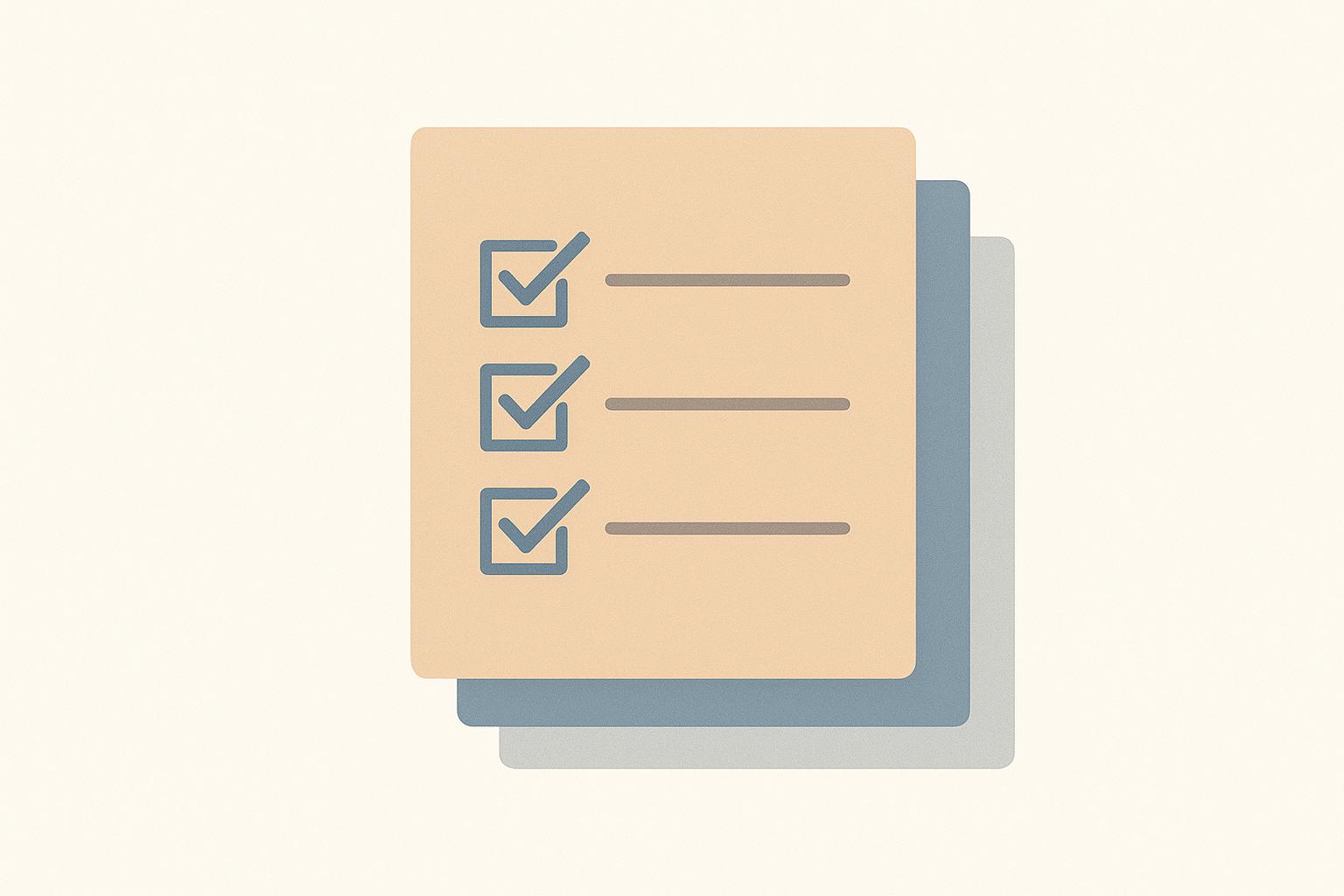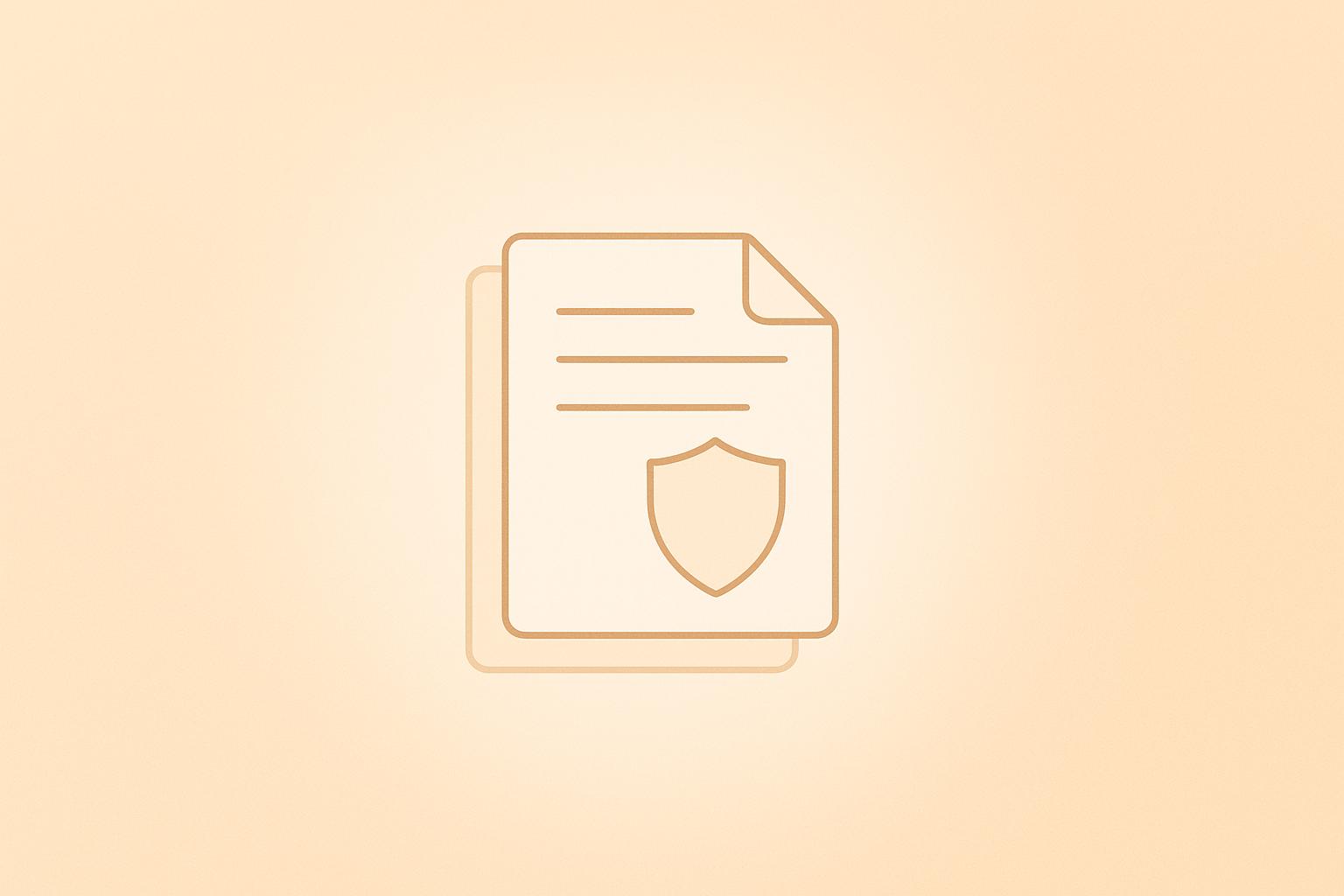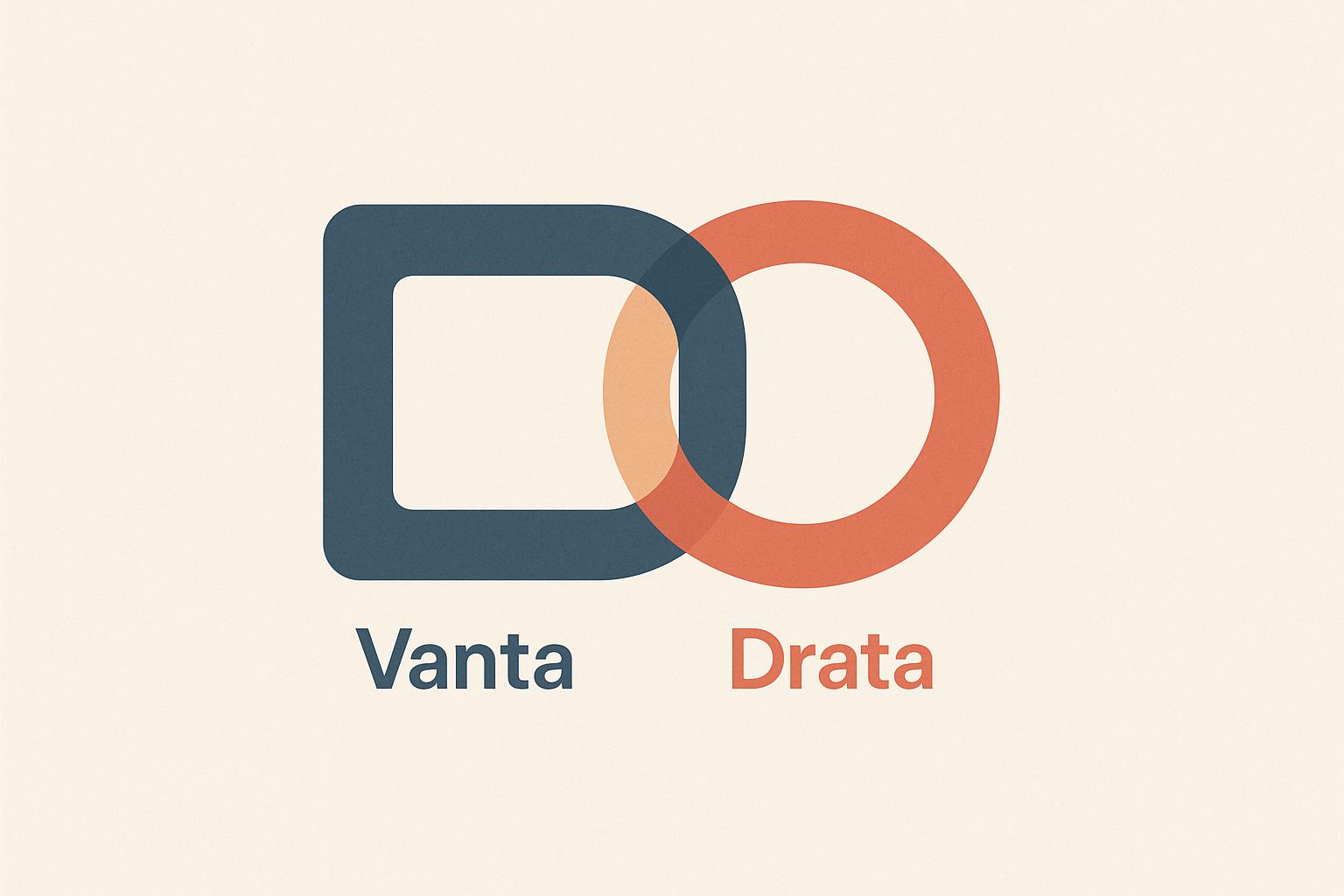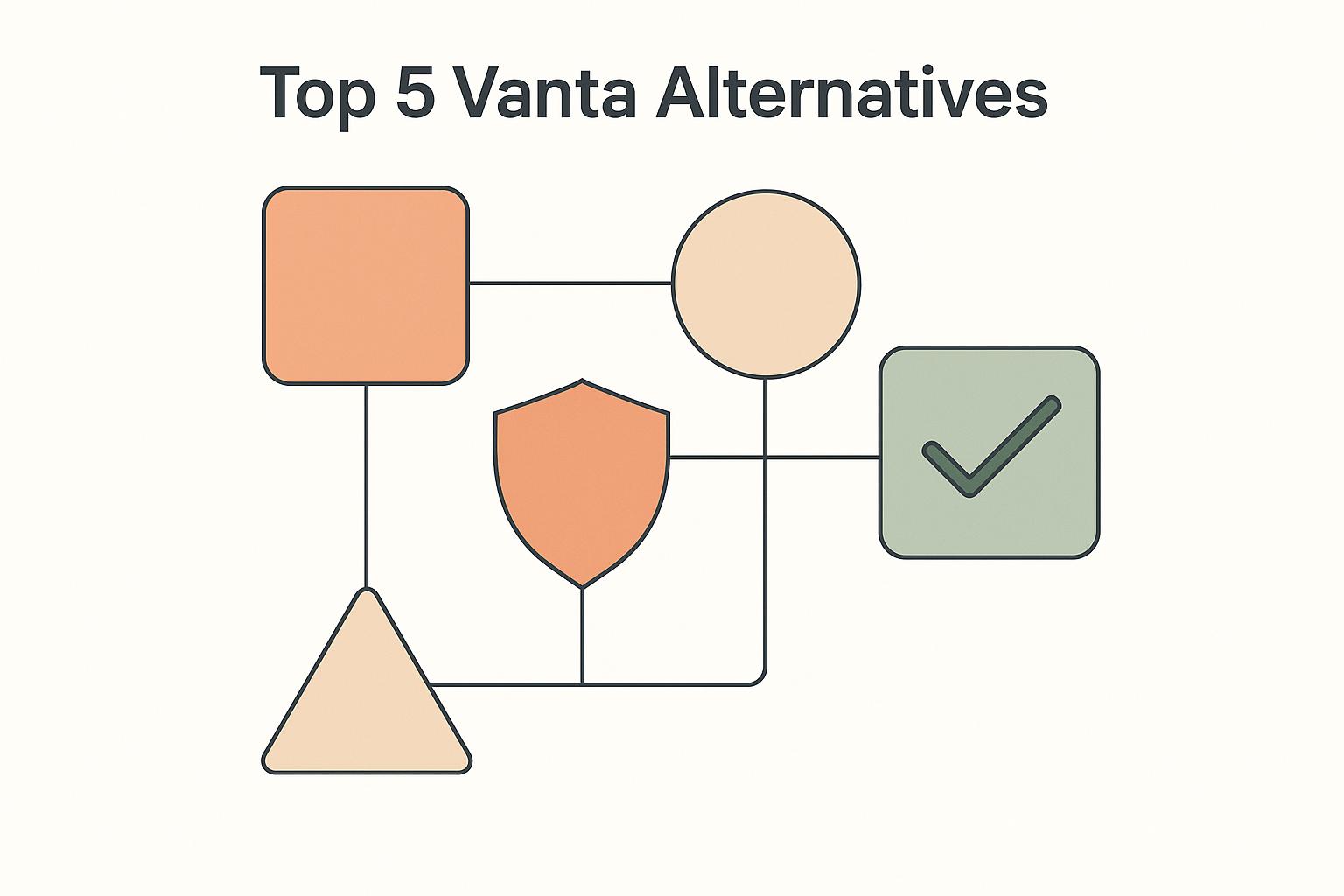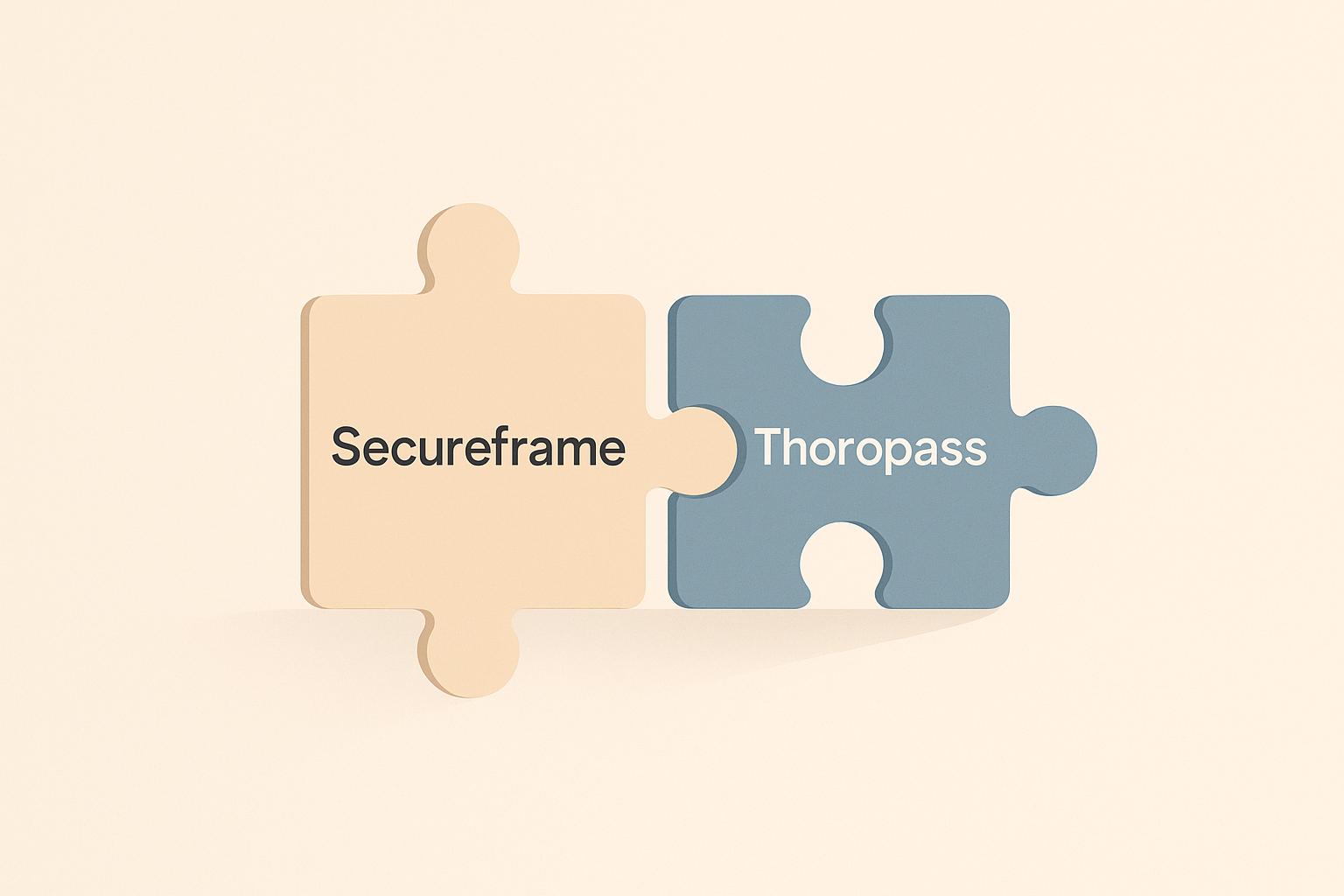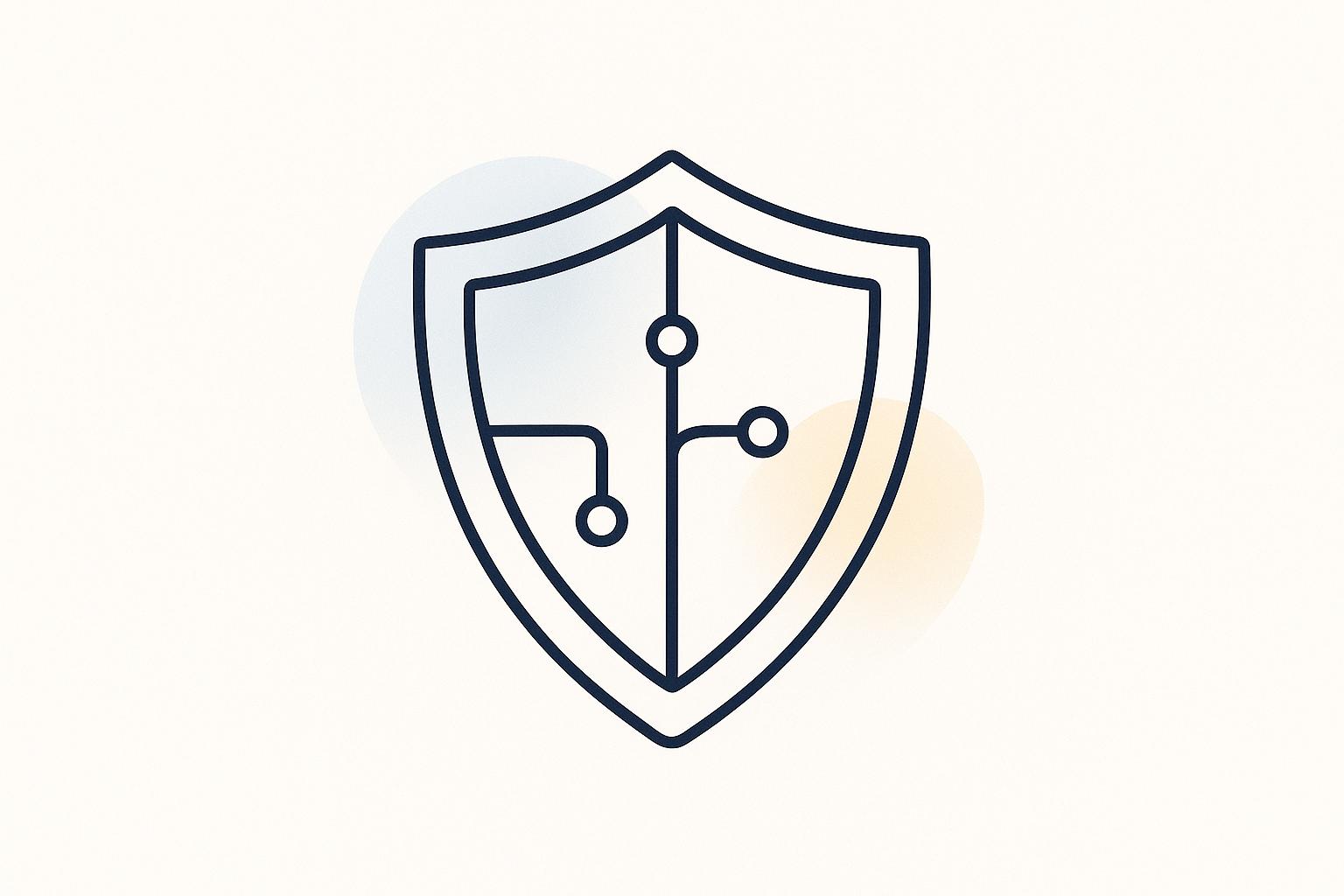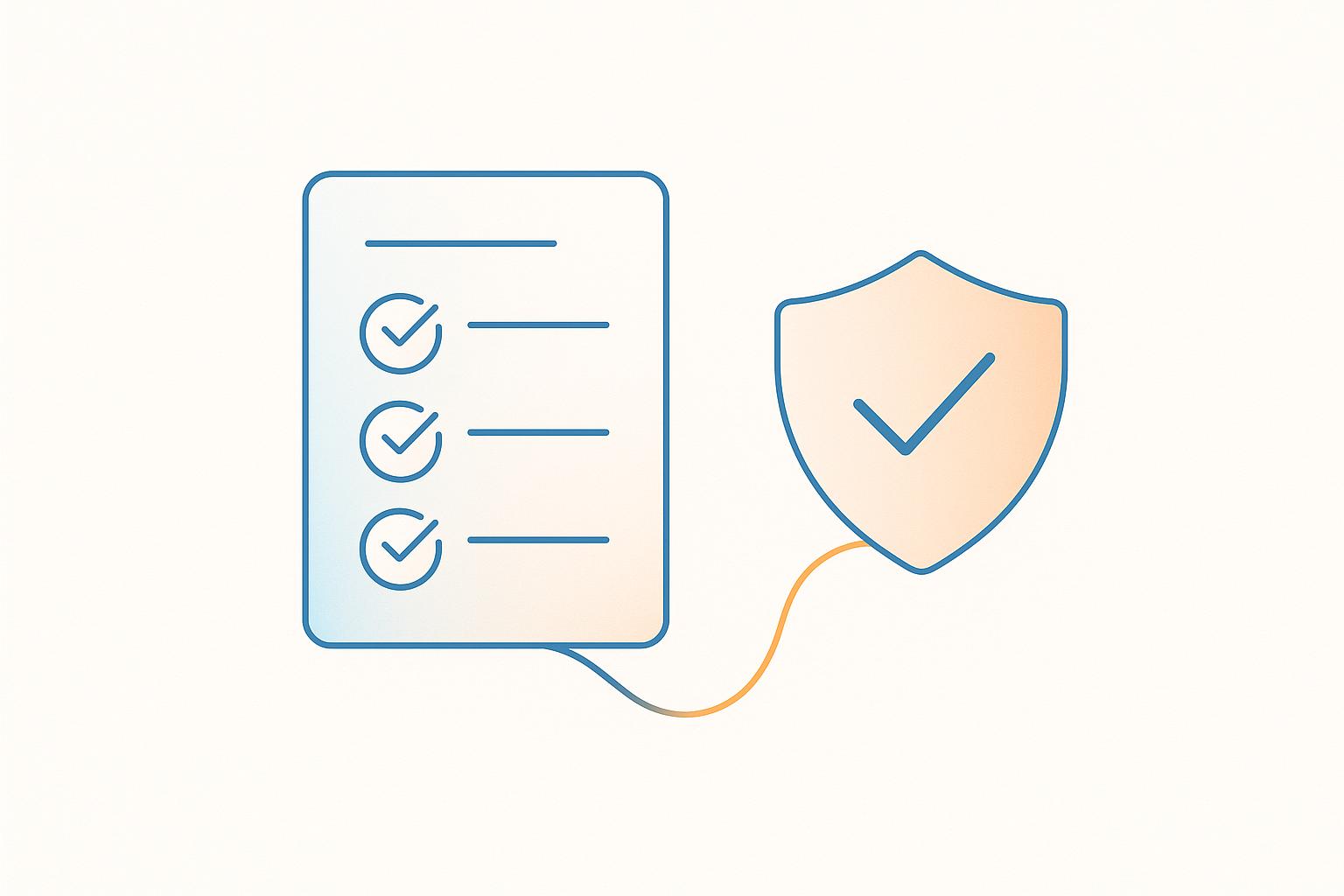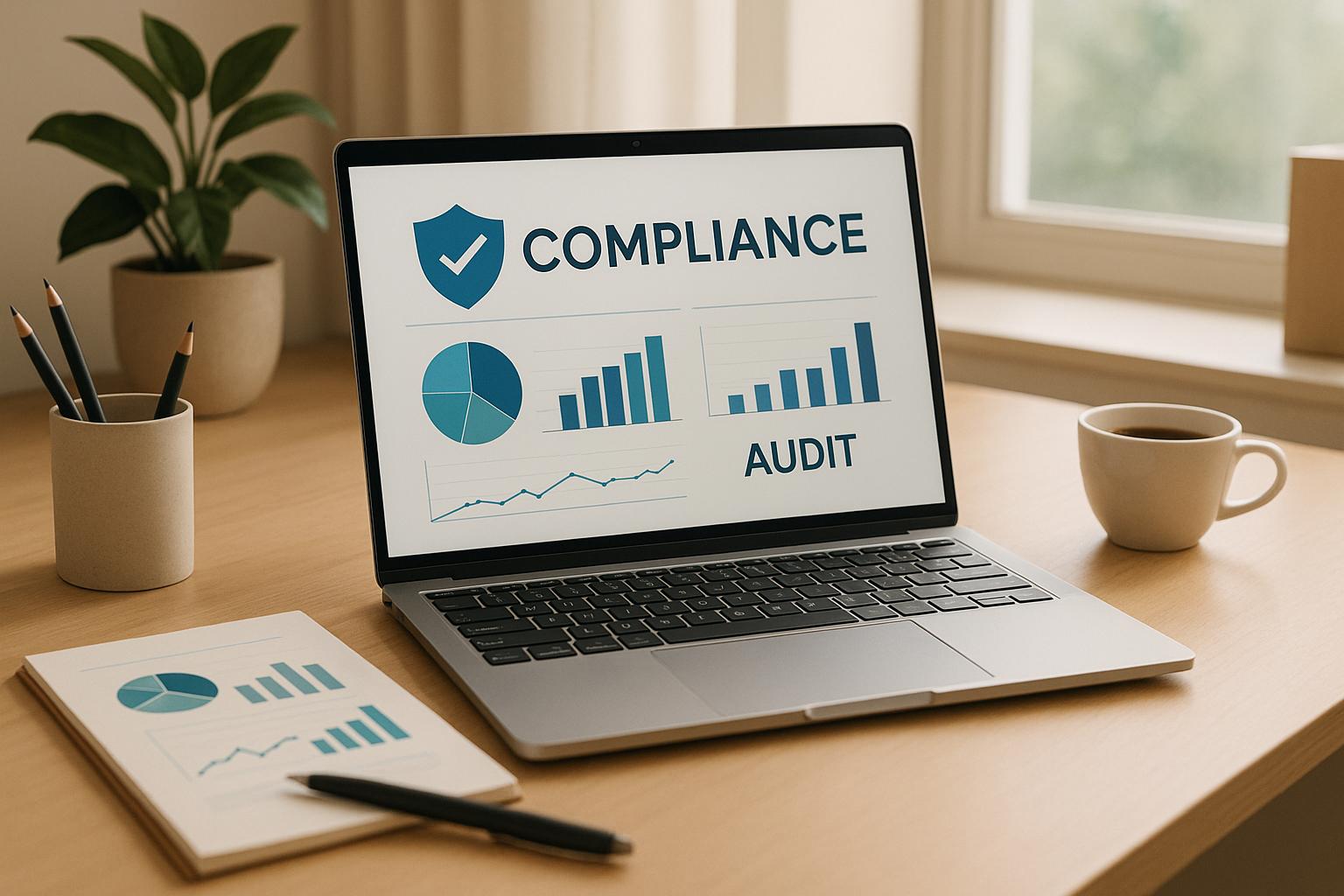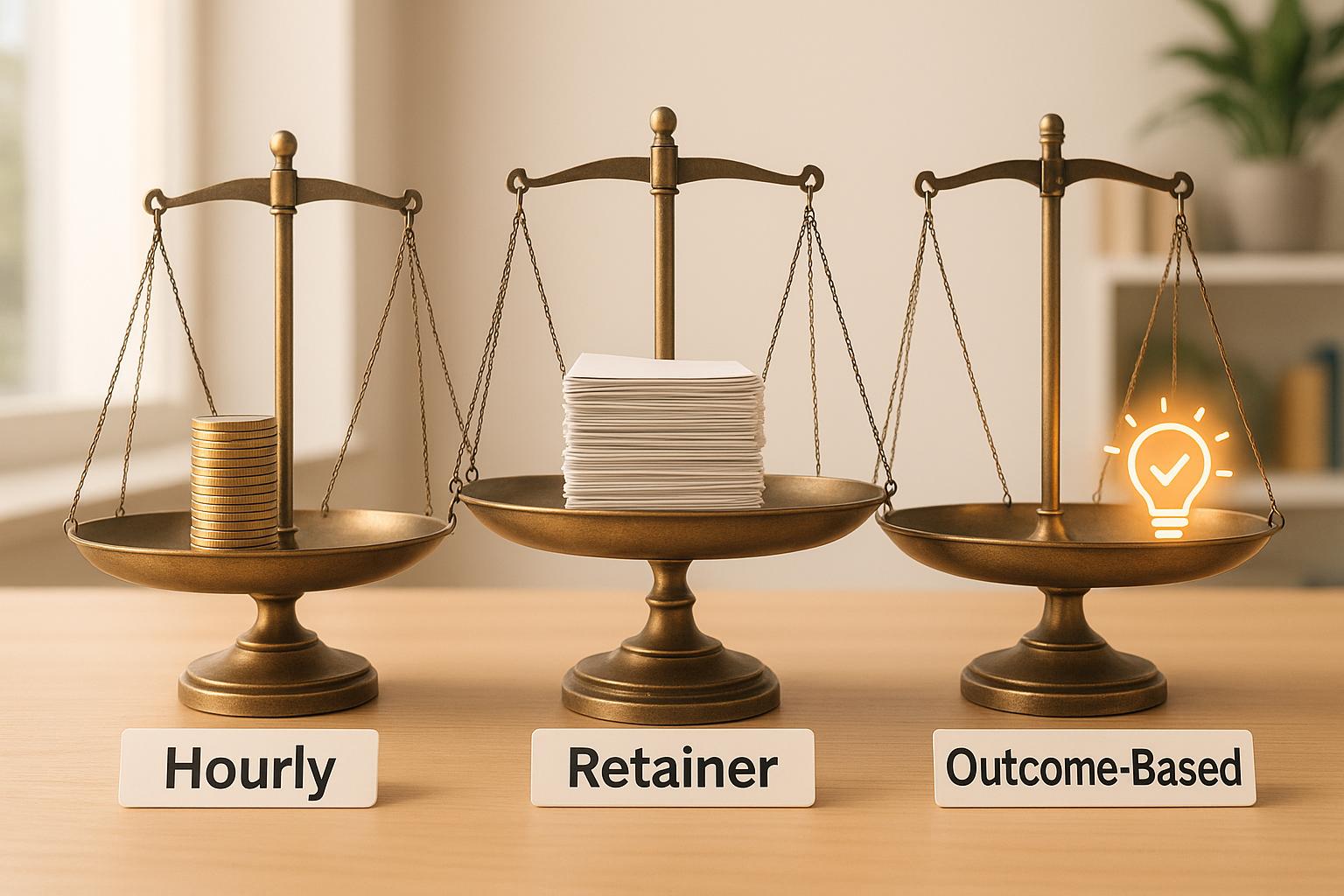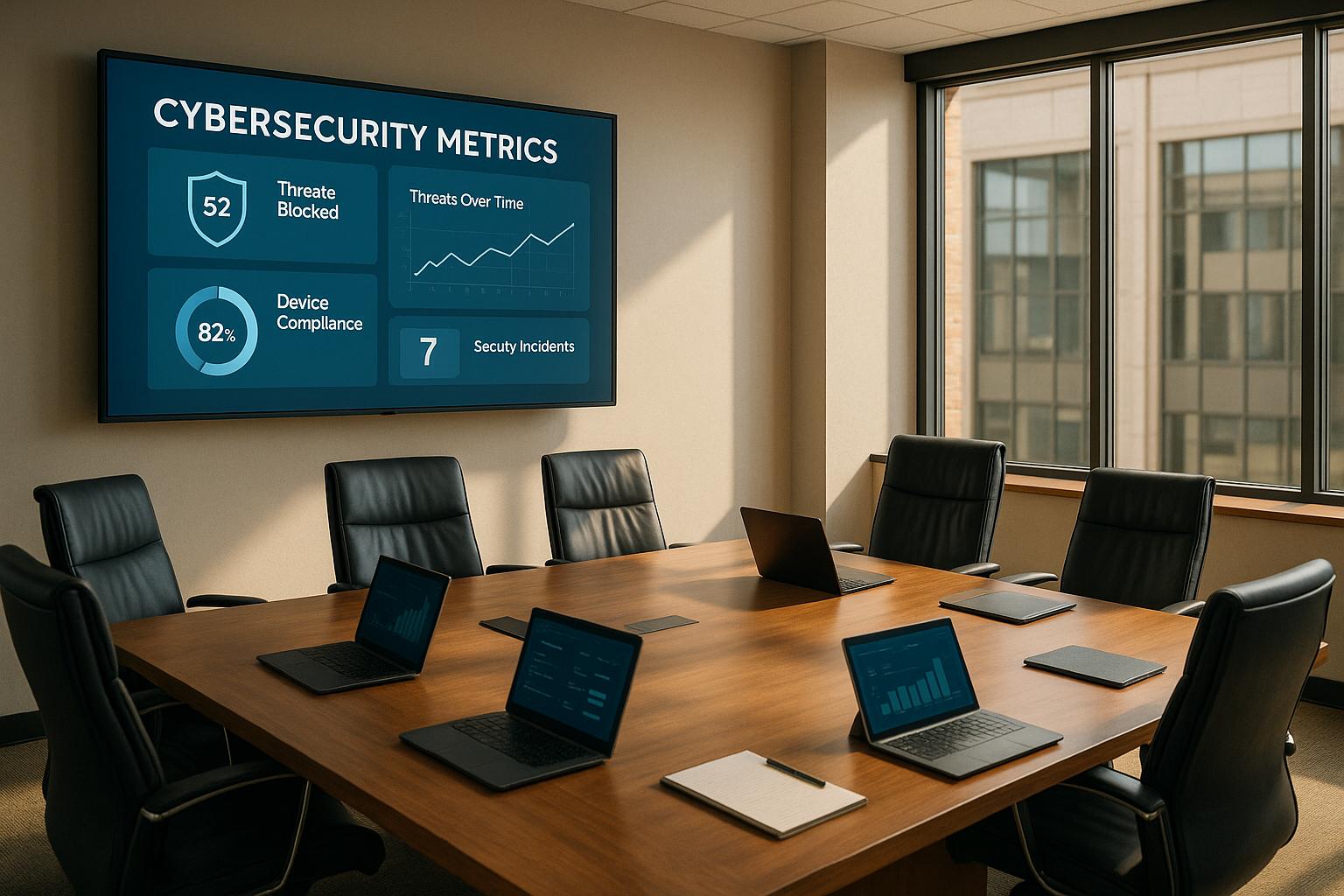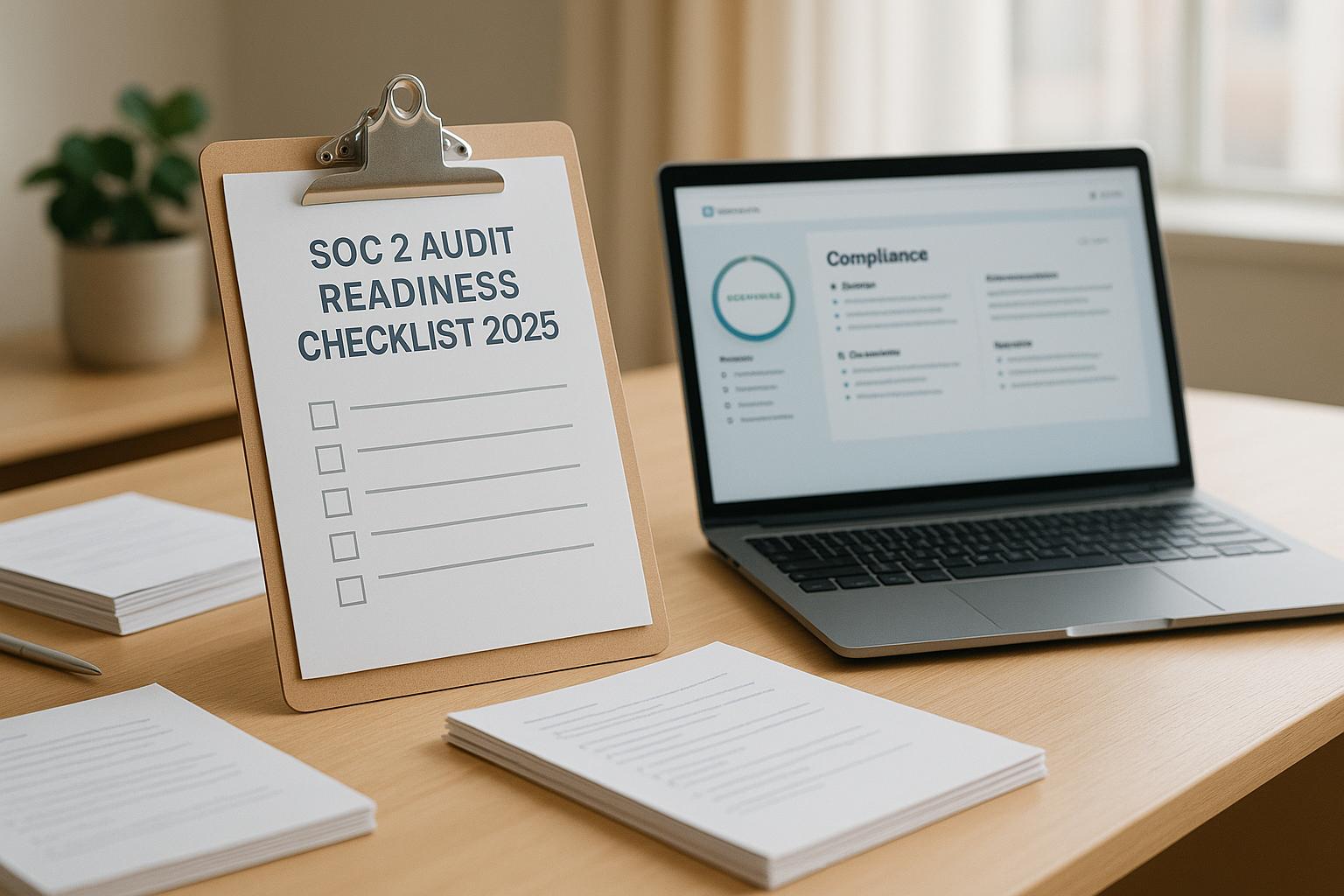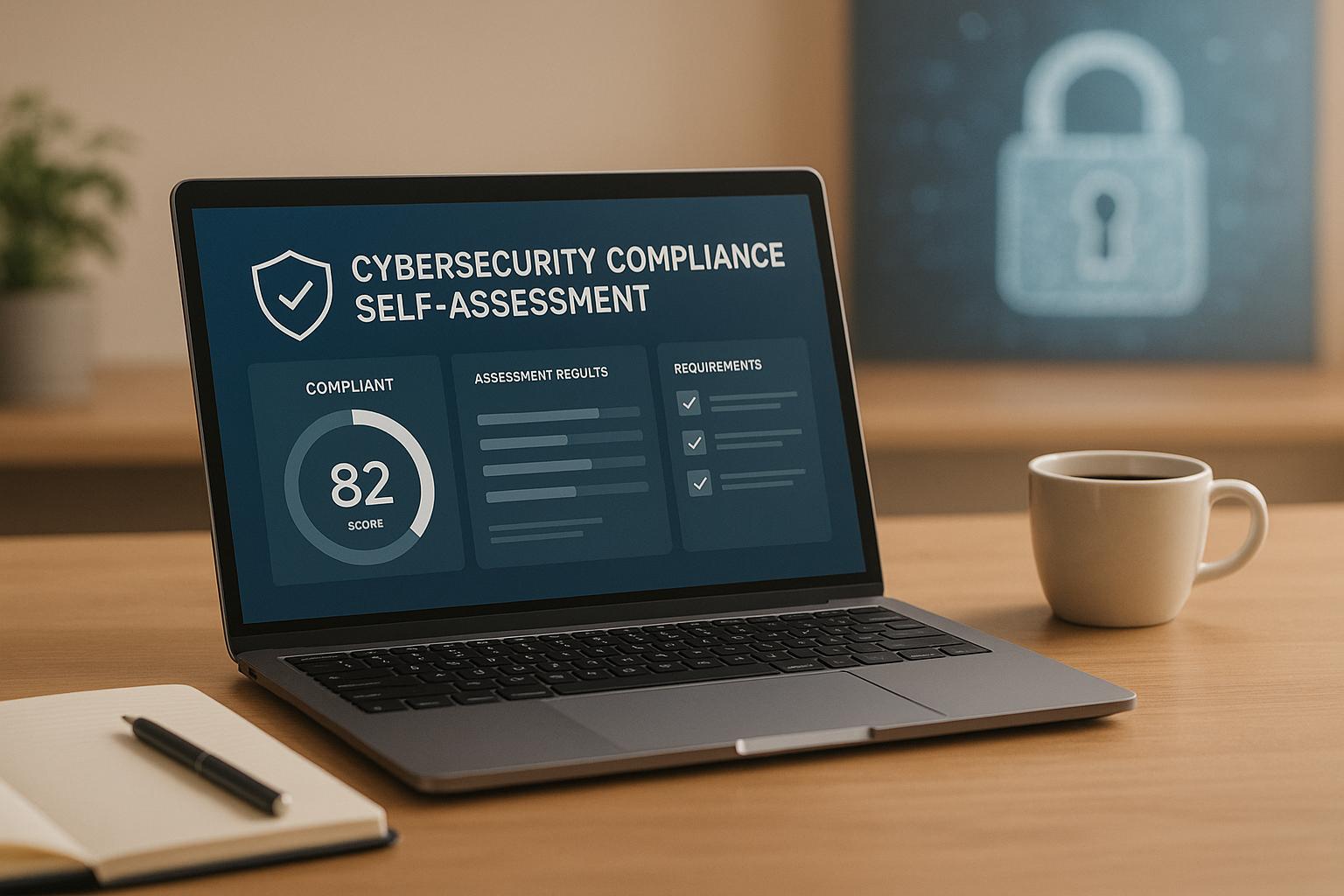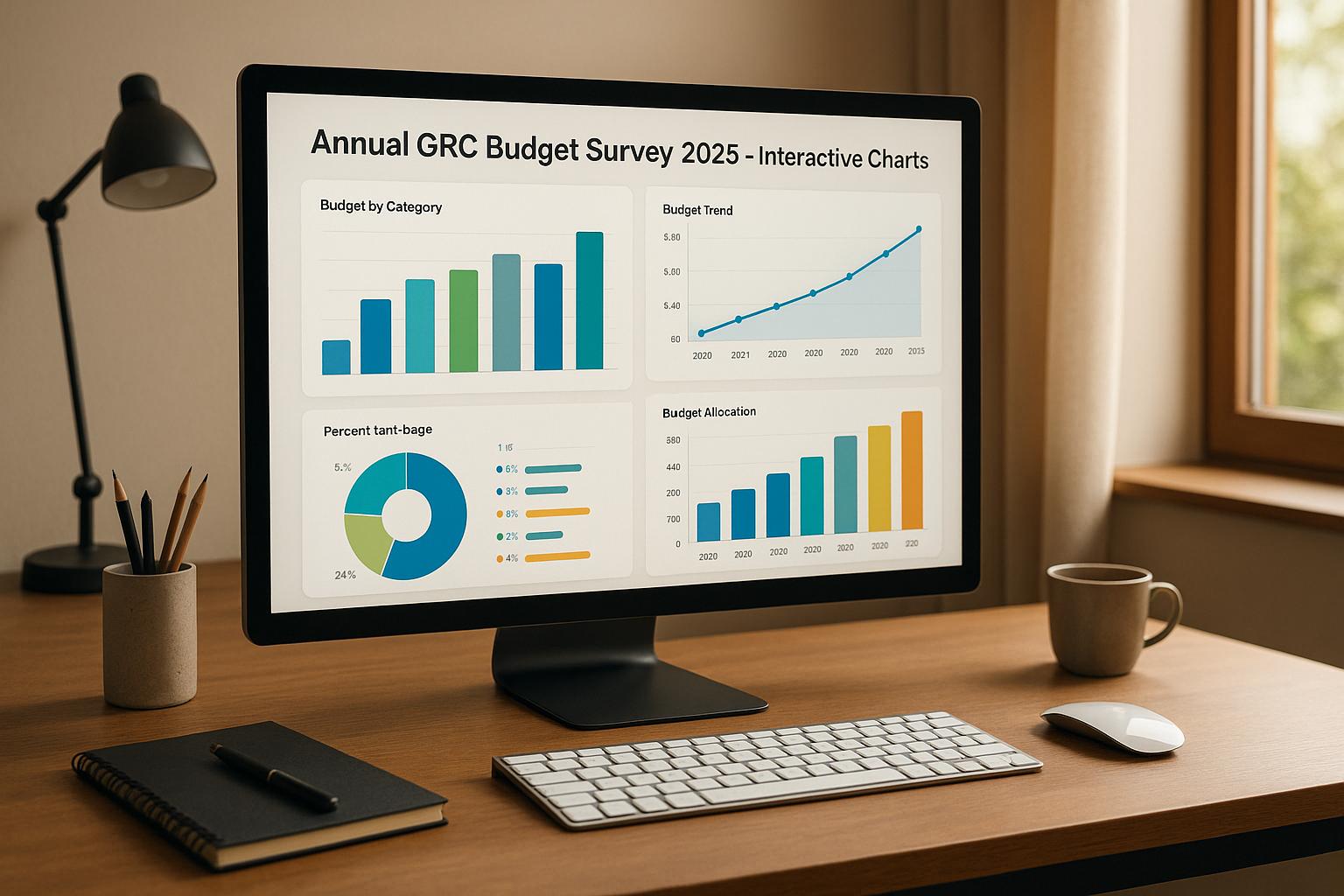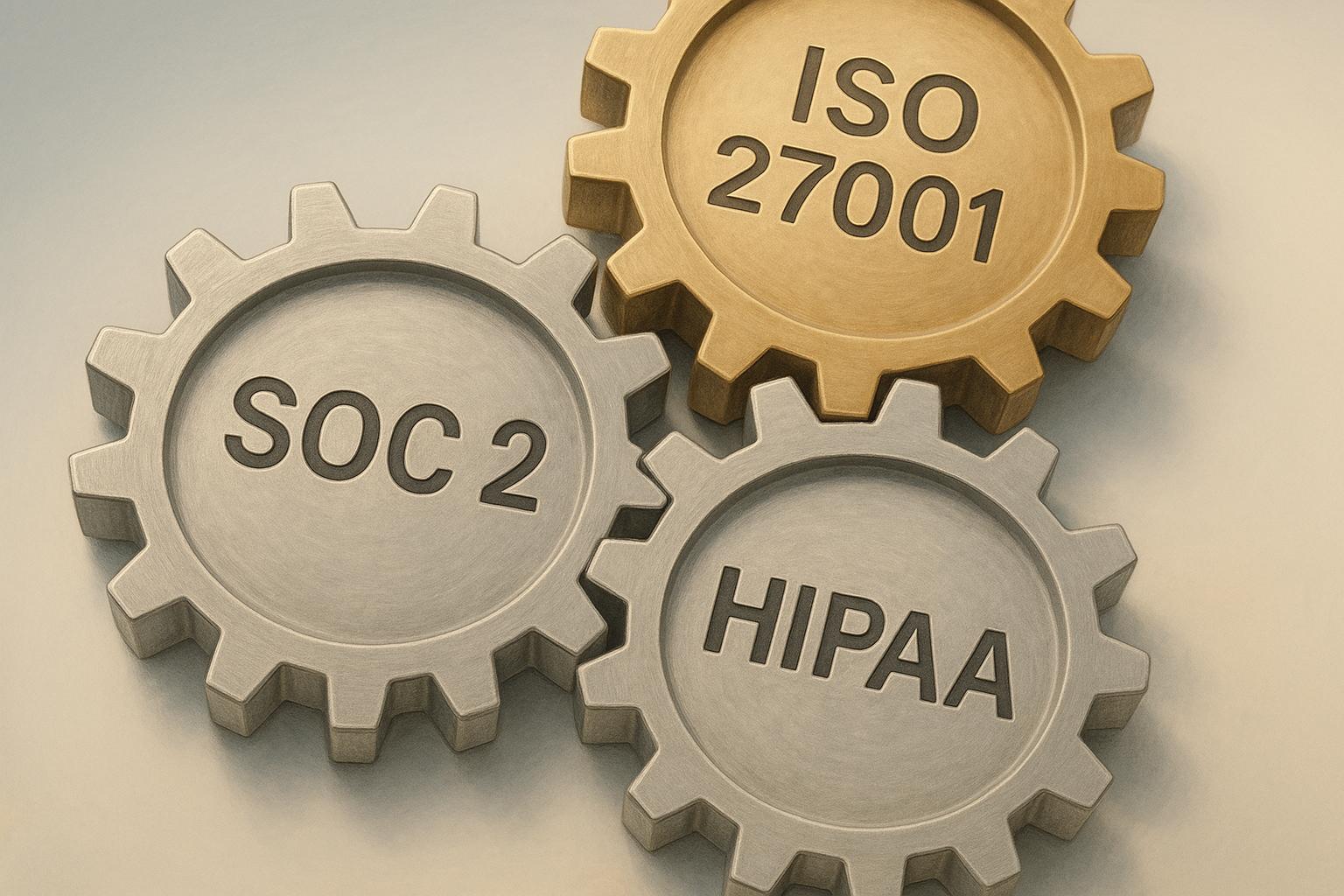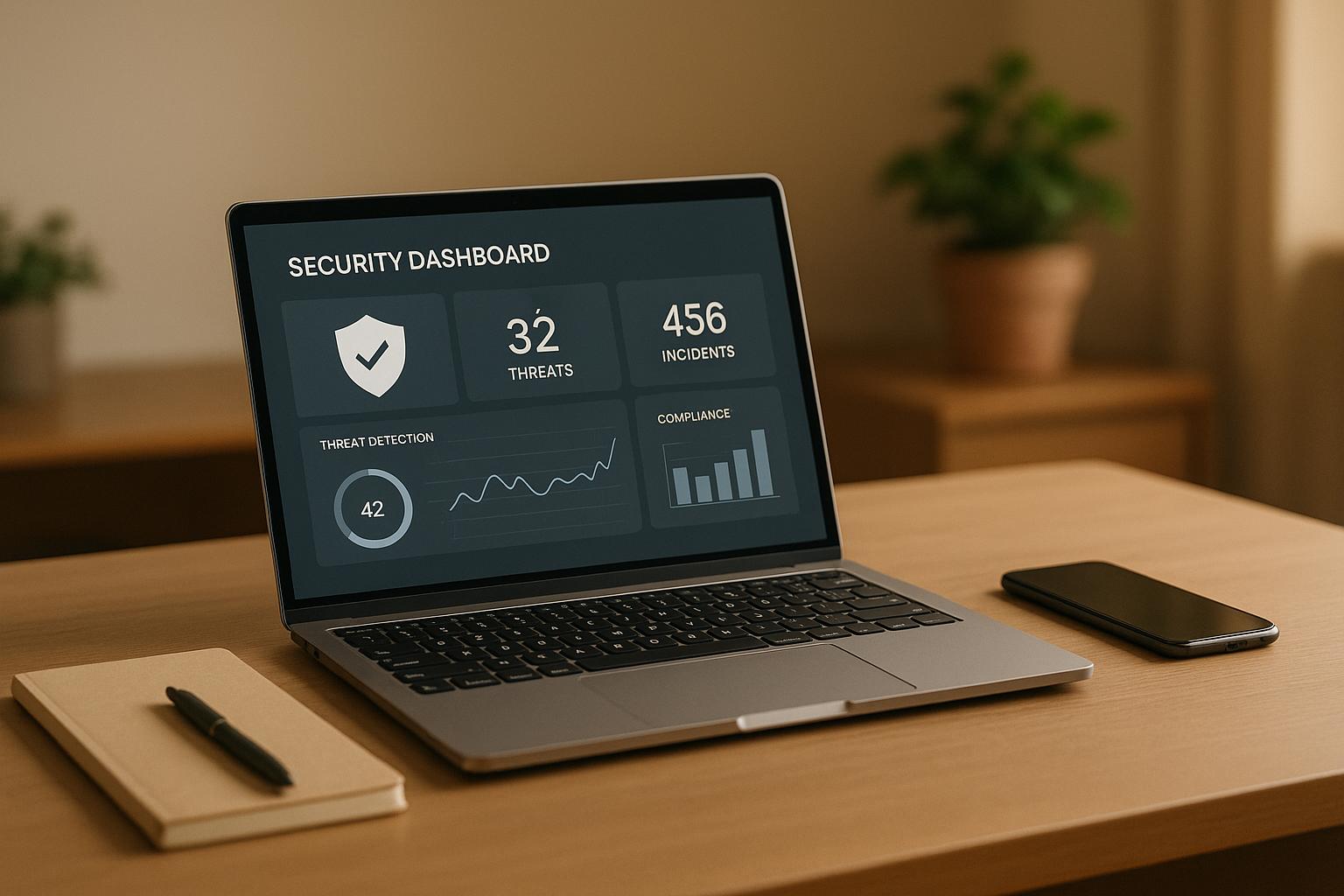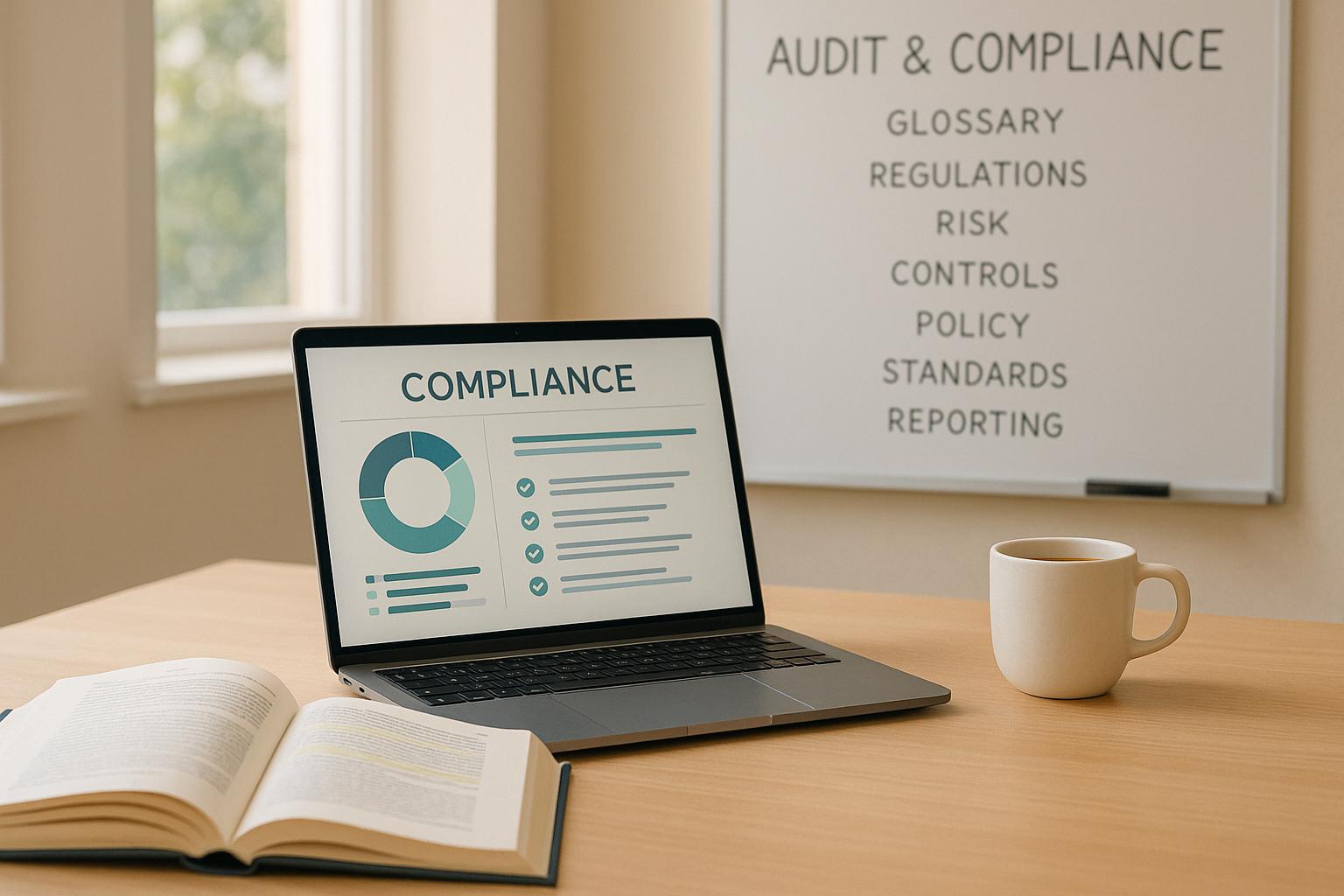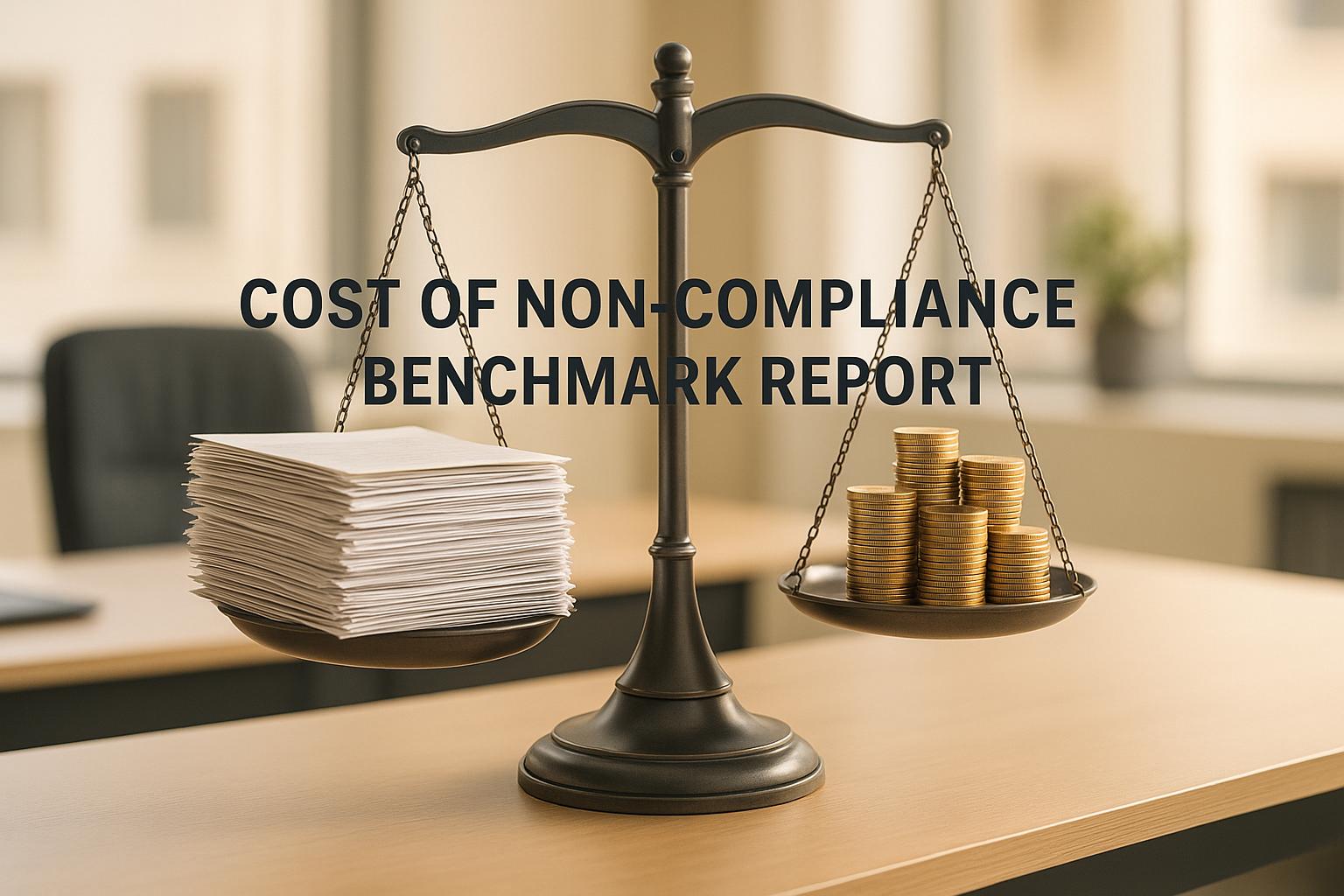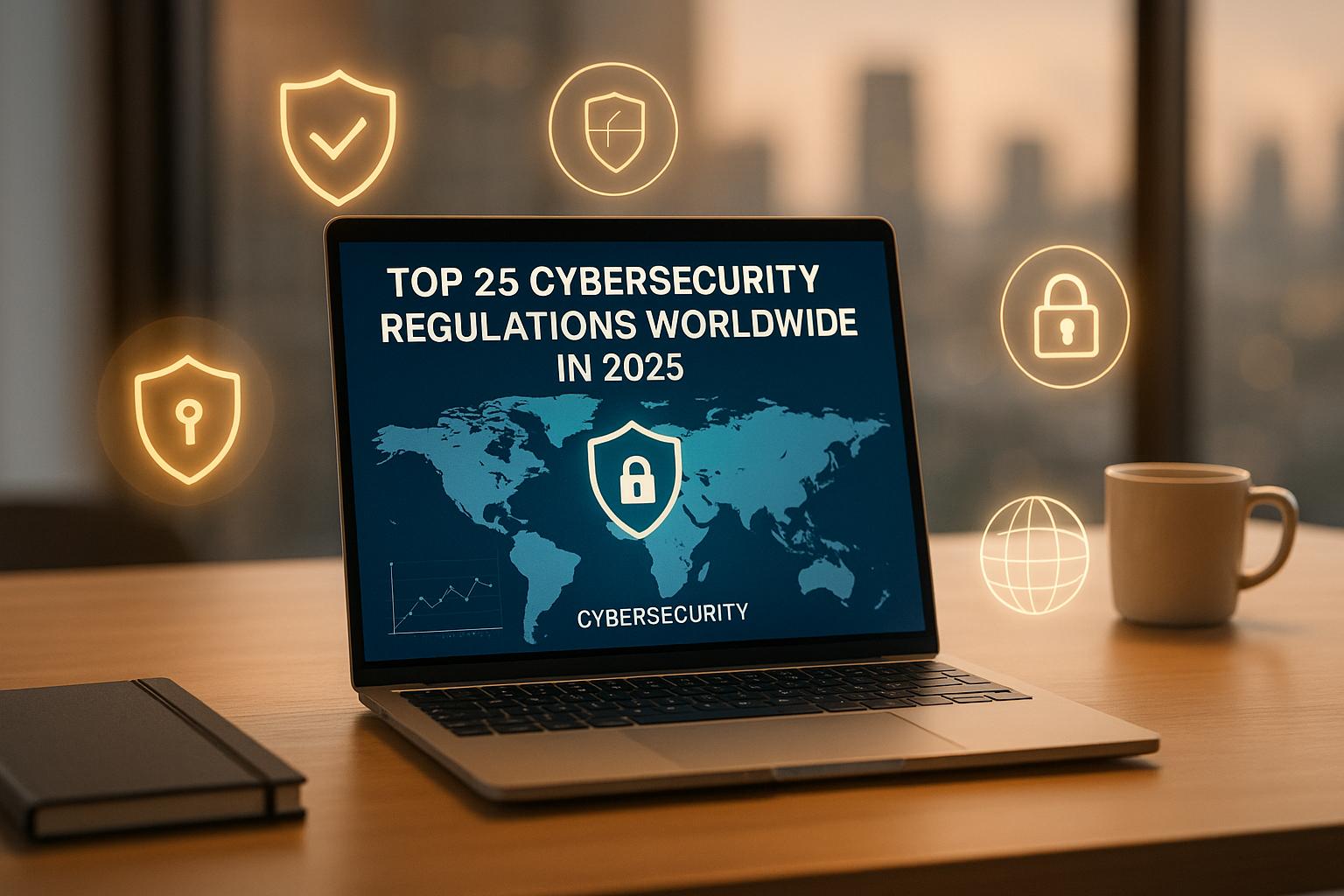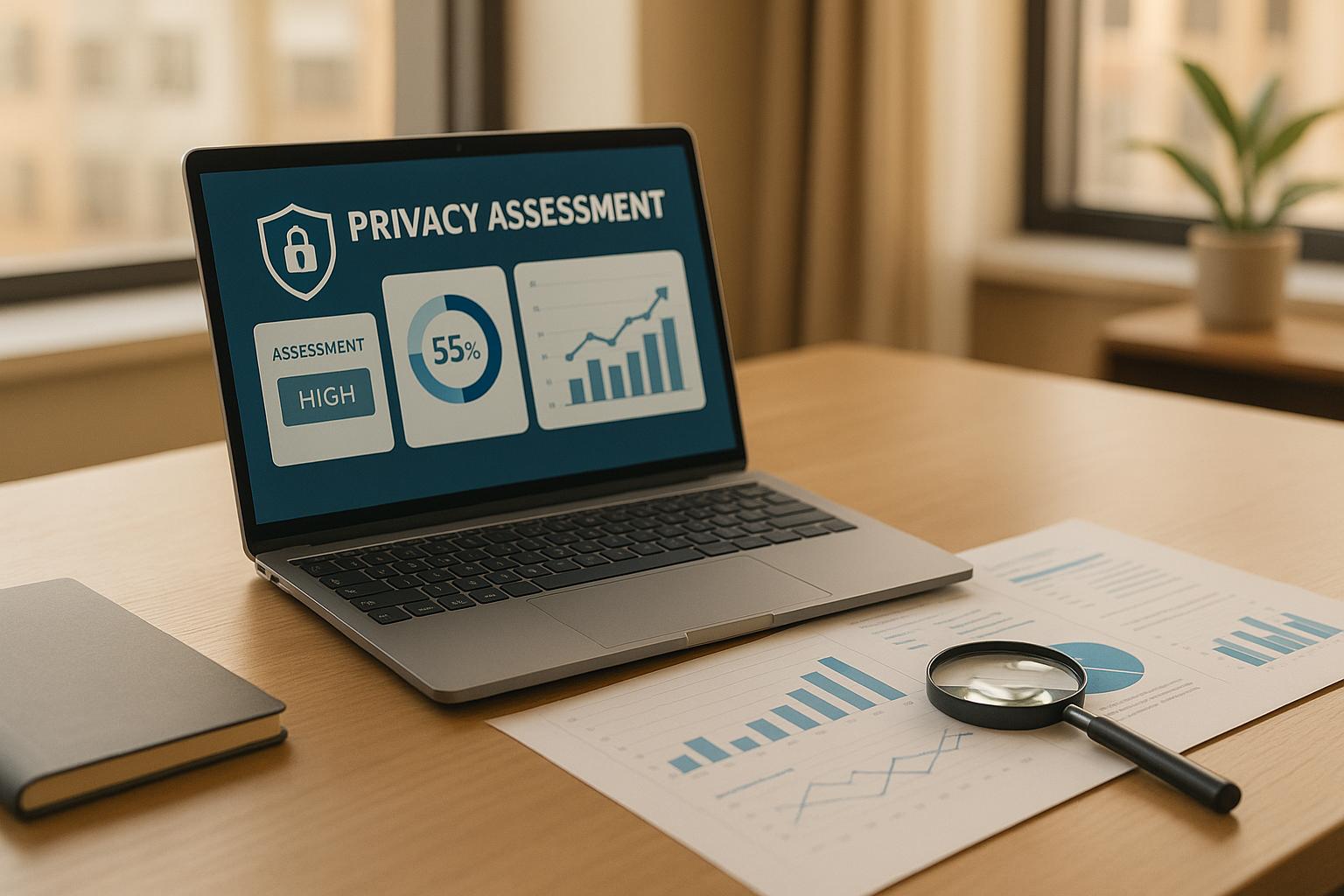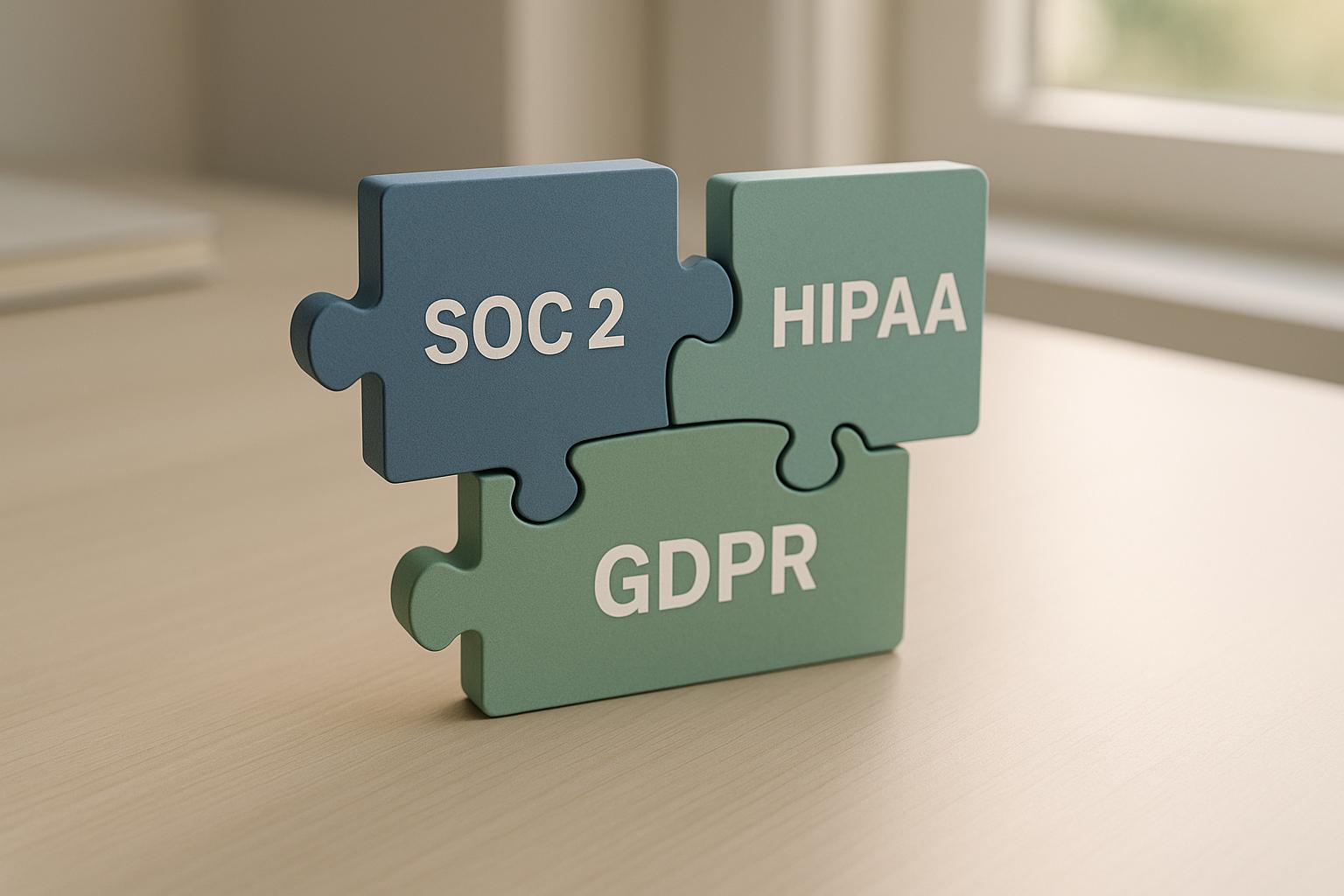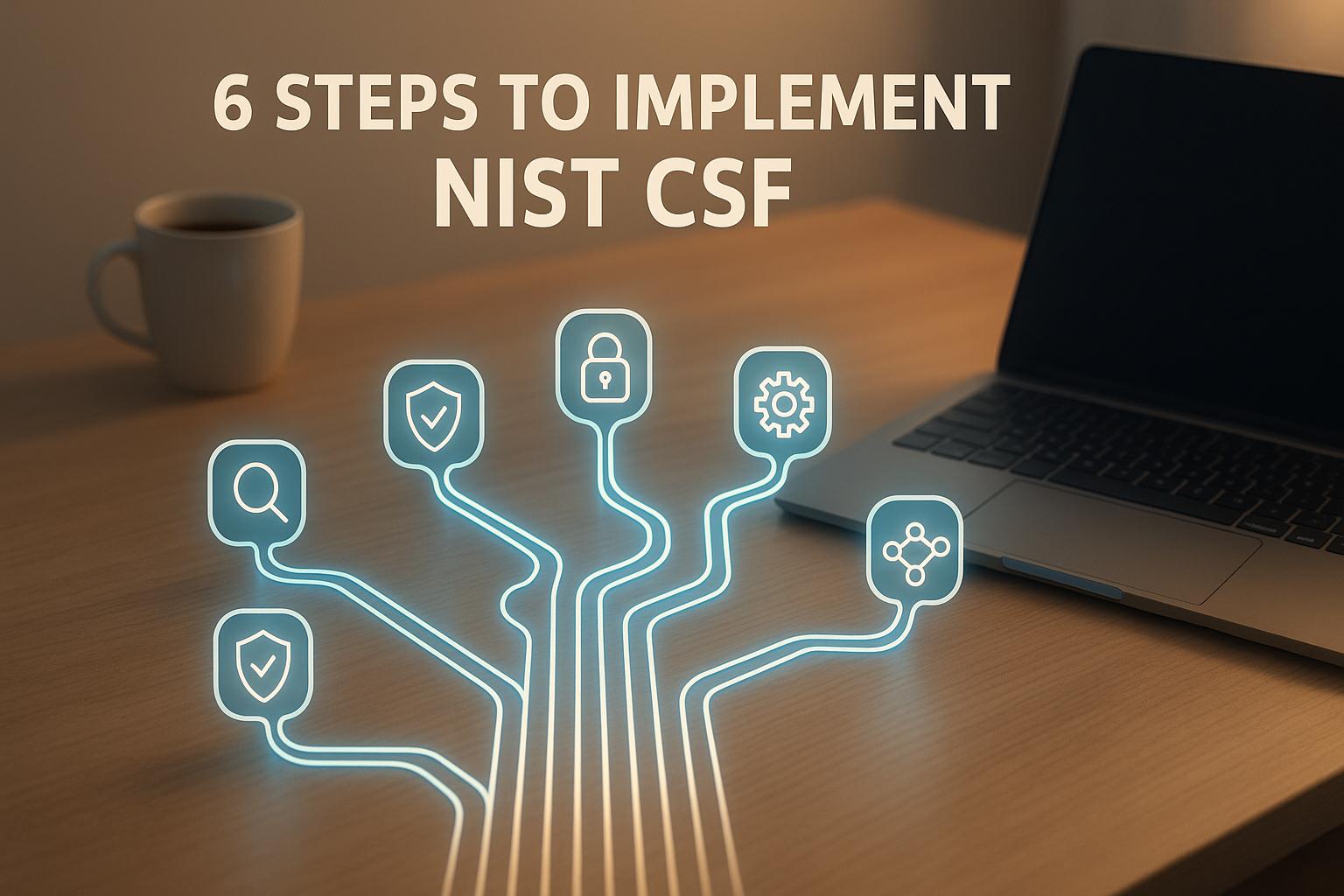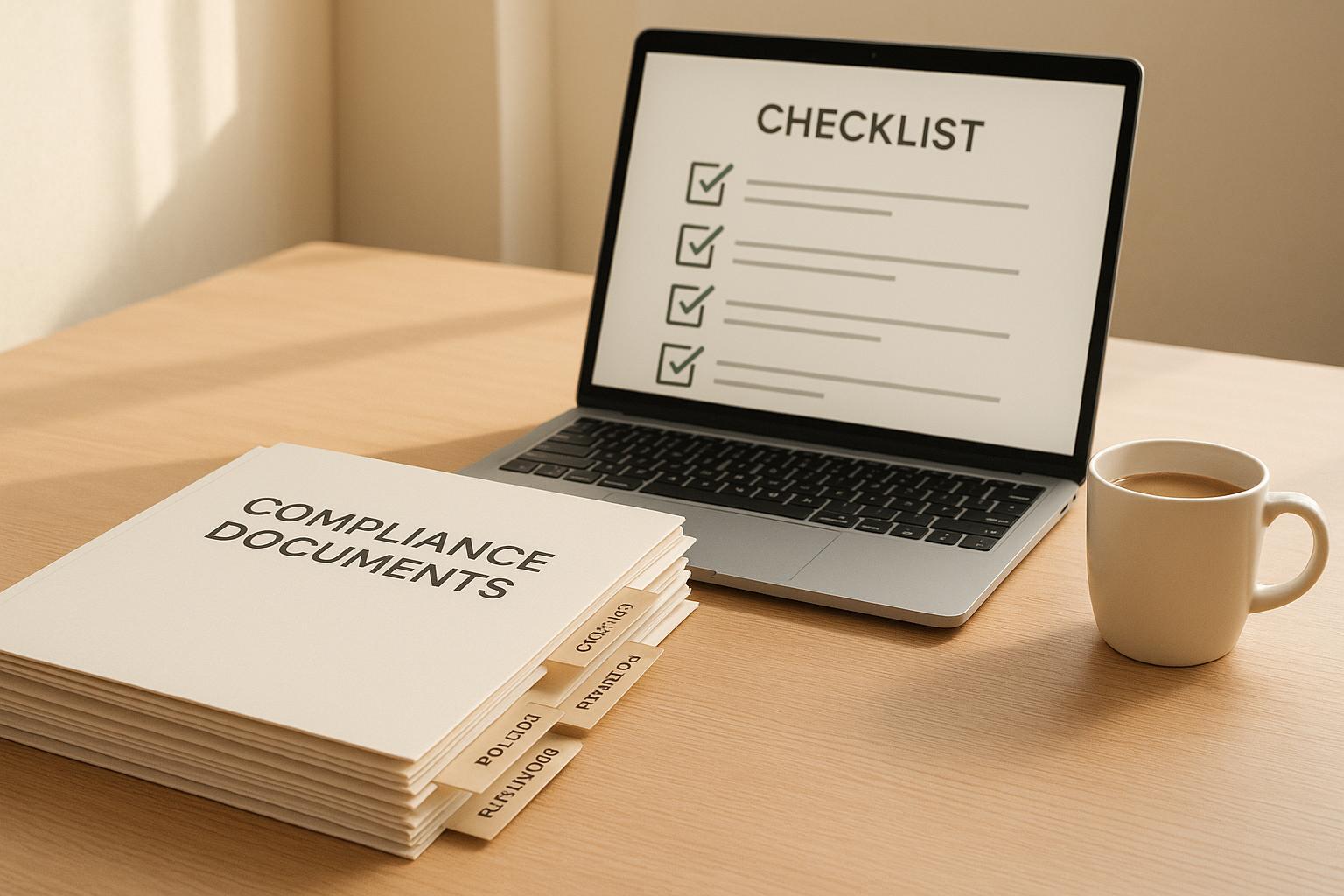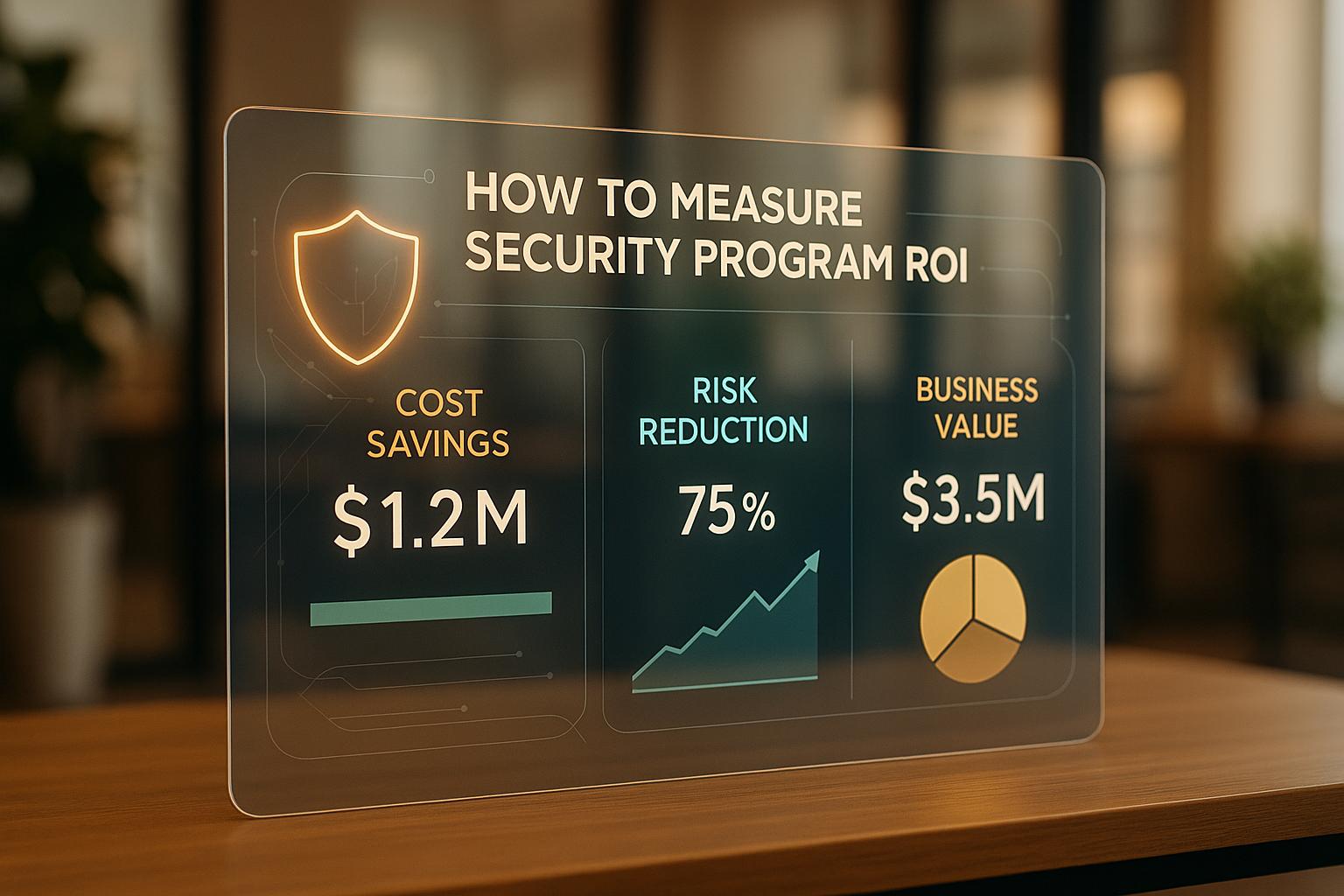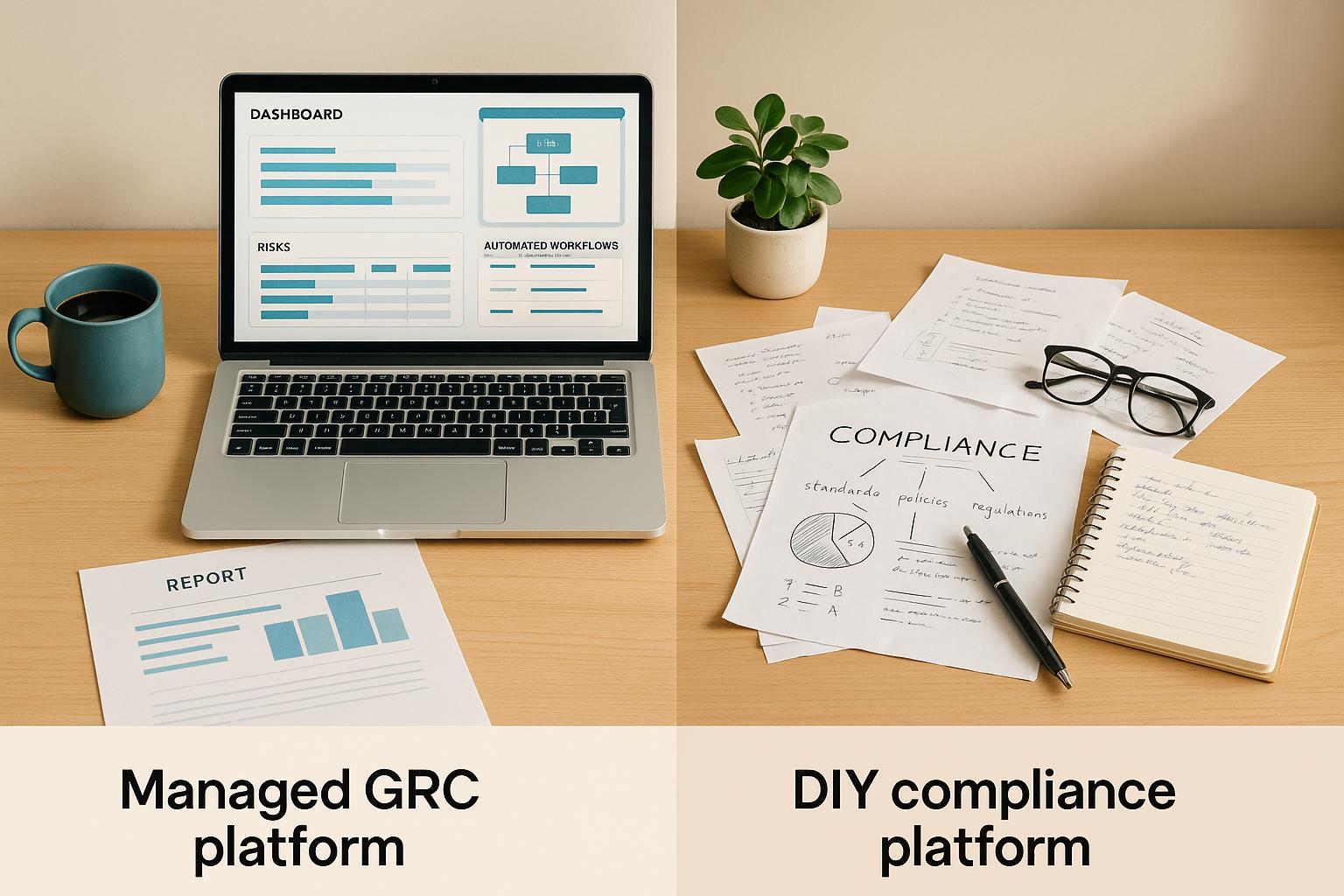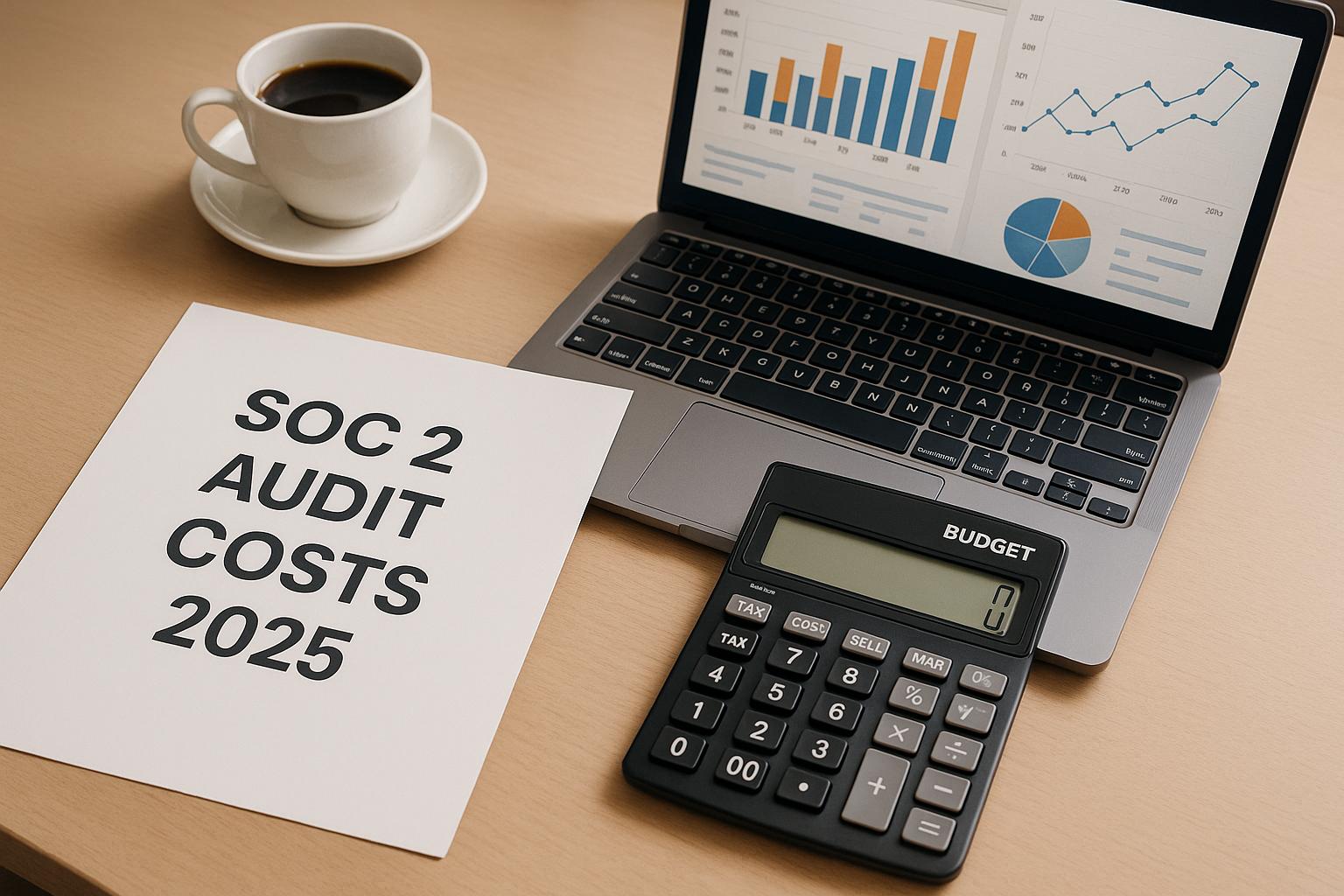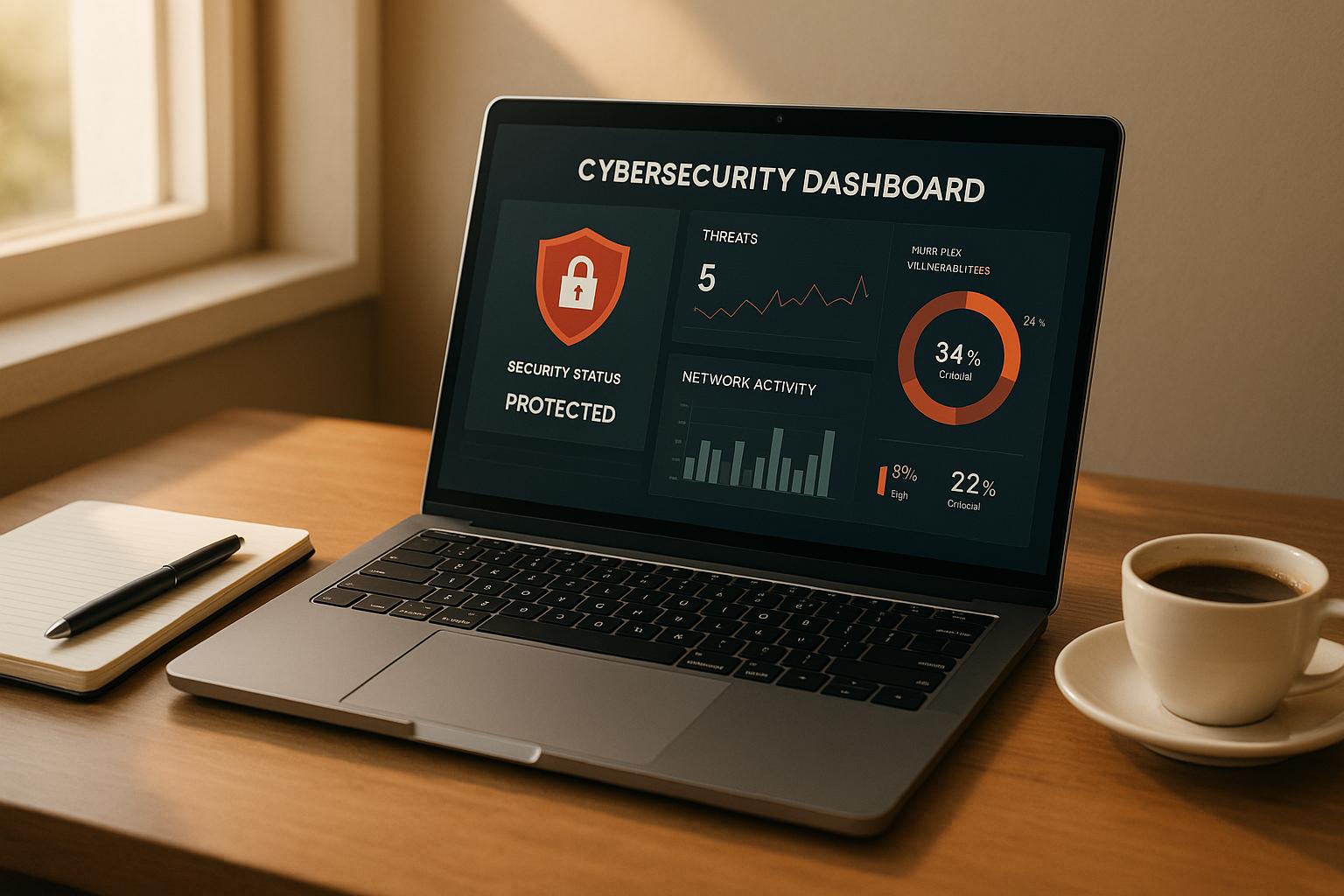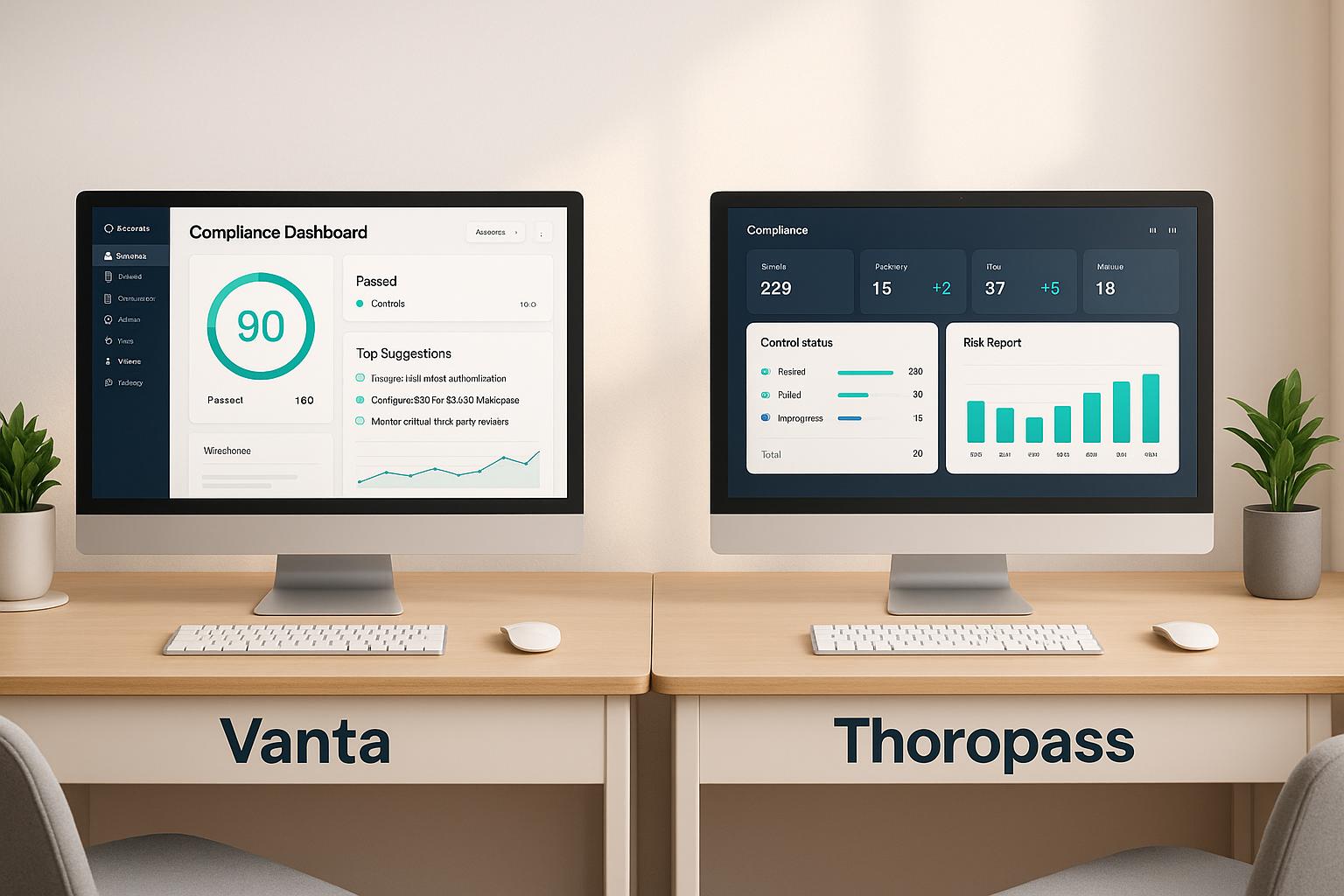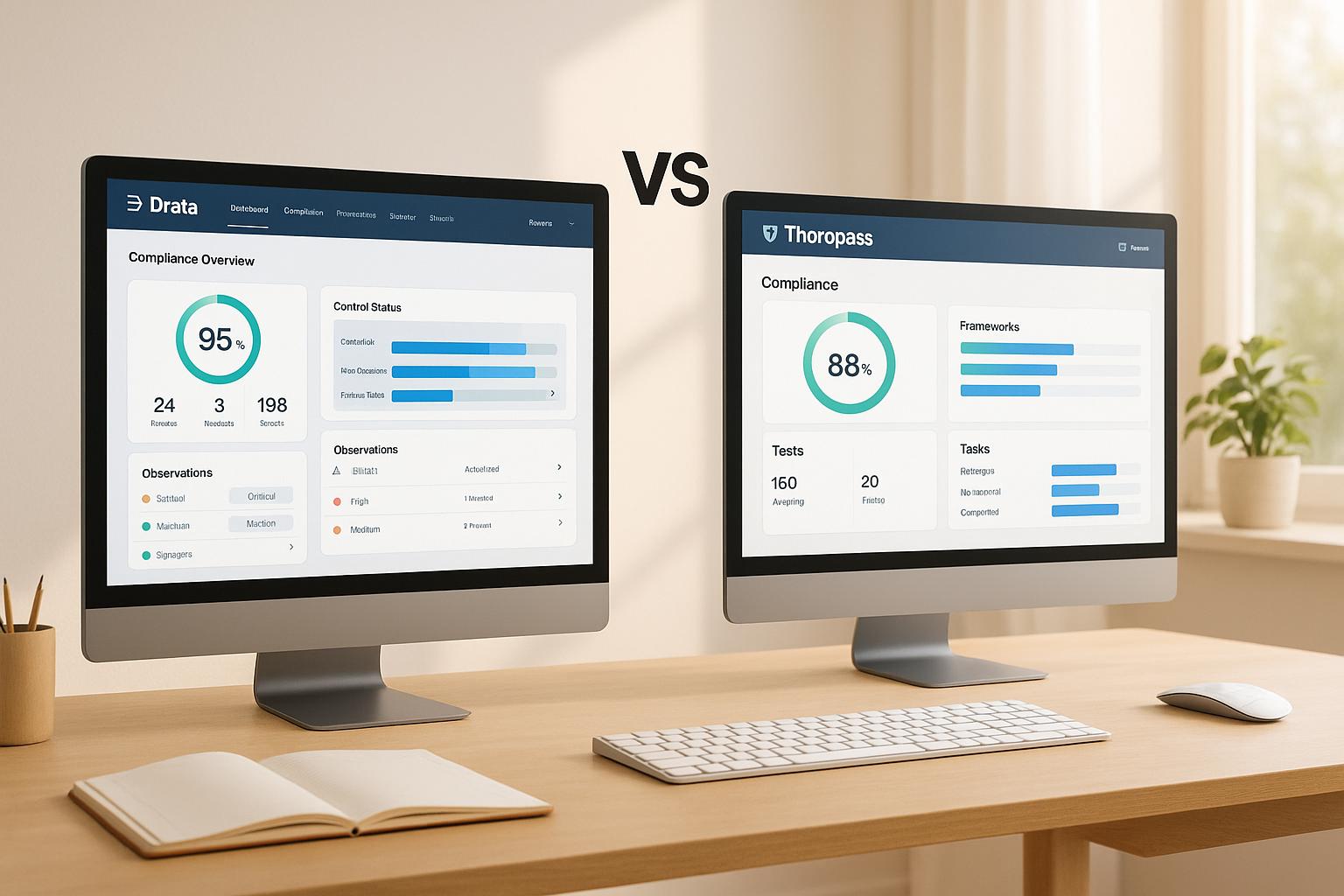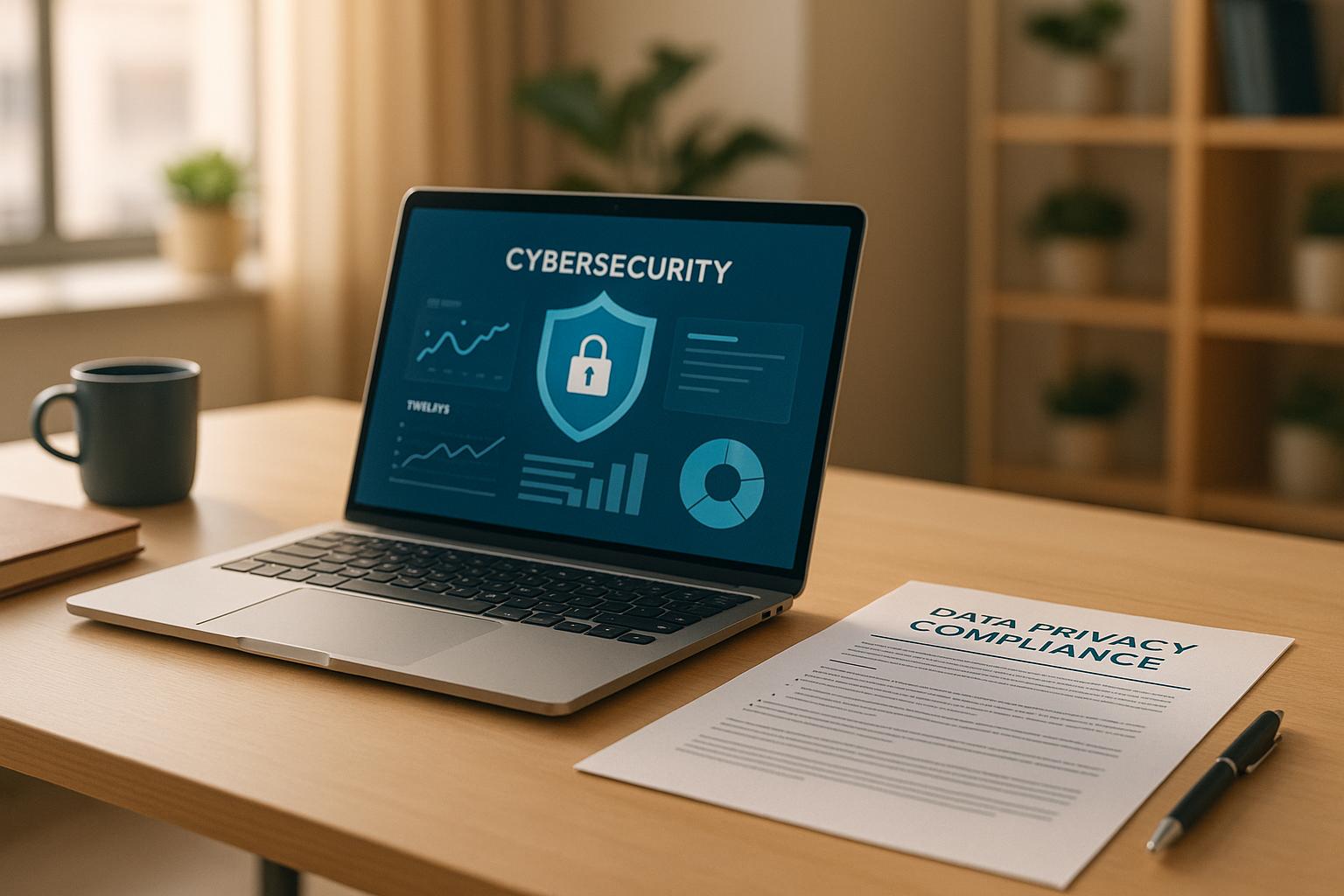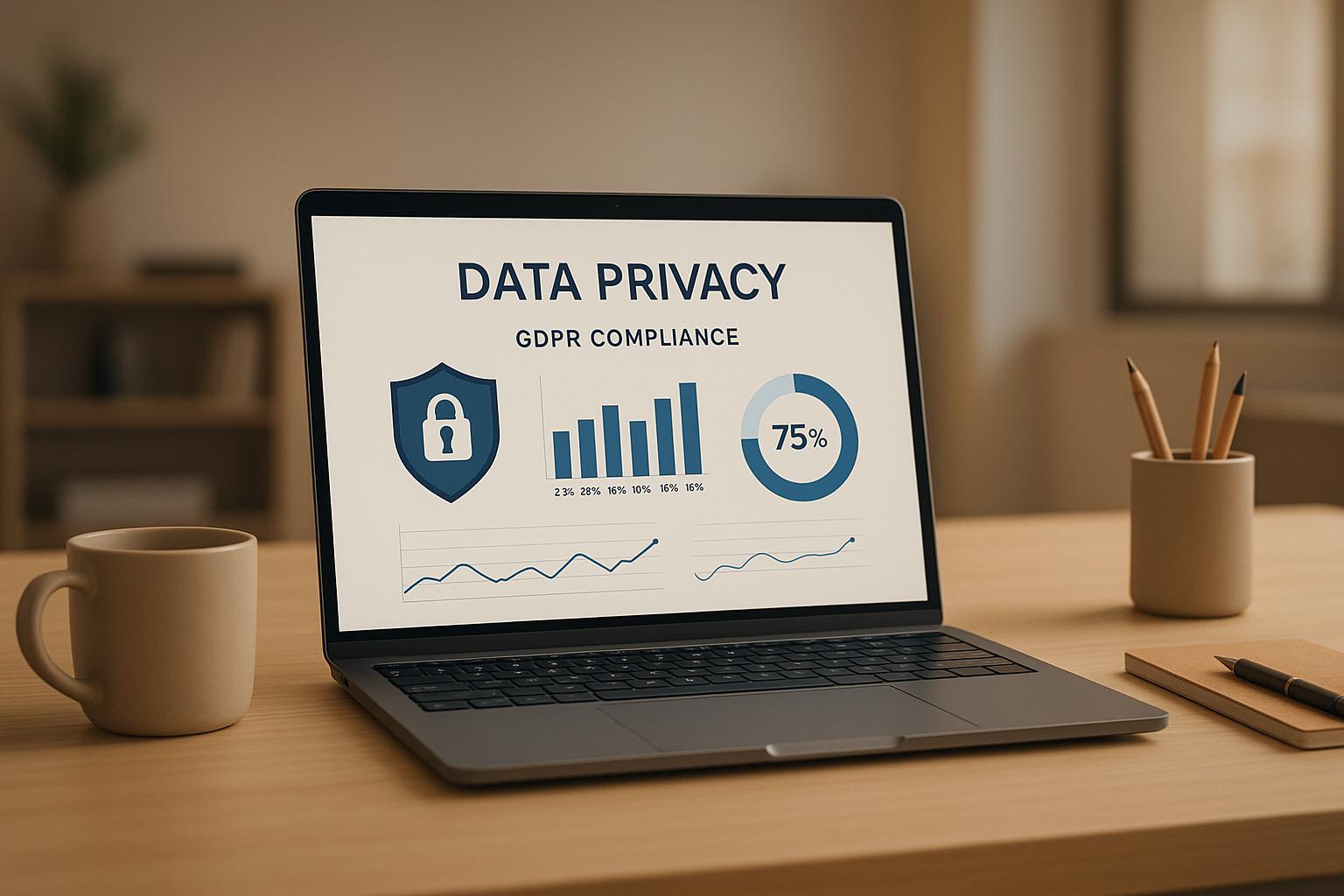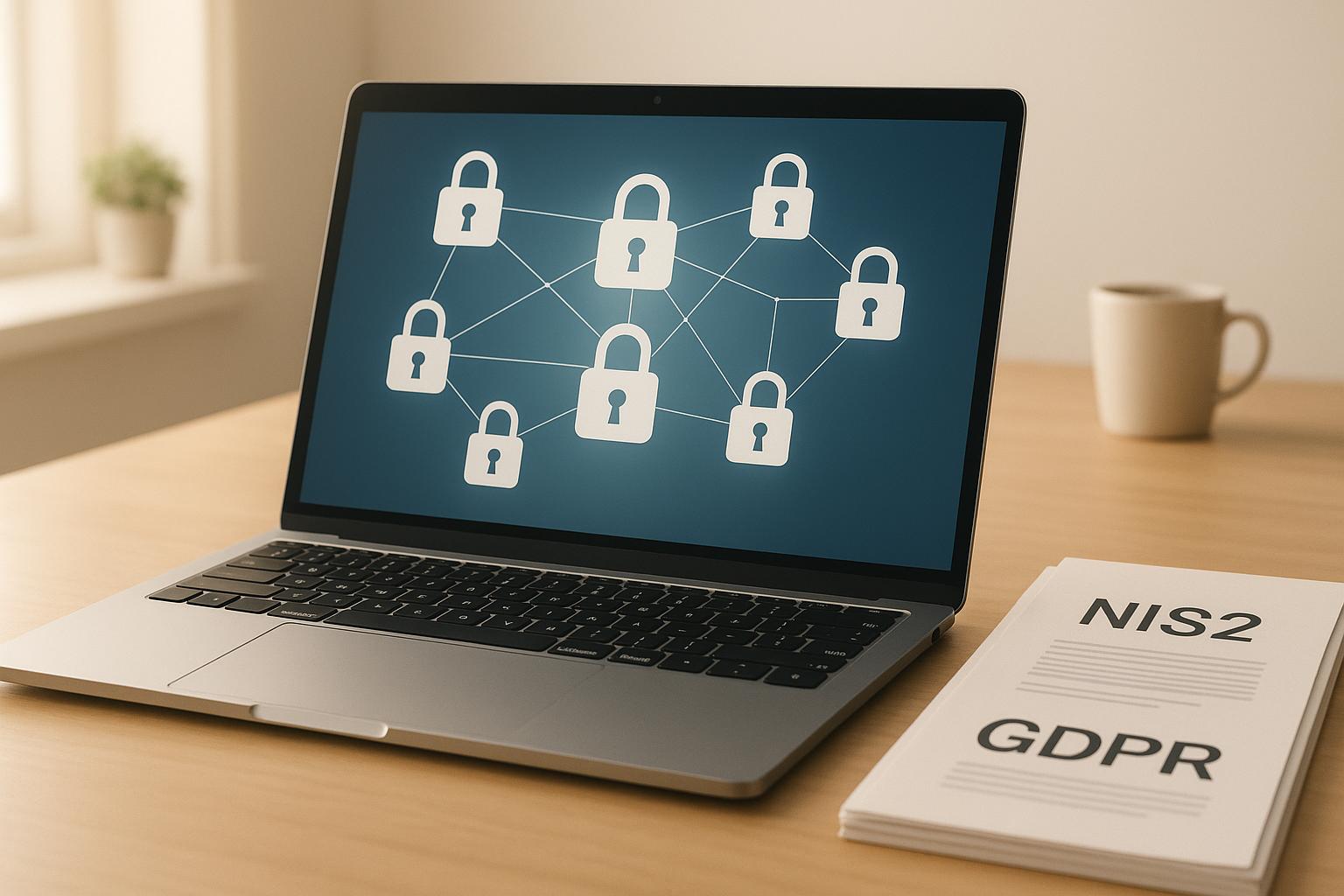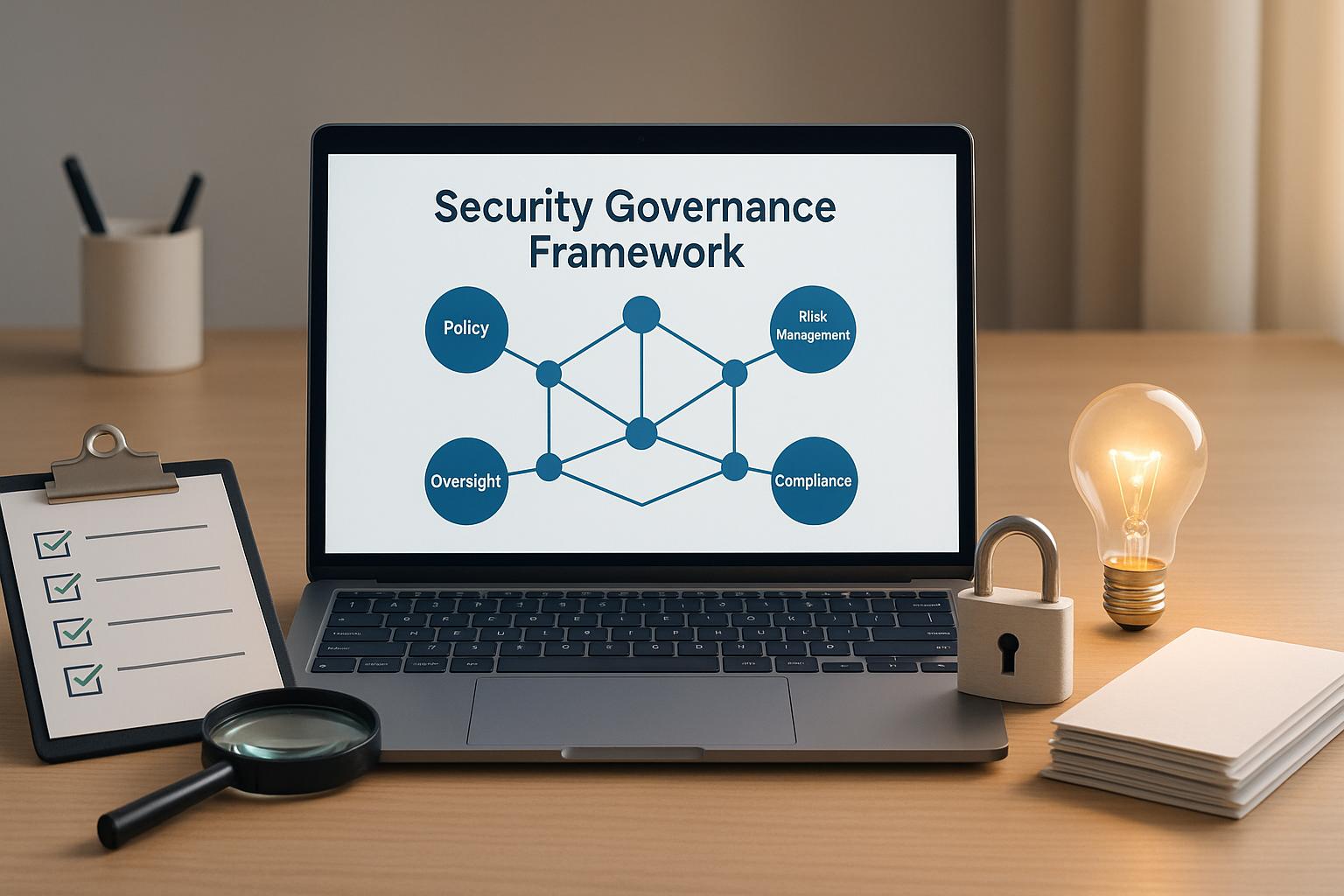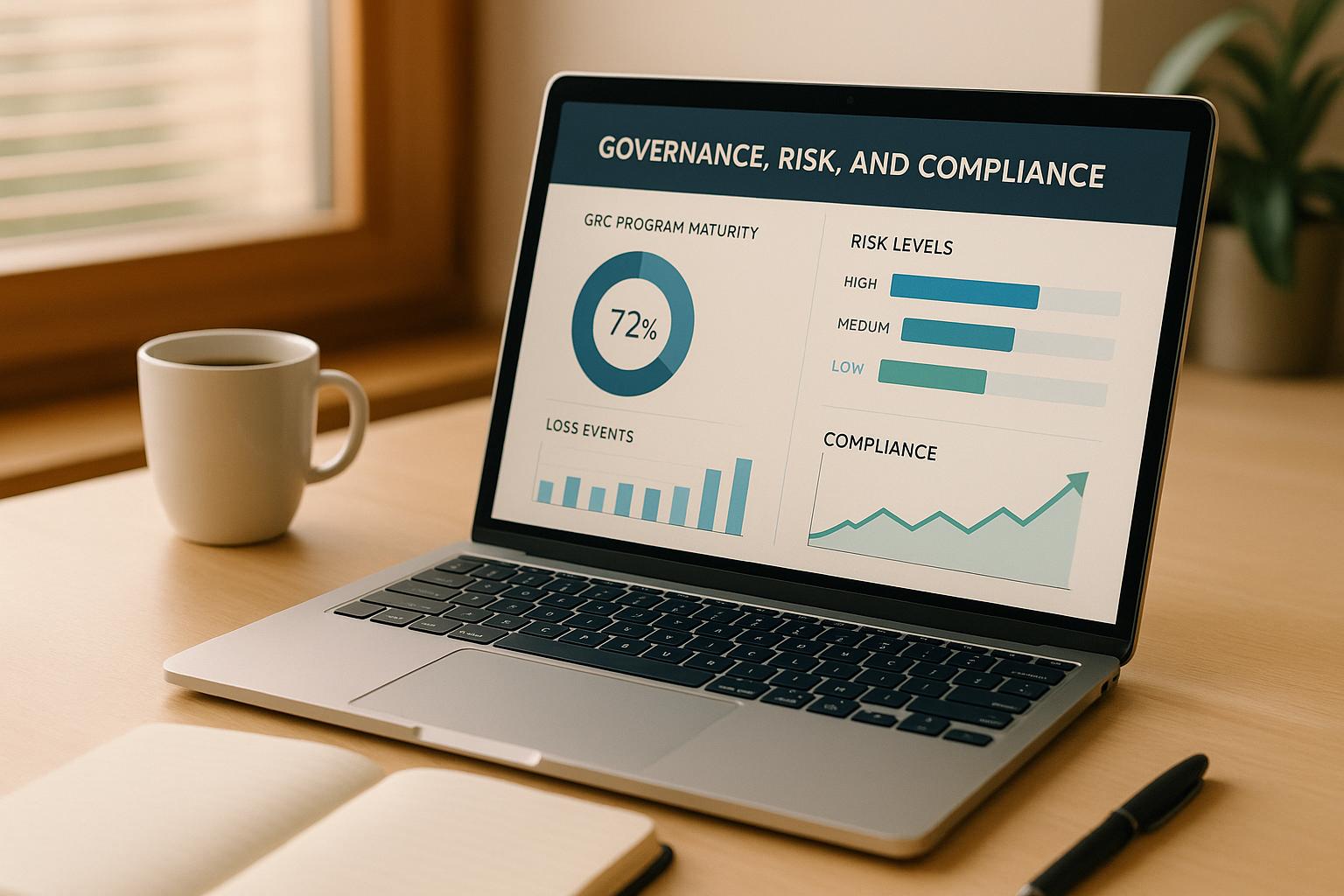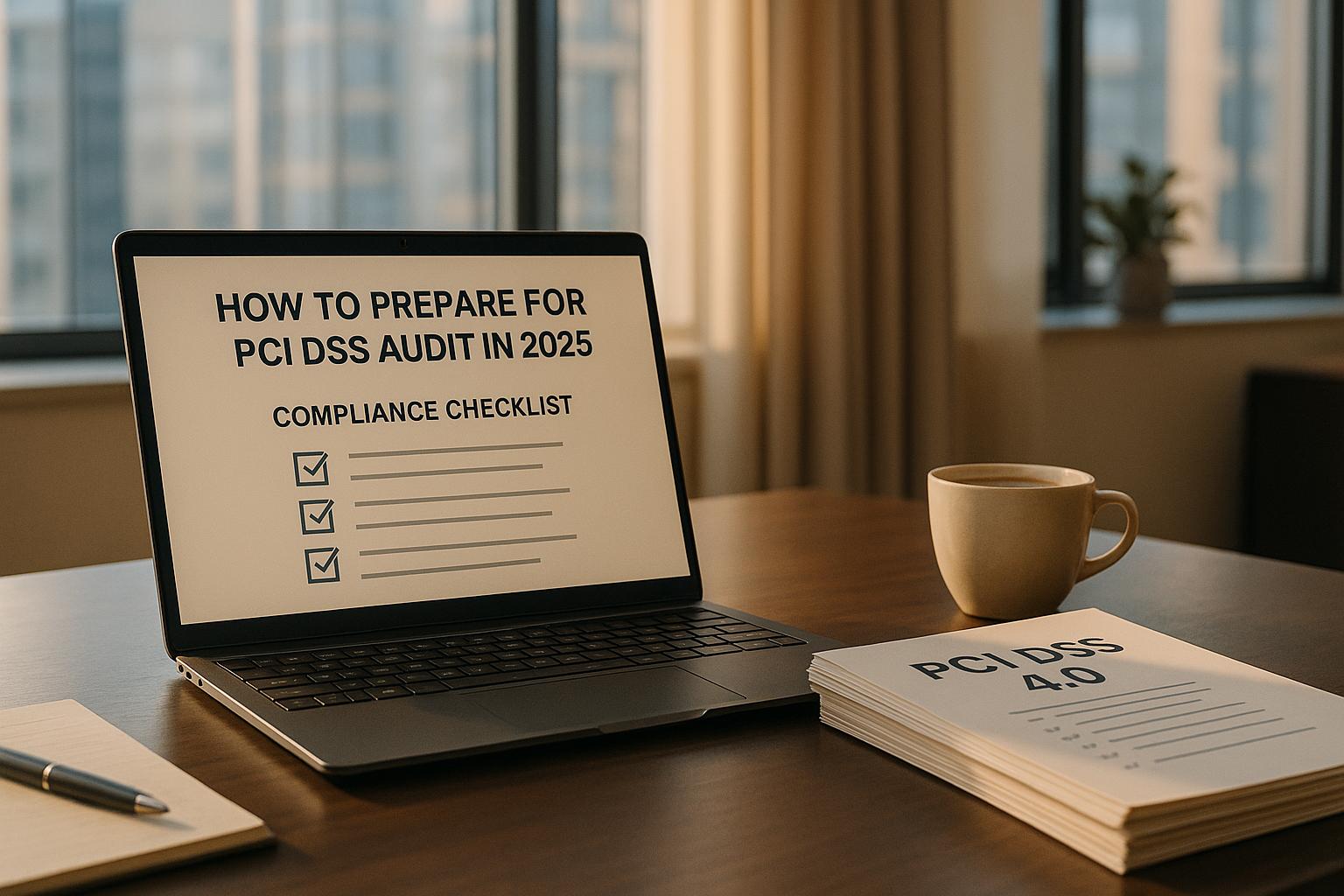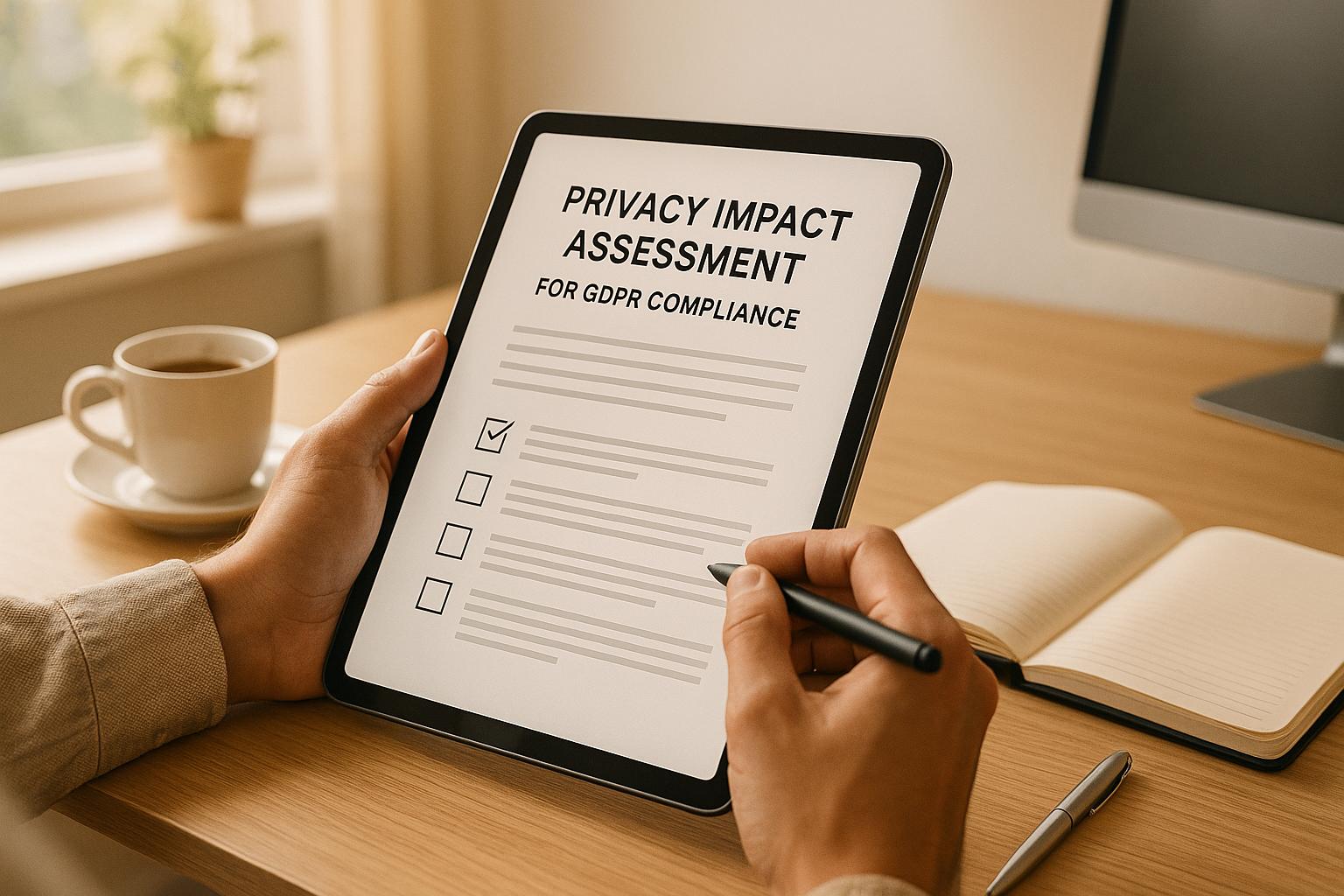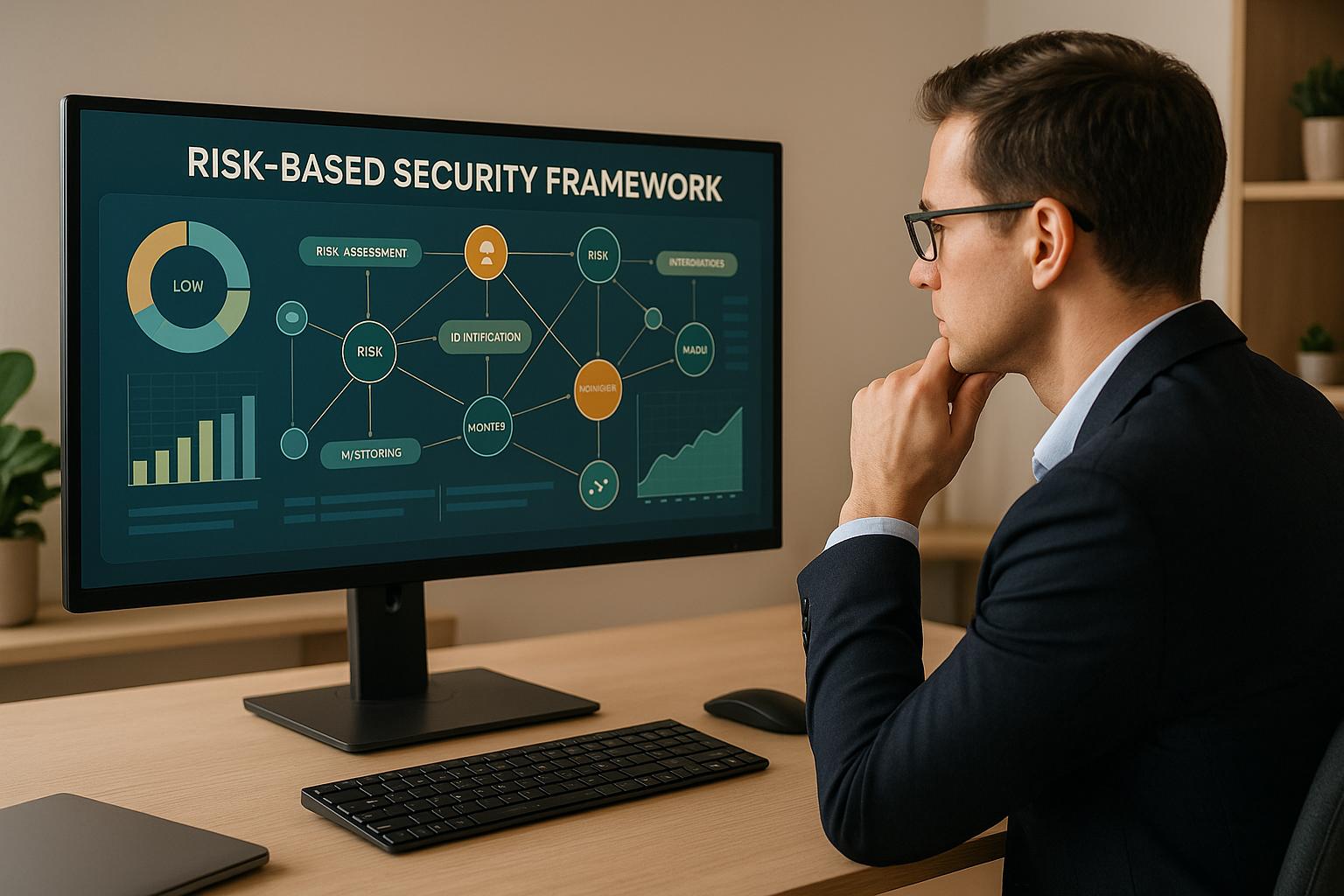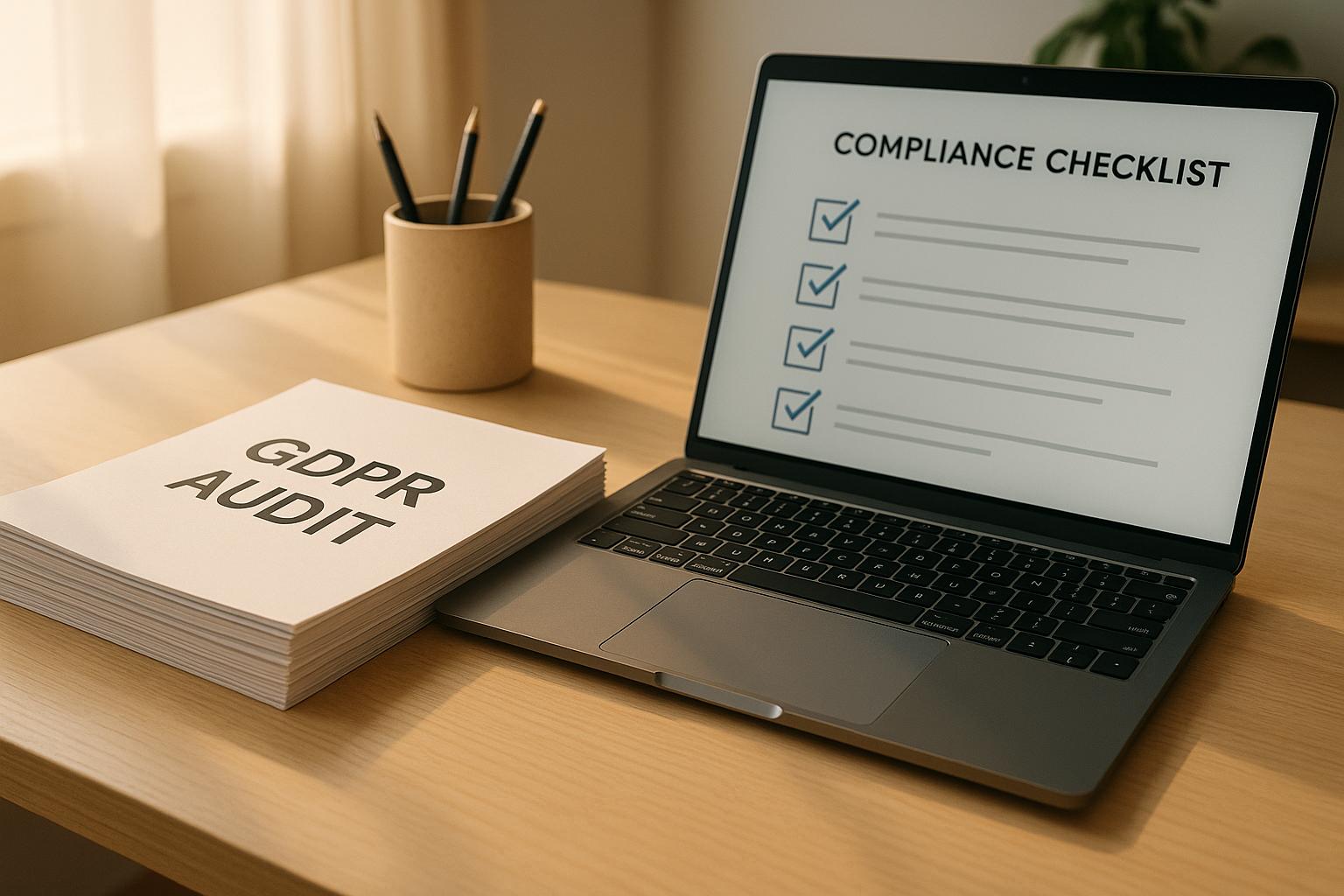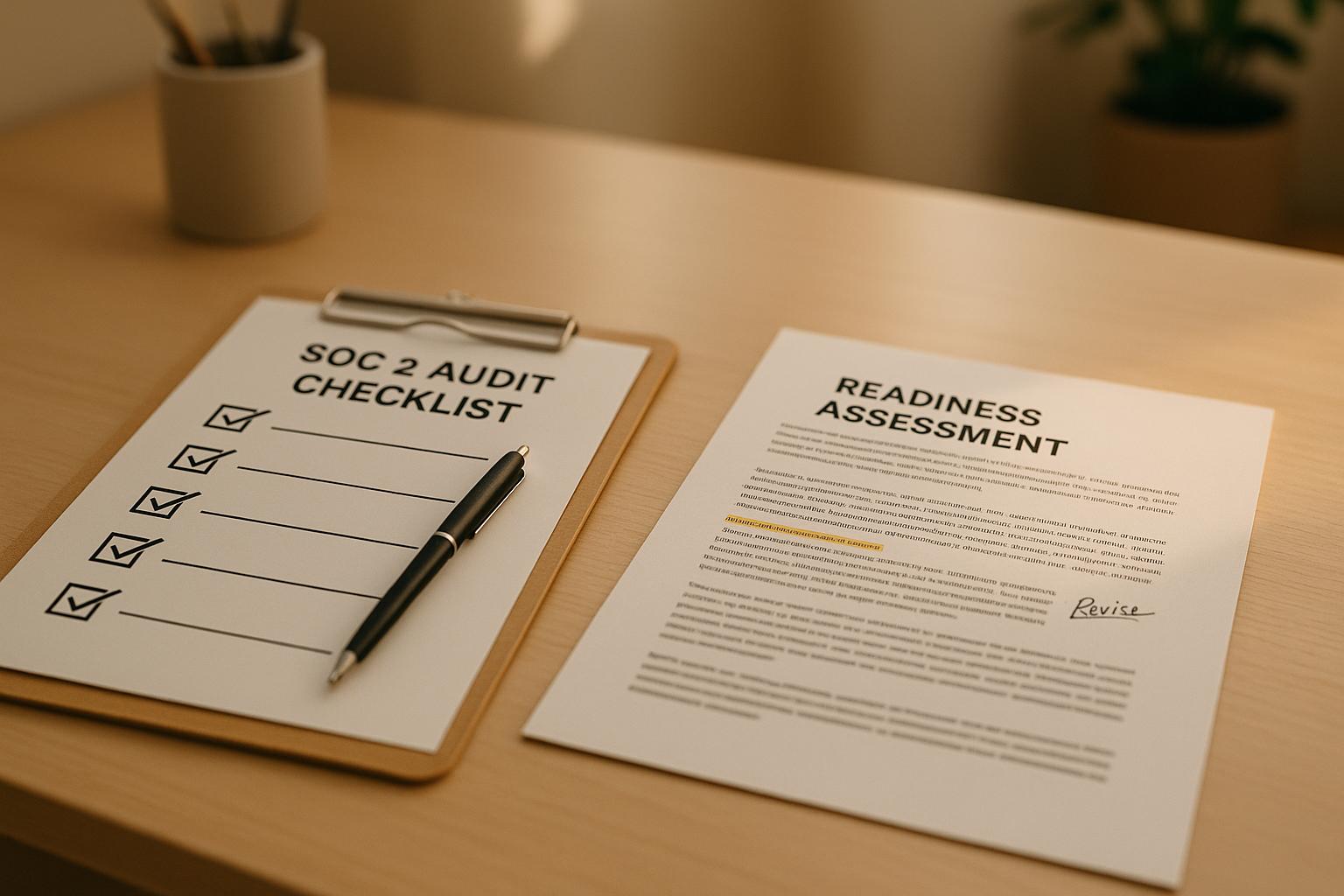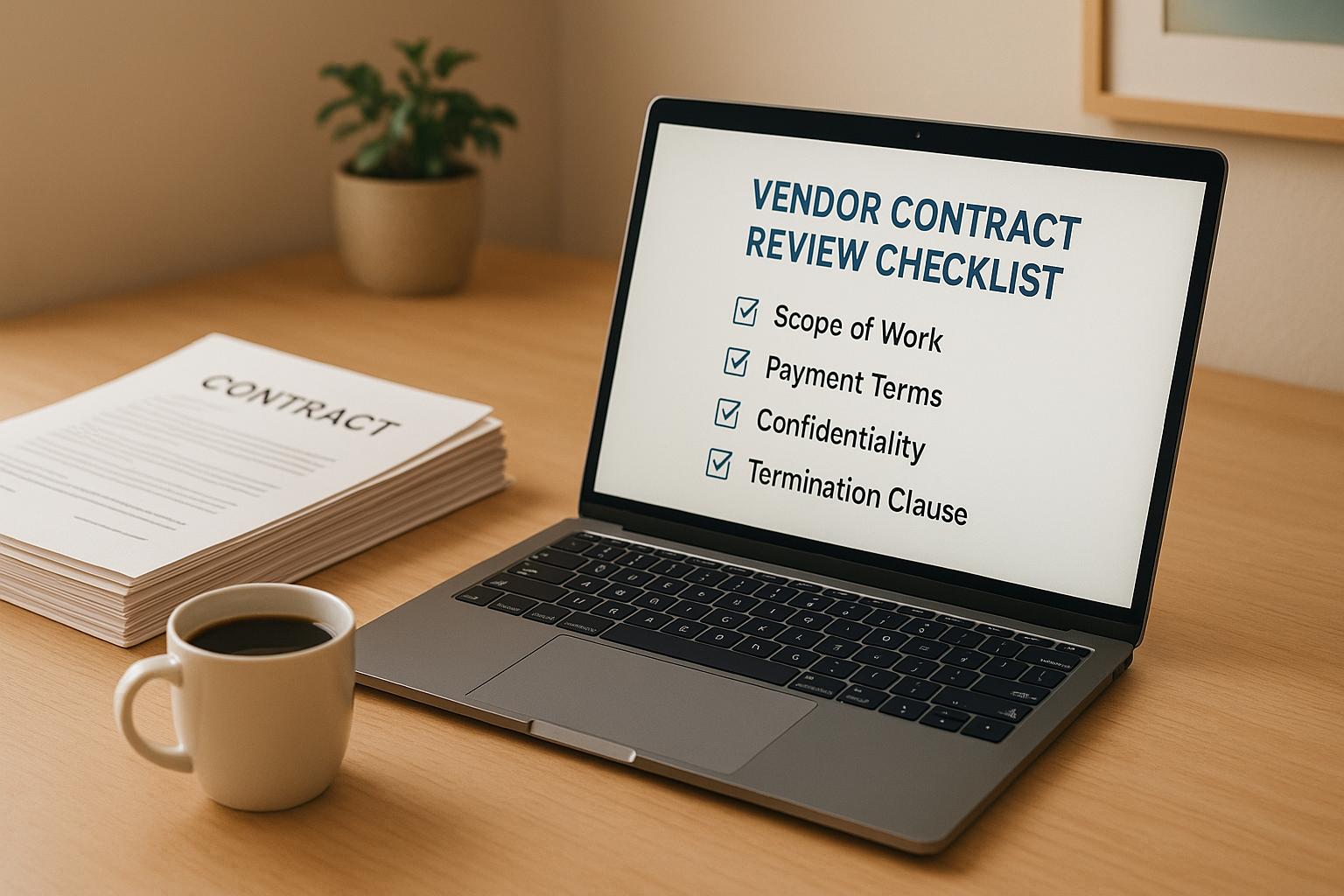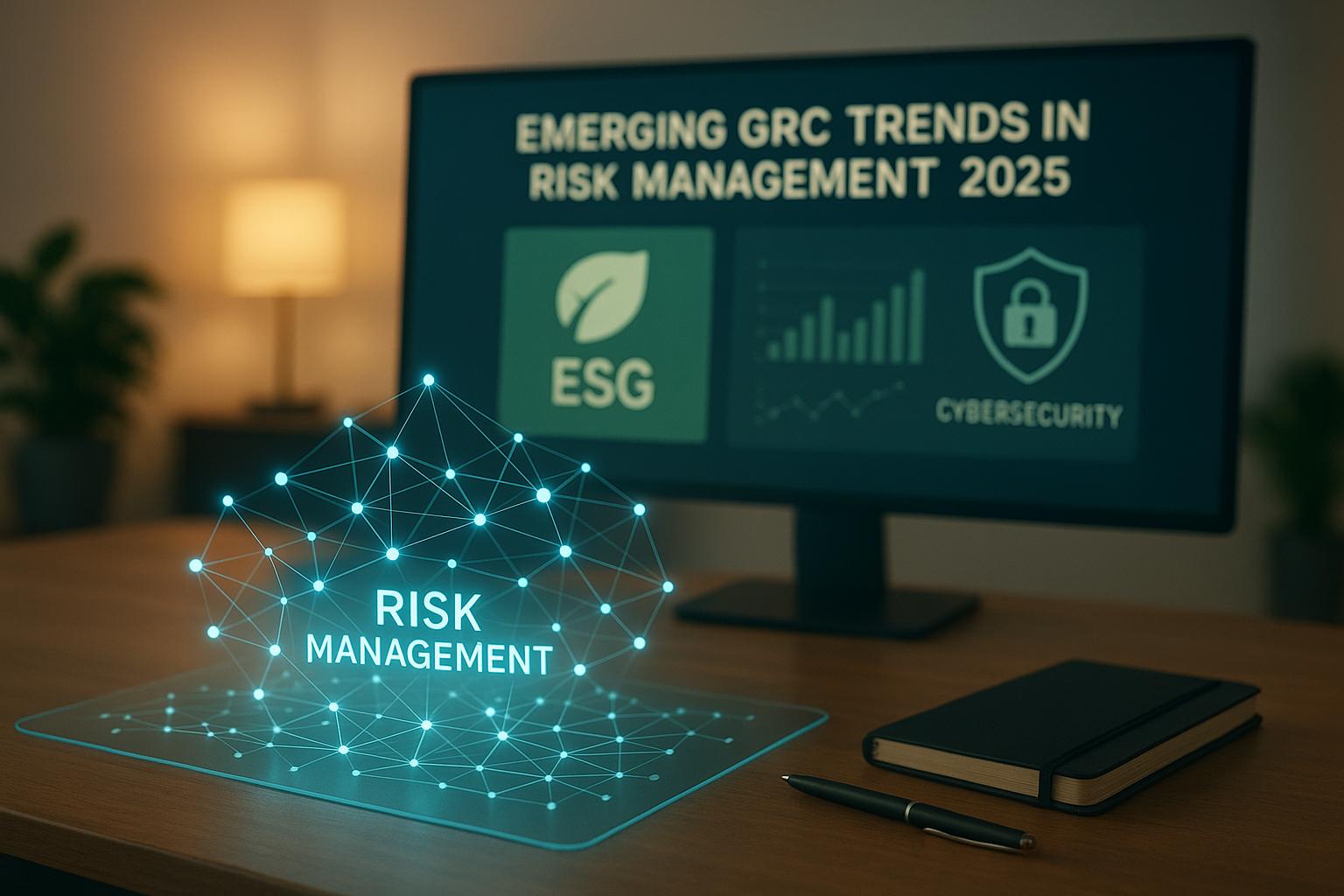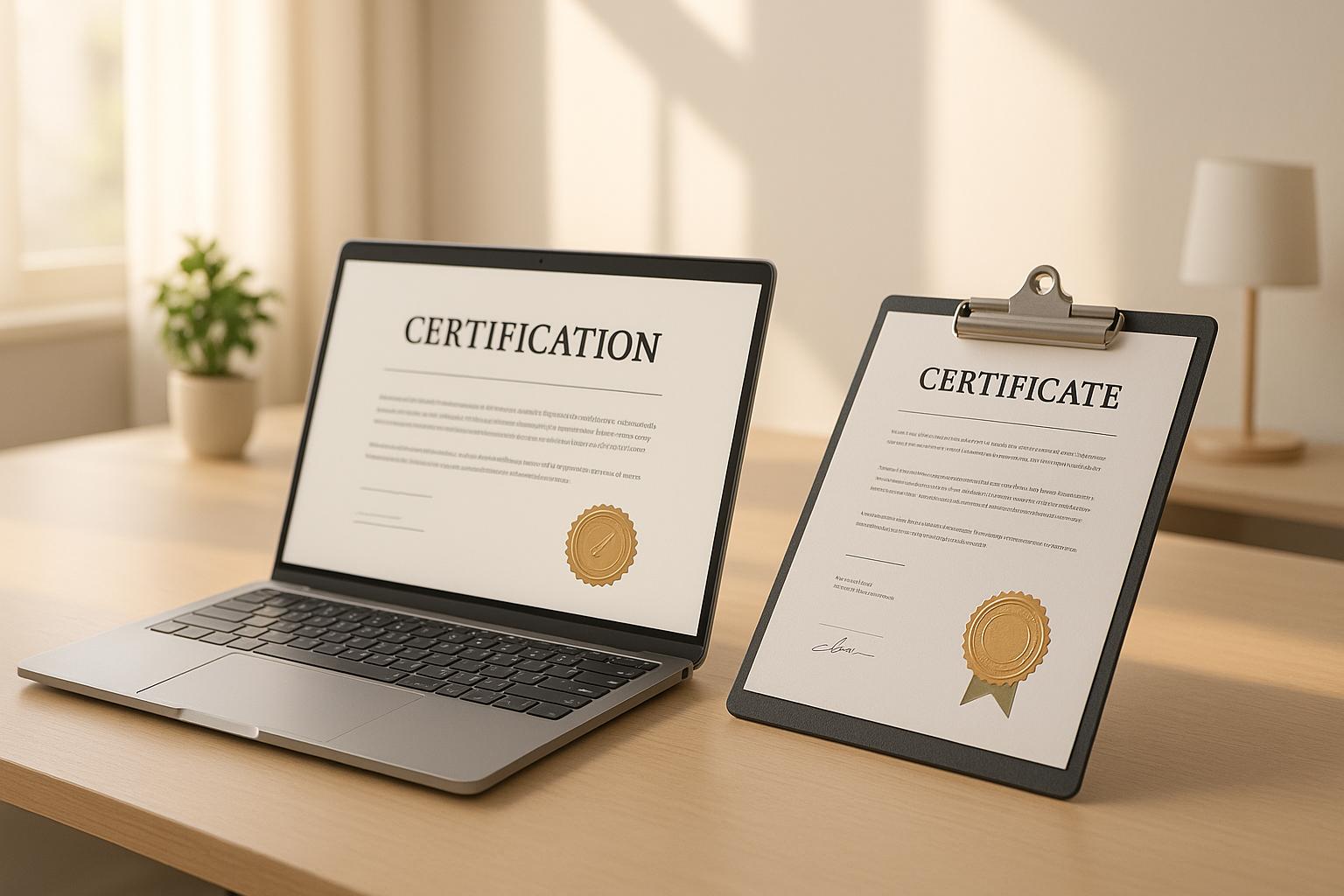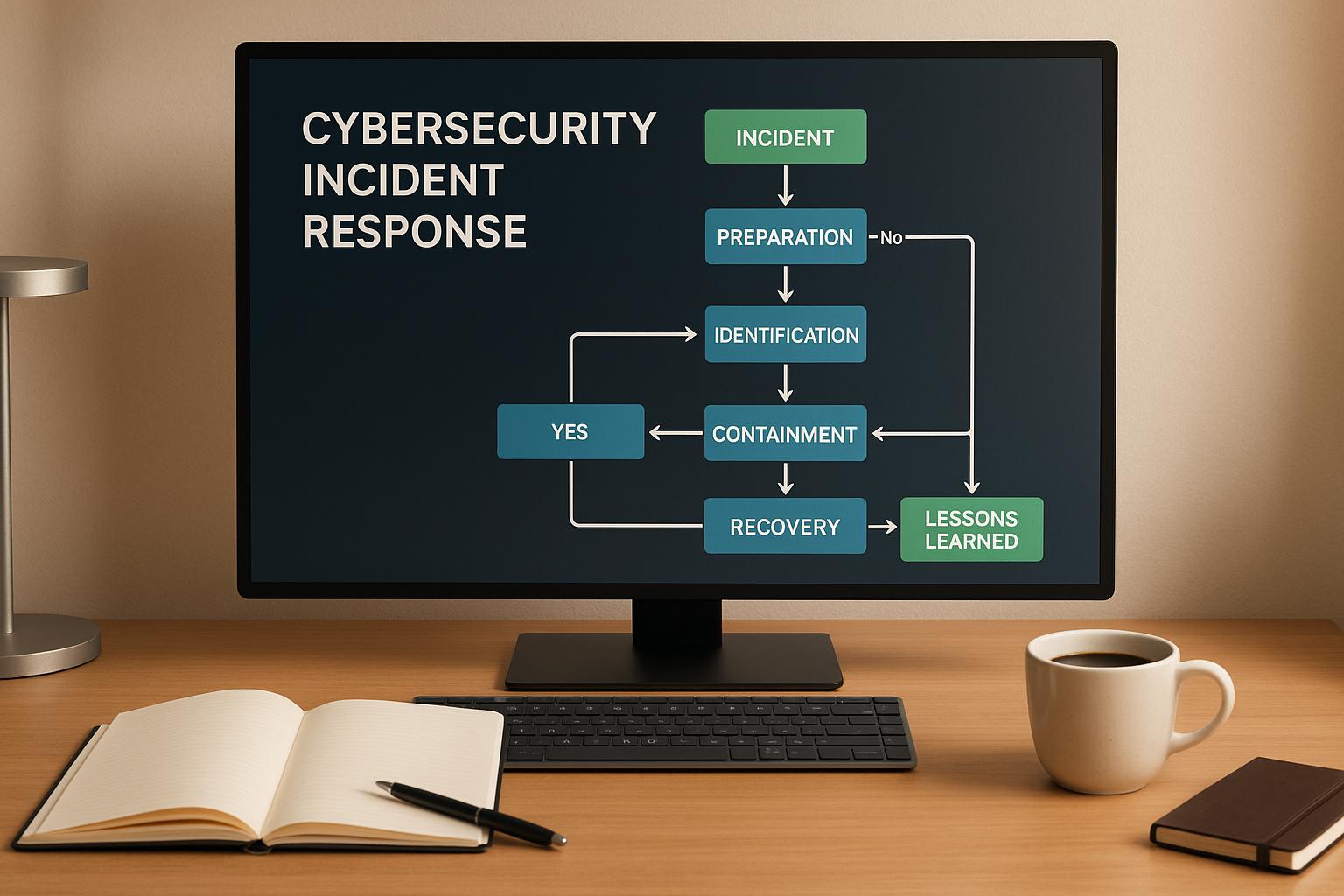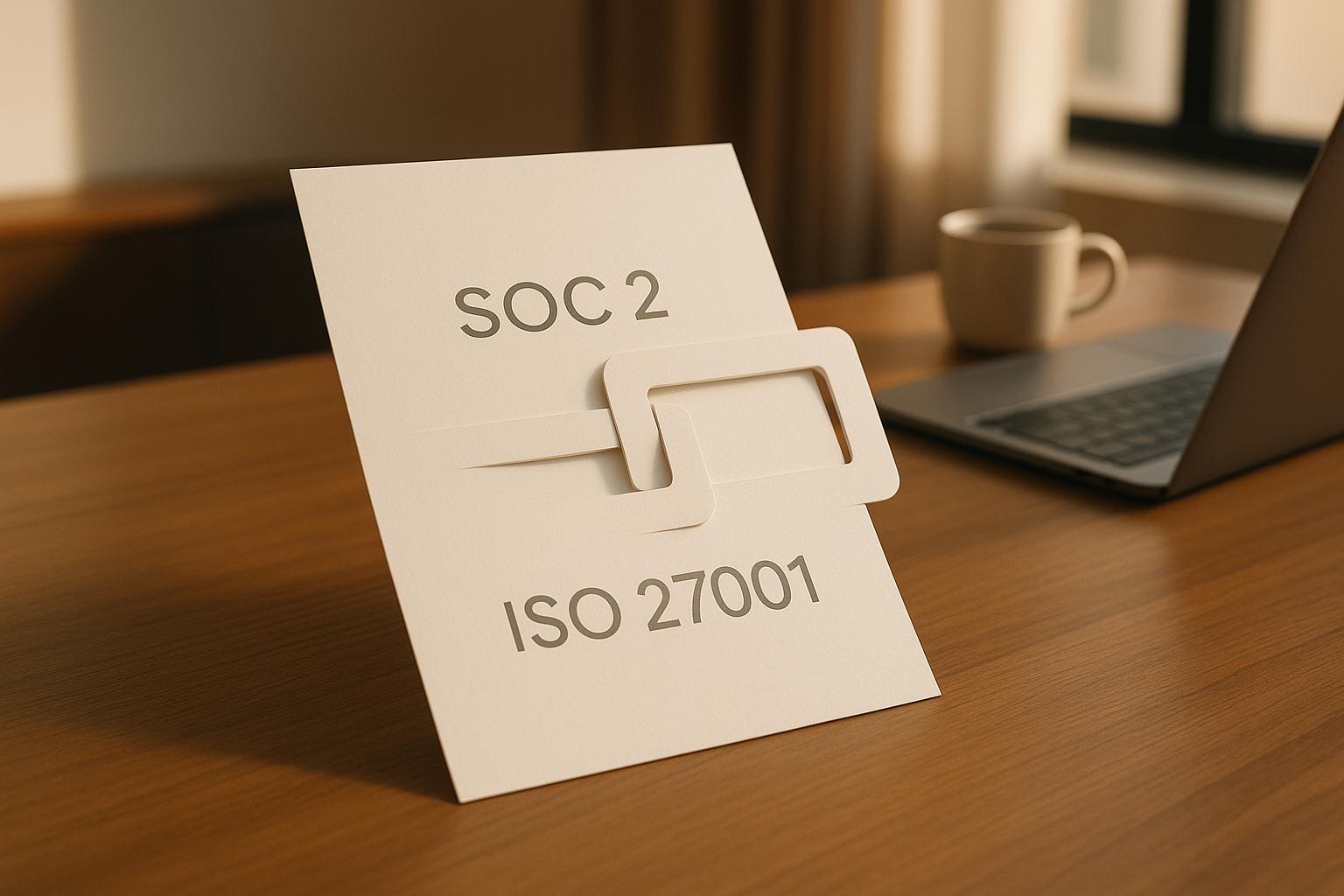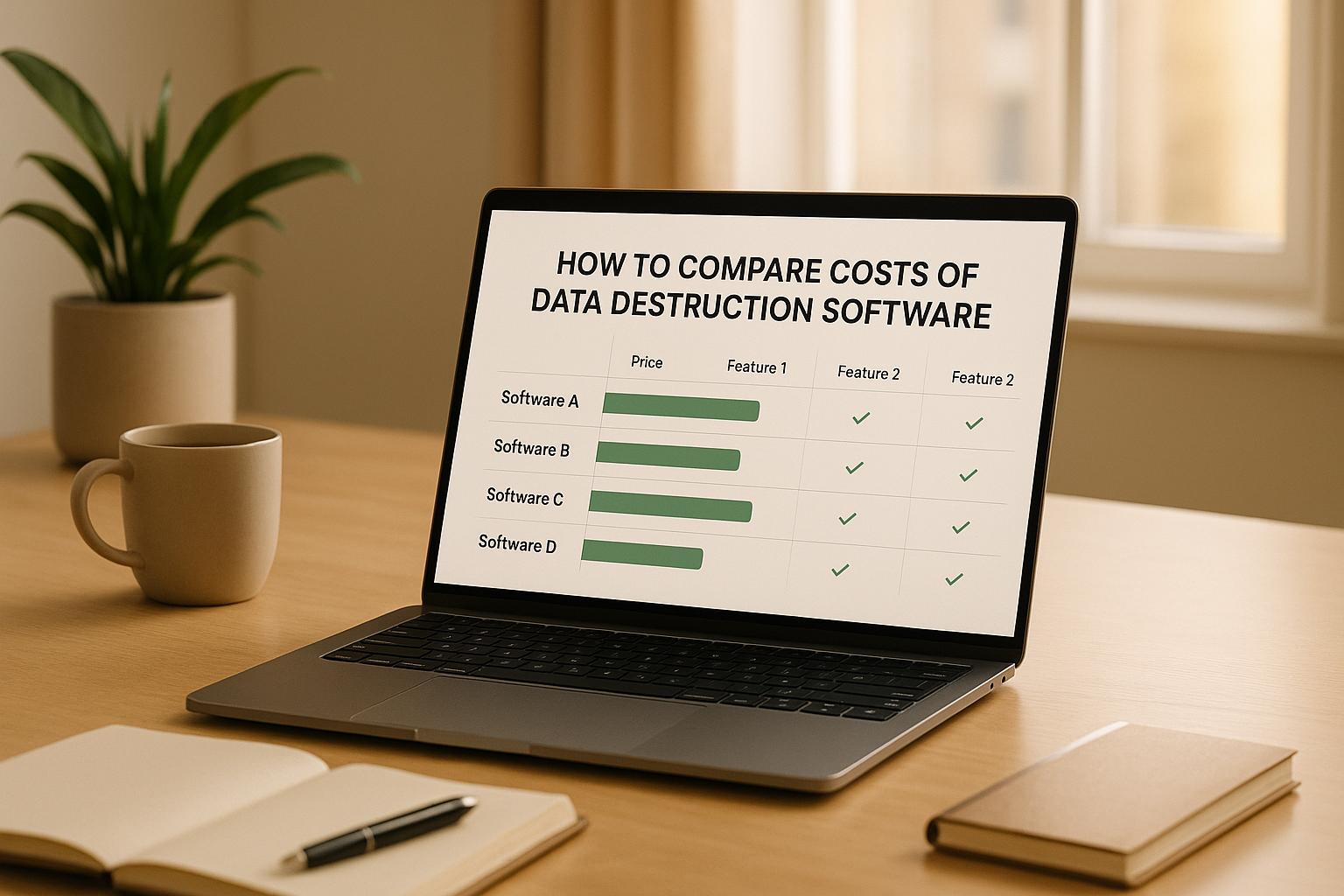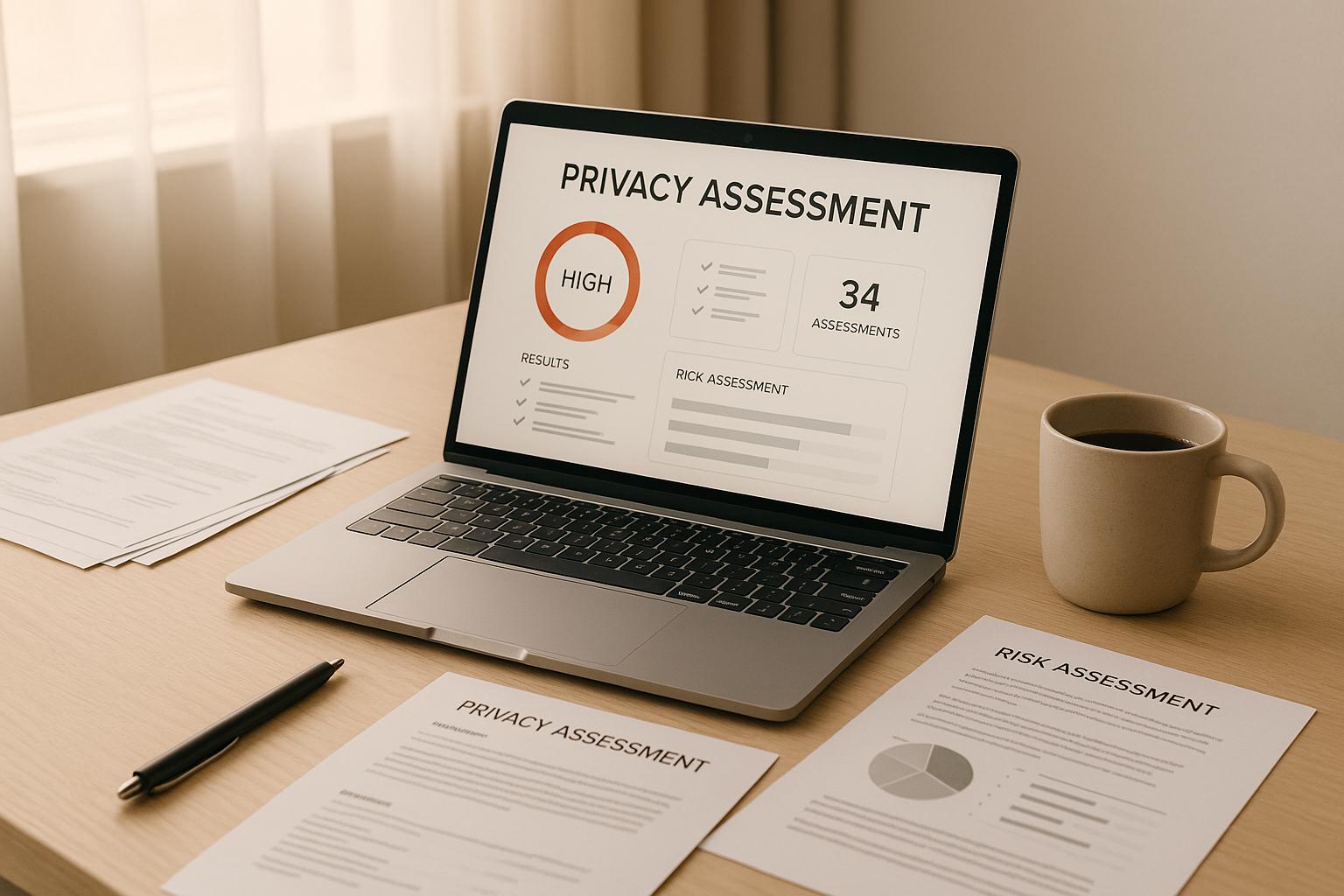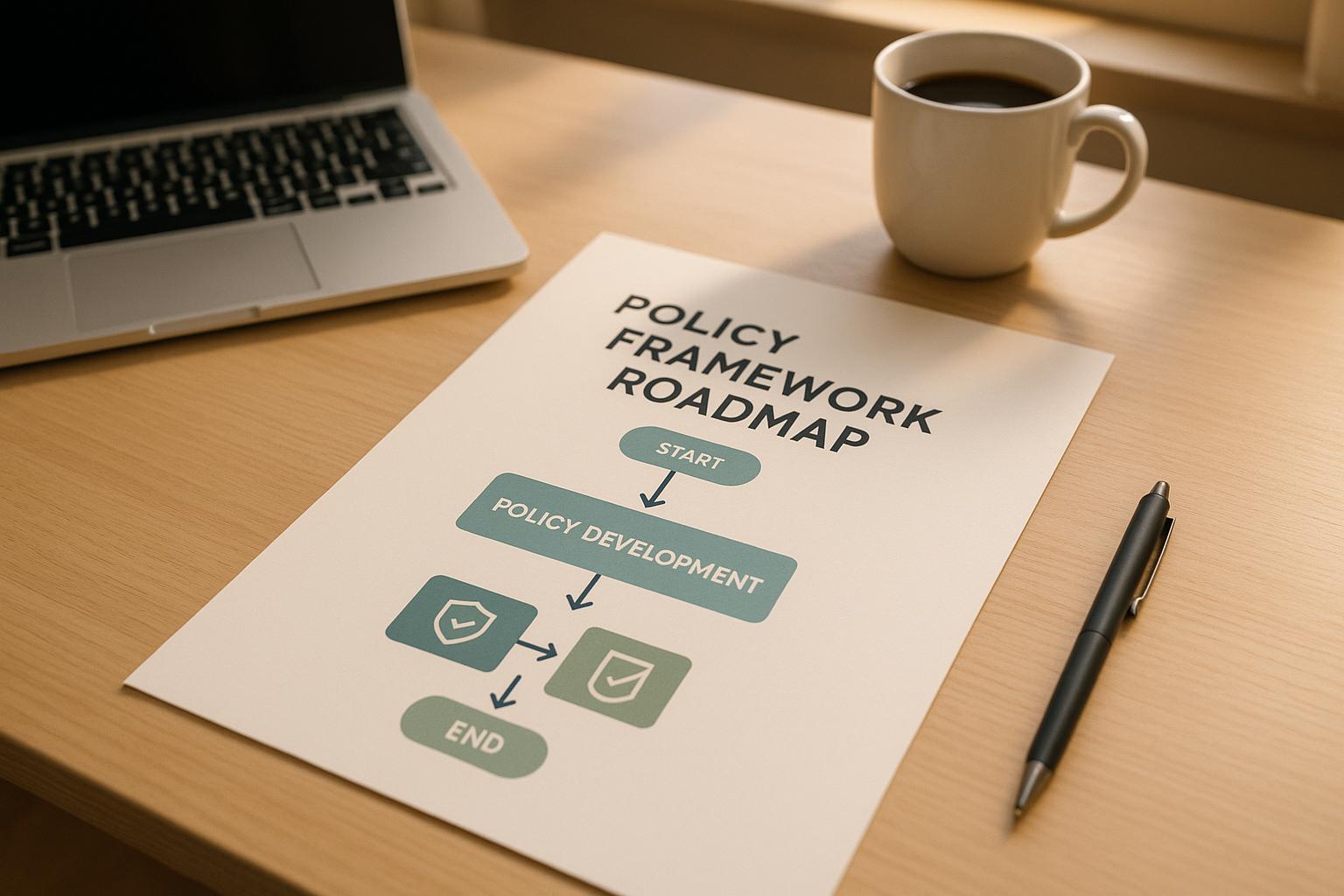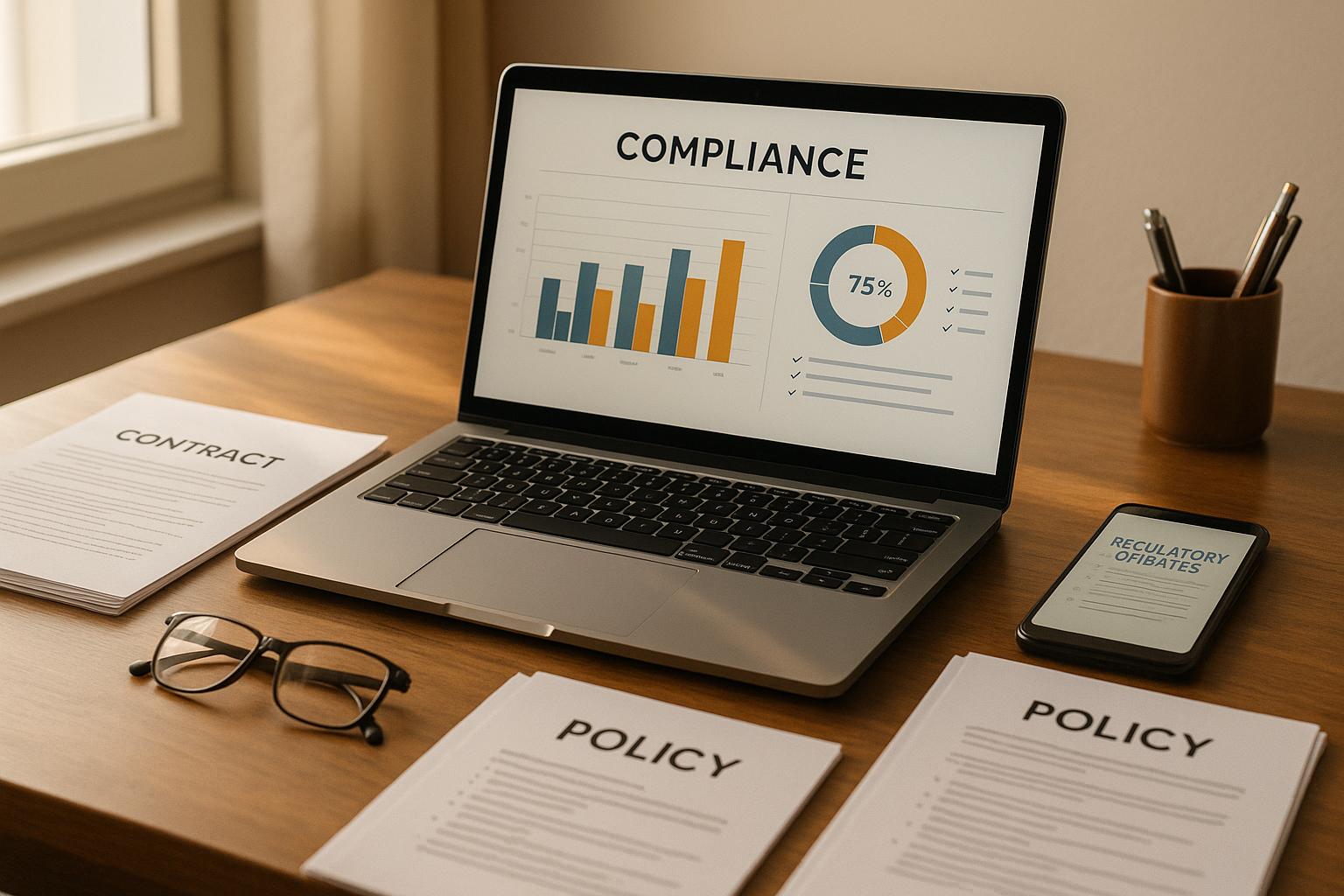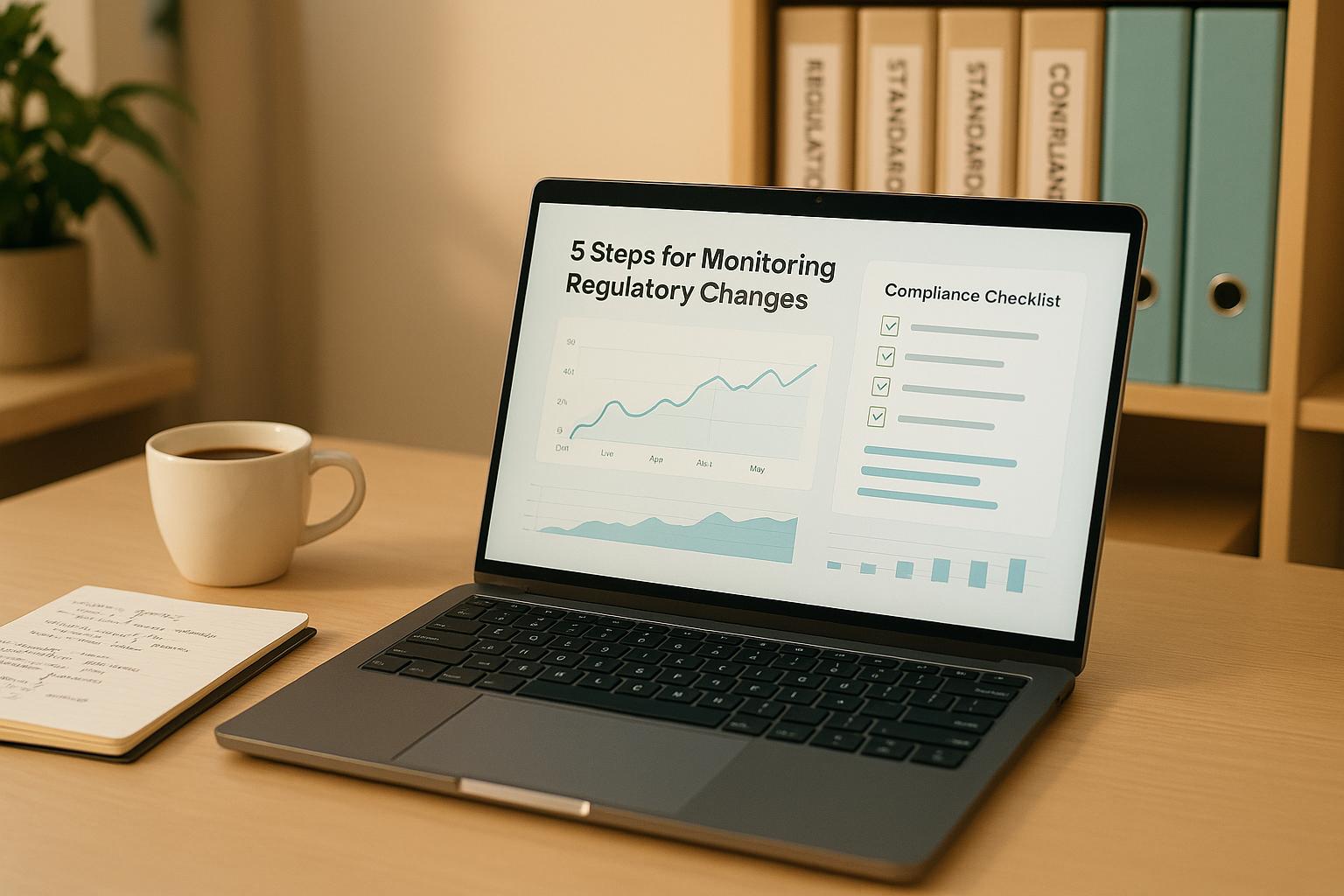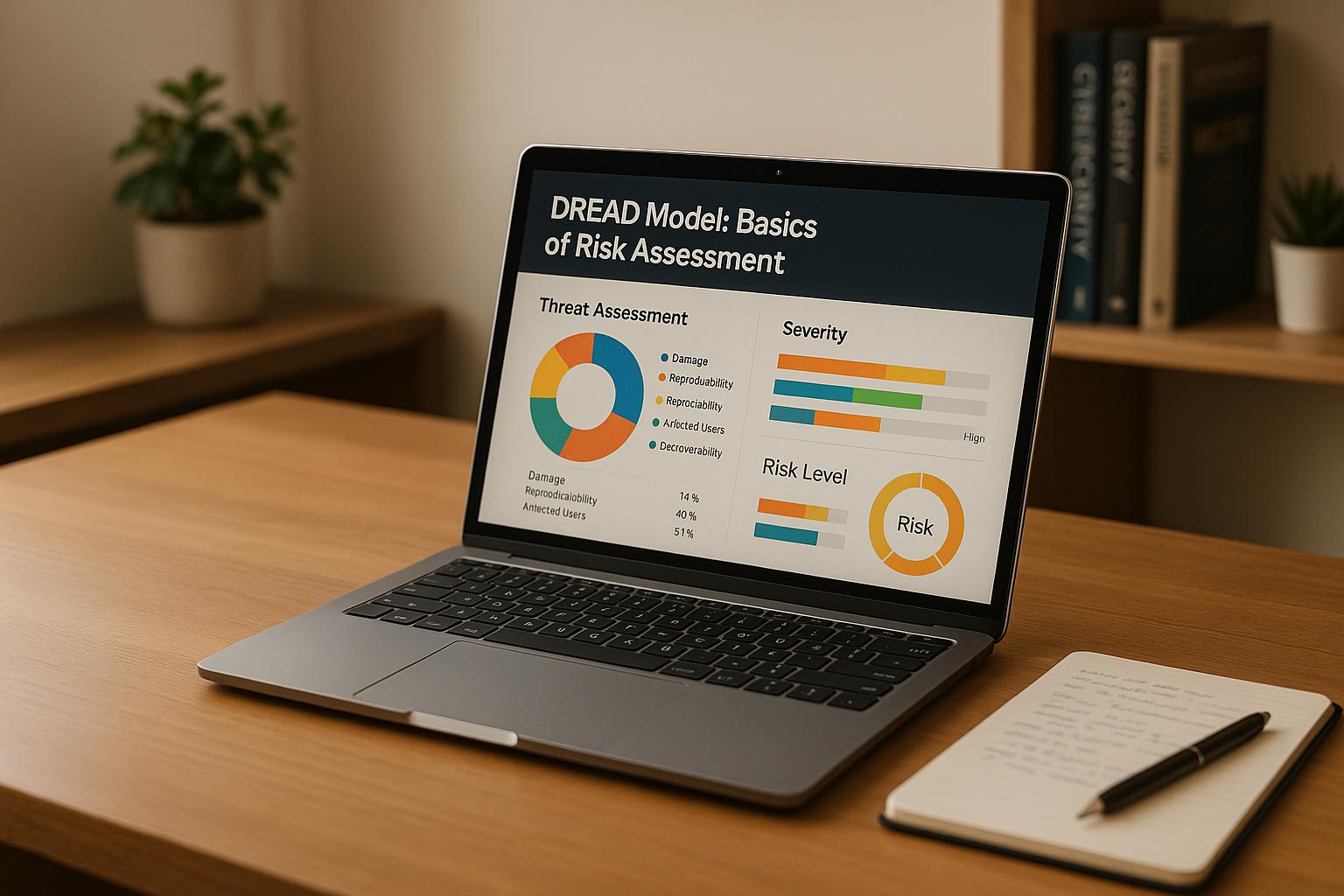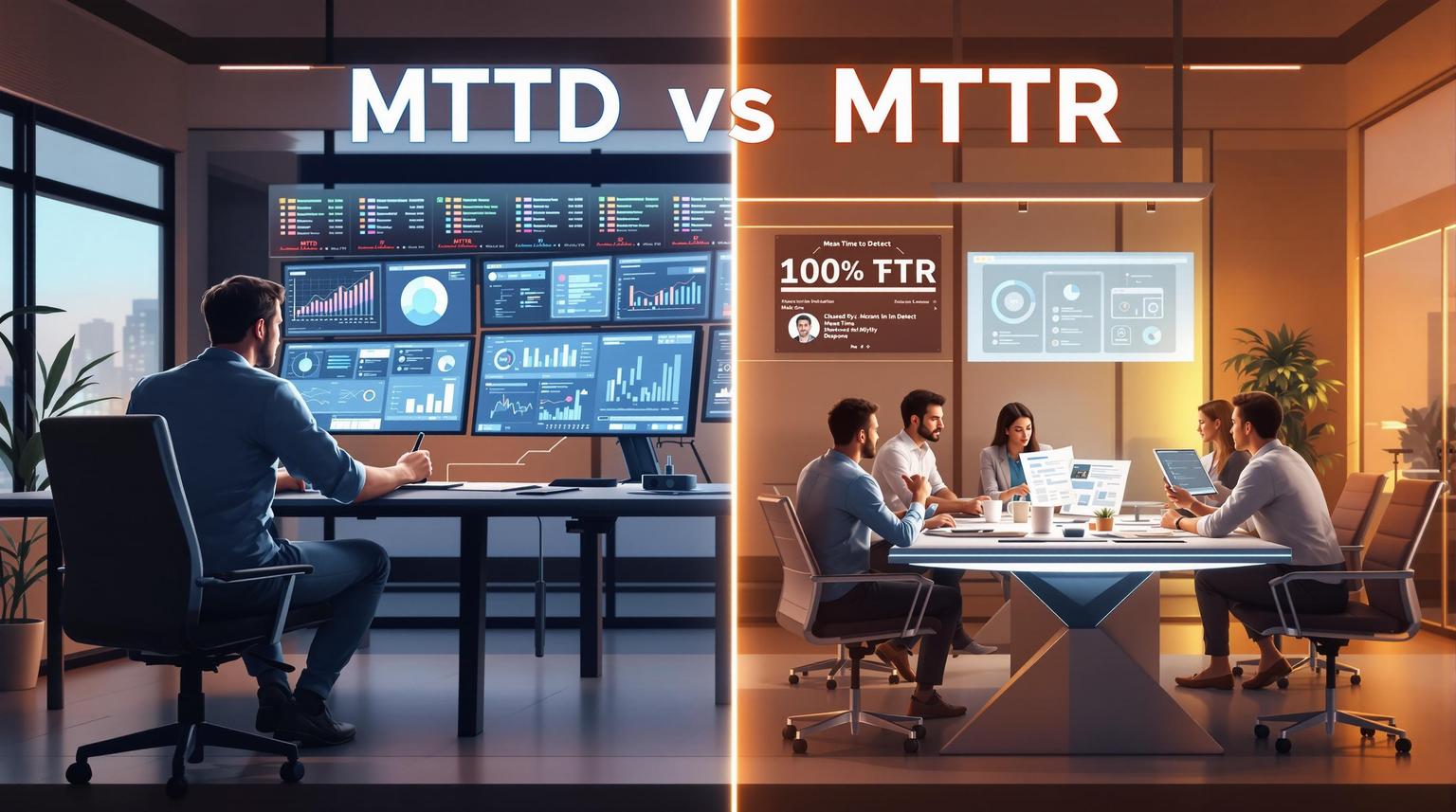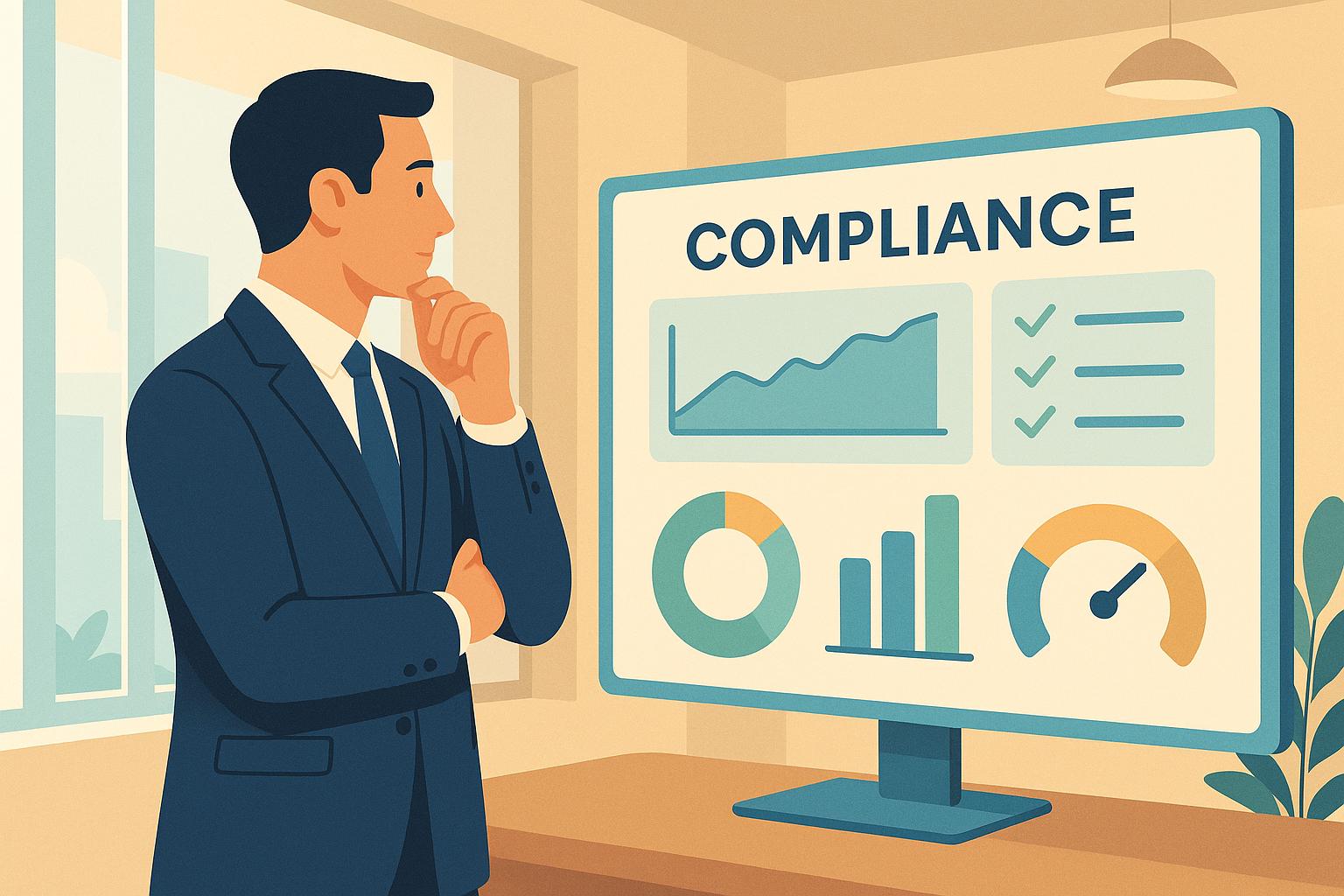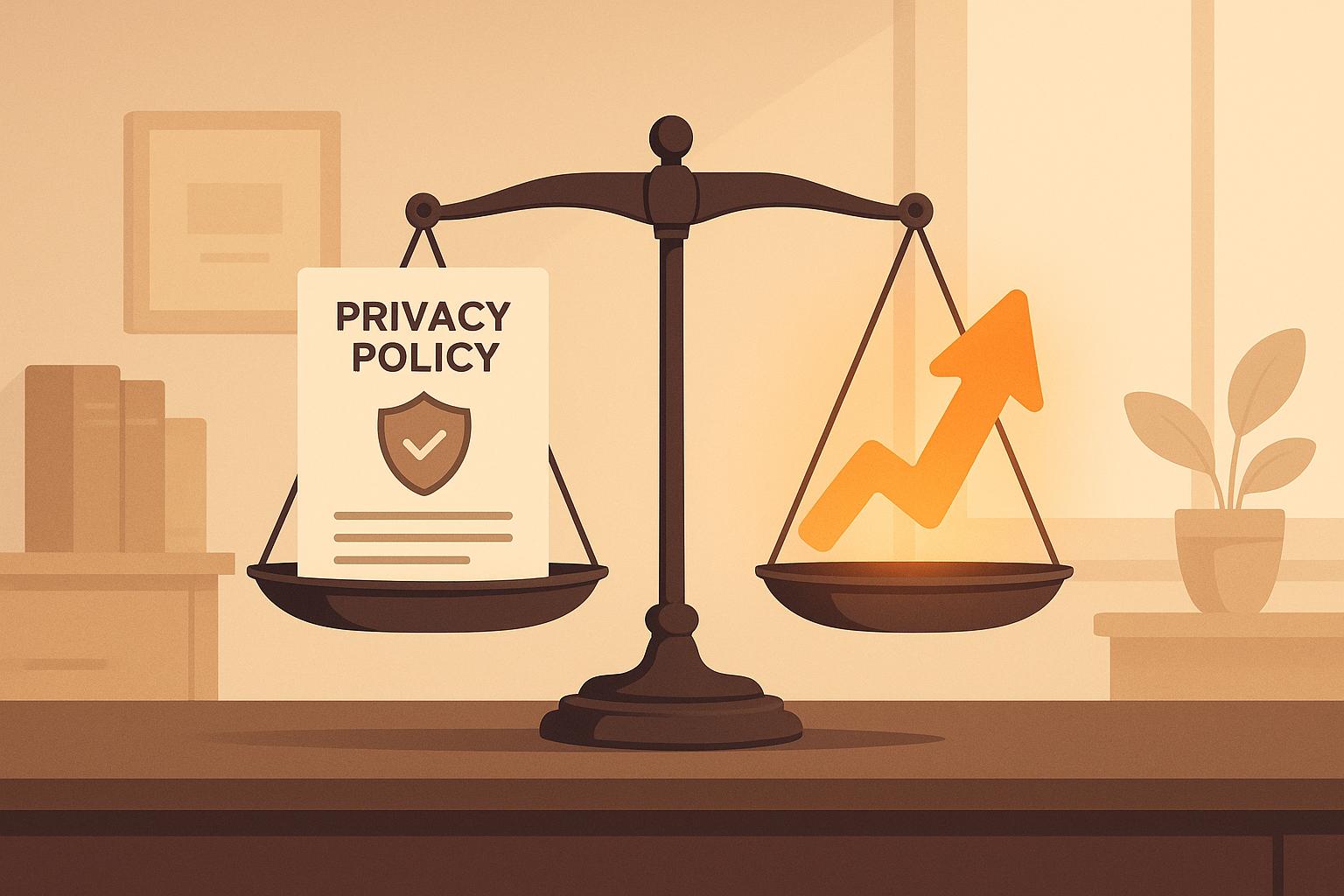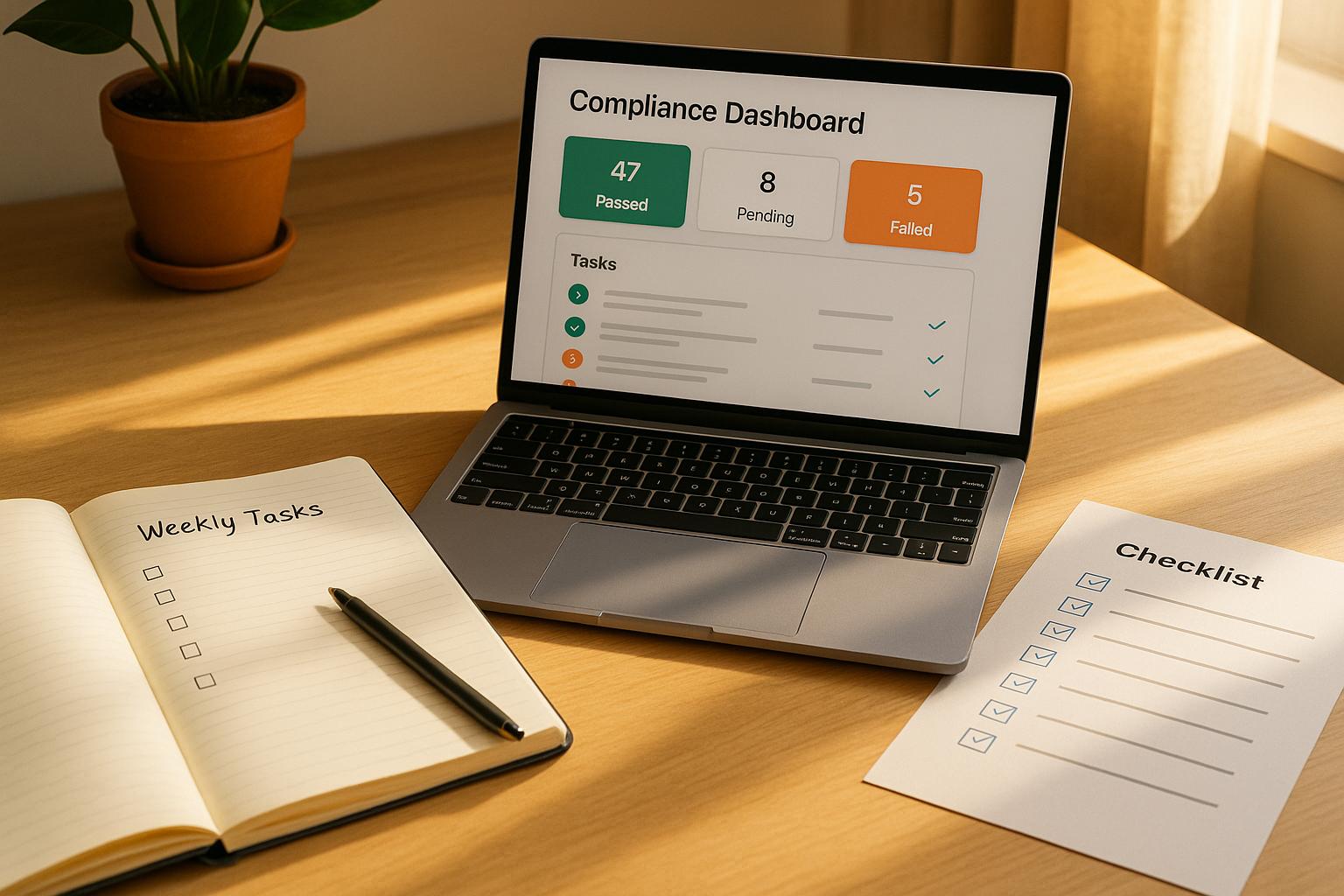
Managing compliance doesn't have to drain your time and energy. By delegating specific Thoropass tasks, you can focus on bigger priorities while maintaining high compliance standards. Here are seven weekly tasks you can assign to others:
- Monitor Compliance Tool Updates: Assign someone to track Thoropass updates, ensuring your tools stay current and audit-ready.
- Manage Compliance Documentation: Delegate organizing, updating, and maintaining records for smoother audits.
- Handle User Permissions and Access Reviews: Let a team member manage access rights and ensure security protocols are followed.
- Track Policy Acknowledgments and Training Completion: Use a dedicated tracker to monitor employee compliance with policies and training.
- Coordinate Third-Party Risk Assessments: Assign a coordinator to manage vendor risks, which are tied to over 35% of breaches.
- Manage Open Compliance Tasks and Remediation Items: Have someone oversee task tracking and remediation progress to avoid missed deadlines.
- Create and Distribute Weekly Compliance Status Reports: Delegate report creation to keep leadership informed without adding to your workload.
How to delegate cybersecurity compliance tasks within a small team? | SME | Security Quotient
1. Monitor Compliance Tool Updates
Keeping up with compliance tool updates can be a tedious task. Thoropass frequently rolls out updates to bolster security, add new compliance frameworks, and improve automation features. Instead of managing this process yourself, assign a team member to stay on top of these updates and notify you about critical changes.
This team member can track release notes, announcements, and system notifications using a tracking system that logs the timing, details, and necessary actions for each update. This way, you won’t miss important changes, and you can focus on broader compliance strategies. Delegating this responsibility not only reduces your workload but also strengthens your compliance efforts in several ways.
Streamlines Compliance Management
Assigning someone to monitor updates can make your compliance process more efficient. Take Guadalupe Credit Union as an example. By using automated monitoring tools, their VP of Risk and Audit, Karla Munoz, saw how proactive tracking can make a difference:
"When the CFPB updated HELOC mortgage rules, I got that notification from Ncomply first and was able to send it to the mortgage department so they could take care of it immediately. Another website sent an alert three months after."
This example highlights how real-time alerts on regulatory changes can prevent compliance gaps and ensure swift action.
Ensures Audit Readiness
Beyond day-to-day operations, consistent monitoring also strengthens your audit preparation. For instance, a multinational bank using RSA Archer and SIEM for automated monitoring was able to continuously gather compliance evidence, drastically reducing the time needed to prepare for audits. By staying current with Thoropass updates, your team ensures that your systems remain secure and aligned with regulations, making audits smoother and more efficient.
Supports Security and Privacy Frameworks
Compliance updates often include new security features and framework enhancements that can reinforce programs like SOC 2 and HIPAA. In 2024, organizations with strong security automation saw average data breach costs of $3.84 million, compared to $5.72 million for those without it - a difference of $1.88 million. Monitoring these updates helps prioritize critical changes that enhance security, keeping your organization ahead of potential risks.
Improves Resource Allocation
Delegating update monitoring allows you to focus on more impactful tasks like risk assessments and strategic planning. For example, Langley Federal Credit Union reduced its compliance workload by 33% by using Ncomply. Research also shows that compliance monitoring tools can save time by automating repetitive tasks and fostering better collaboration and data sharing across teams. Summarizing update findings in a weekly report with key changes, recommended actions, and potential impacts ensures you stay informed without being overwhelmed by minor details.
2. Manage Compliance Documentation
Managing compliance documentation can be a time-consuming part of staying compliant. Like monitoring updates, handling documentation tasks is something you can delegate to a team member. By assigning this responsibility, you free up time for other priorities while ensuring your records are well-organized and consistently updated.
A dedicated documentation manager can take charge of organizing centralized files, updating policy documents, maintaining version control, and setting up retention schedules. Establishing clear practices for creating, reviewing, and retaining documents ensures your records are accurate and consistent. This delegation not only eliminates duplicate efforts but also simplifies your overall compliance process.
Organized Documentation for Smoother Compliance
When one person is responsible for maintaining your documentation system, it ensures everything is consistently organized and easy to find. This structure speeds up compliance reviews and minimizes errors that can occur when multiple people handle documents without clear guidelines.
"Compliance delegation is a critical process for organizations looking to manage regulatory compliance and mitigate risk." - 1-Comply
Having a well-maintained documentation system means your team can quickly access policies, procedures, or evidence when needed. Instead of wasting time searching through scattered files or asking colleagues for help, a structured system keeps everything at your fingertips, simplifying your compliance efforts.
Audit-Ready Systems
A dedicated documentation manager can make audit preparation much easier. They can maintain access logs, ensure proper version control, and keep all necessary materials in a centralized repository. This proactive approach means you’ll have everything ready when auditors come knocking.
"Establishing and maintaining clear, comprehensive, standardized, and intuitive documentation in a centralized repository allows an organization to easily reference and retrieve information when needed." - Danielle Pei, Partner | CISA, Linford & Company
Regular reviews of your documents become much easier when there’s a clear owner. Quarterly updates can ensure policies are current, outdated materials are removed, and everything is properly formatted - avoiding the chaos of scrambling to prepare when auditors request specific information.
Supporting Security and Privacy
Good documentation management also strengthens your security and privacy frameworks. Your documentation manager can ensure that data handling procedures, security protocols, and incident response plans are not only documented but also regularly updated. Strict access controls can protect sensitive information, while authorized personnel have the access they need. Regular audits can identify gaps in your privacy practices and ensure your policies comply with current regulations.
Better Use of Resources
Delegating documentation tasks allows you to focus on more strategic activities, like conducting risk assessments or planning for future compliance needs. It gives you the freedom to analyze trends, develop new policies, and build relationships with key stakeholders. Meanwhile, your documentation manager ensures these tasks get the attention they need, improving the quality and reliability of your records. Automating repetitive processes where possible can further boost efficiency, making your compliance program even more effective.
3. Handle User Permissions and Access Reviews
Managing user permissions and conducting access reviews can quickly become overwhelming for a single administrator. To keep things running smoothly, consider delegating these tasks to a team member or an external partner. By assigning weekly checks on system access, role alignment, and the removal of outdated permissions, you can maintain strong security controls while focusing on higher-level compliance initiatives.
A dedicated reviewer can take charge of monitoring user accounts, performing regular permission audits, and ensuring that your organization adheres to the principle of least privilege. They’ll identify systems requiring review, coordinate necessary approvals, and document all changes. By spreading out the responsibilities, you avoid bottlenecks caused by centralizing access management, while also strengthening your overall security practices.
"In large organizations, manually reviewing all access and permissions by a single admin is impractical. Also, the right people to review access may not always be available. Access review delegation addresses these challenges by distributing reviews to different users or teams. It ensures quick and efficient access management with sustained security."
Streamlines Compliance Management
Delegating access reviews helps distribute the workload across your team, preventing burnout and eliminating single points of failure. With dedicated experts handling these tasks, access rights can be assessed more accurately and efficiently. Plus, concurrent reviews across multiple systems mean the entire process moves faster.
Organizations that have fully automated their access review processes report a 40% reduction in errors, a 30% decrease in staff needed for reviews, and a 40% cut in time spent on these tasks. Even without full automation, assigning these responsibilities to focused reviewers can lead to similar improvements by ensuring better organization and attention to detail.
Your reviewer can define clear access criteria based on job roles, usage patterns, and business needs. They can also establish backup reviewers to ensure continuity during absences, ensuring your access management program remains consistent and reliable.
Ensures Audit Readiness
Regular access reviews do more than improve efficiency - they also keep you prepared for audits. Whether you’re navigating SOC 2, HIPAA, PCI DSS, or GDPR regulations, having a dedicated person manage these reviews ensures you’re always meeting compliance requirements. They can maintain detailed audit trails, documenting all activities and findings, so you’re ready to provide evidence whenever auditors request it.
"The need to control who has access to what systems and data is more than just a matter of enterprise security - it's a compliance necessity as well." - KPMG
A dedicated reviewer can also develop standardized templates and processes to ensure consistency in reviews. They can set up notification systems to alert users and reviewers about upcoming reviews, complete with clear instructions and deadlines. This proactive approach means you’ll always have up-to-date documentation on hand for any compliance assessment.
Supports Security and Privacy Frameworks
Delegated access reviews play a key role in reducing insider threats. With 74% of organizations reporting an increase in insider risks, regular reviews are critical for maintaining a strong security posture. Your reviewer can focus on identifying and addressing risks like privilege creep, excessive permissions, and unauthorized access before they escalate into security incidents.
They can also implement role-based access control (RBAC), routinely audit access logs to track user activity, and ensure permissions are updated as employees change roles or leave the company. This ongoing attention helps uphold the principle of least privilege while bolstering your overall security and privacy frameworks.
Improves Resource Allocation
Delegating access reviews allows you to focus on strategic priorities while leaving the detailed work to a dedicated reviewer. They can manage coordination with department heads, process access requests, and maintain thorough documentation, freeing you to concentrate on risk assessments, policy development, and stakeholder engagement.
This delegation can also uncover opportunities for process improvements. A hands-on reviewer can spot trends in access requests, recommend areas for automation, and suggest updates to policies based on their day-to-day experience. In this way, they become a key resource for refining and optimizing your compliance program through thoughtful delegation.
4. Track Policy Acknowledgments and Training Completion
Assigning the responsibility of tracking policy acknowledgments and training completion to a dedicated team member or partner can make a big difference. This person can monitor progress, send reminders, and maintain records, ensuring nothing is overlooked. It also frees you up to focus on broader compliance strategies.
Using automated systems for tracking is key. These tools can monitor progress, send reminders, and generate reports while coordinating with HR to enforce deadlines. By centralizing this responsibility, you establish accountability and consistency, making compliance efforts more seamless. Automation also sets the stage for smoother compliance management across the board.
"During a KirkpatrickPrice audit, our auditors verify the presence of signed acknowledgment forms for all information security policies you've issued to your employees. These forms are a key indicator of their understanding and commitment. After all, what's the point of a policy if your employees don't implement the practice?"
Simplifies Compliance Management
Automated tracking helps simplify compliance reporting across various frameworks. A dedicated tracker can align training with departmental needs, ensuring each employee receives relevant and role-specific information. Automation can also handle assigning training, tracking completion, and creating audit-ready reports - eliminating the need for constant manual input.
This approach is particularly helpful when managing compliance across frameworks like GDPR, HIPAA, or PCI DSS. Having someone dedicated to monitoring training completion and evaluating its effectiveness ensures consistent standards are upheld.
Enhances Audit Preparedness
Keeping detailed records of policy acknowledgments and training completion is crucial for audits. A tracker can document completion dates and training outcomes, providing clear evidence that employees understand and can apply required security practices.
The financial risks of poor compliance tracking are steep. On average, non-compliance costs businesses $14.82 million annually. On the flip side, companies with ISO 27001 certification report a 30% reduction in data breaches, and 77% say the certification positively impacts their reputation. Proper tracking not only avoids financial penalties but also strengthens your overall compliance position.
Strengthens Security and Privacy Frameworks
Tracking policy acknowledgments and training completion plays a direct role in reinforcing your security and privacy frameworks. It ensures employees grasp their responsibilities in safeguarding sensitive data. Beyond just tracking completion rates, a tracker can assess the effectiveness of training by monitoring phishing simulation results and other performance metrics. This focus on behavior change, rather than just statistics, bolsters your security posture.
Enforcement trends show why robust tracking is non-negotiable. In 2024, global regulators issued $19.3 billion in enforcement actions for cybersecurity lapses and compliance failures. By January 2025, GDPR penalties alone hit €5.88 billion. A dedicated tracker can help you stay ahead of these risks by maintaining real-time visibility into compliance and addressing gaps immediately.
Boosts Resource Efficiency
Delegating tracking responsibilities allows you to focus on high-level tasks like policy development, risk assessments, and stakeholder engagement. Meanwhile, your tracker can handle the day-to-day tasks of monitoring, coordinating training schedules, and managing compliance documentation.
The efficiency gains are hard to ignore. Research indicates that 65% of corporate risk and compliance professionals believe automating manual processes could significantly reduce both complexity and costs. A tracker can implement these systems, conduct internal audits to spot gaps, and keep policies updated to reflect evolving laws or business needs. By delegating these responsibilities, you not only save time but also strengthen your overall compliance strategy.
sbb-itb-ec1727d
5. Coordinate Third-Party Risk Assessments
Managing third-party risk assessments is essential for maintaining security, but it doesn't need to dominate your schedule. Handing off this responsibility to a dedicated team member or an external partner can streamline your approach to vendor risk while letting you focus on broader strategic goals.
In 2025, 35.5% of breaches were tied to third-party compromises, marking a 6.5% rise from the previous year. Even more alarming, 41% of ransomware attacks originated through third-party access points. Yet, despite these risks, 54% of organizations still fail to properly vet their vendors.
A dedicated coordinator can establish clear processes to ensure that every assessment is consistently scoped, executed, and reviewed. They can also categorize vendors by risk level, ensuring resources are allocated where they’re needed most. This is especially critical given that 68% of breaches occur between reviews. Delegating this responsibility complements your larger compliance and risk management strategies.
Streamlines Compliance Management
Delegating third-party risk coordination doesn’t just save time - it centralizes expertise and enhances efficiency. A skilled coordinator can implement AI-driven tools to analyze vendor data in real time, streamlining the risk assessment process. With spending on third-party risk management solutions projected to grow from $9.0 billion in 2025 to $19.9 billion by 2030, investing in such tools is becoming increasingly important.
By automating due diligence, coordinators can monitor vendor changes and apply scoring systems that align risk levels with evidence requirements. This systematic approach ensures that your vendors’ security, privacy, and compliance practices are consistently evaluated across your entire ecosystem.
For example, manual vendor assessments often take over two weeks, but modern security ratings can reduce this process to just minutes. These advanced tools not only save time but also improve accuracy.
Ensures Audit Readiness
Organizations with strong documentation practices report 73% fewer audit findings. A dedicated coordinator can formalize documentation and reporting to ensure your organization is always audit-ready. They can also assemble cross-functional teams - including IT, procurement, legal, and finance - to consolidate vendor data effectively.
By embedding regulatory requirements like GDPR or CCPA into the vendor lifecycle, your coordinator ensures compliance at every stage. Standardizing the due diligence process ensures all vendors are assessed against the same criteria, which is especially important since 58% of breaches involving third parties originate from fourth-party relationships. Collecting multiple forms of evidence to verify vendor claims further strengthens the documentation trail auditors expect.
Supports Security and Privacy Frameworks
A dedicated coordinator can align third-party risk assessments with your broader security and privacy frameworks. Using integrated platforms, they can map vendor controls to multiple regulatory frameworks simultaneously, providing comprehensive compliance coverage. This approach is particularly valuable as regulators increasingly shift from periodic checks to real-time monitoring.
Given that over one-third of breaches in 2024 were linked to third-party relationships, this alignment is no longer optional - it’s necessary. Predictive analytics can also help identify risks tied to emerging technologies or market changes, offering a forward-looking approach to vendor management.
Improves Resource Allocation
Delegating coordination tasks allows you to focus on strategic priorities while ensuring vendors are thoroughly monitored. A coordinator can prioritize tools with extensive integrations, offering full visibility into your security landscape. They can also regularly assess and consolidate overlapping tools to streamline risk management efforts.
Robust third-party risk tools enhance vendor visibility, improve decision-making, and reduce security incidents. Forrester Consulting found that comprehensive third-party risk management delivered a 297% ROI over three years.
Clear roles and responsibilities encourage collaboration between security, procurement, and compliance teams. By focusing on controls that address current threats instead of trying to cover every possible risk, you can maximize the impact of your security investments. This targeted delegation strengthens your vendor risk management program and ensures it integrates seamlessly with other administrative tasks in Thoropass.
6. Manage Open Compliance Tasks and Remediation Items
Keeping track of open compliance tasks and remediation items across multiple frameworks and deadlines can be a daunting challenge. Assigning this responsibility to a dedicated team member or outsourcing it to a specialist ensures everything stays on track, allowing you to focus on broader compliance strategies.
The stakes are high - data breaches in 2024 are projected to cost businesses an average of $4.88 million. GDPR fines can reach €20 million or 4% of global revenue, while HIPAA violations can carry penalties of up to $1.5 million per category, per year. In 2023, nearly 70% of service organizations needed to prove compliance with at least six different frameworks. Companies with well-developed audit readiness programs not only save time preparing for security audits but also face fewer compliance findings.
Streamlining Compliance Management
Centralizing task management can simplify remediation tracking across frameworks. Thoropass offers project management tools designed to automate and unify task tracking. Automated notifications keep everyone informed about deadlines and overdue items, ensuring no task is overlooked. This structured system is vital in today’s environment, where 89% of consumers expect strong data privacy measures. Features like the Risk Register provide a clear view of identified risks and their remediation progress, helping teams prioritize tasks based on their severity and impact on the business. These efficient processes lay the groundwork for solid audit readiness.
Ensuring Audit Readiness
Having a dedicated compliance coordinator helps establish an audit-ready documentation trail while ensuring remediation efforts are properly tracked. Automated evidence collection paired with frequent internal audits ensures that compliance remains on track.
"Thoropass masterfully simplified the complexities [of audit] into manageable segments. It provided clear visibility into the status of each control and policy, streamlining our navigation and execution."
- Emily I., Mid-market healthcare company, G2 review
Thoropass also integrates with cloud providers and other tools to automatically gather compliance-related data and alert users to any issues. Audits that use a higher percentage of monitor-sourced evidence - more than 10% - are completed 56% faster than those relying on less than 2.5%.
Supporting Security and Privacy Frameworks
Streamlined processes and effective remediation tracking strengthen your overall security framework. A dedicated coordinator can map controls across different frameworks, ensuring that remediation efforts address overlapping requirements efficiently. Thoropass simplifies this by mapping controls across multiple standards, allowing a single remediation effort to meet the needs of various frameworks, saving both time and effort. Real-time control monitoring ensures that new gaps are identified and tracked immediately.
Improving Resource Allocation
Delegating administrative tasks frees up time to focus on strategic compliance goals. Integrating compliance tasks into your risk management framework enhances resource efficiency. Thoropass’s automated systems reduce manual effort by 80%, saving mid-market SaaS companies over 950 work hours each year.
"The centralized Thoropass system housing documents, processes, control evidence, and vendor management all in one place proved to be the deciding factor."
7. Create and Distribute Weekly Compliance Status Reports
Weekly compliance status reports simplify complex data into clear, actionable insights for leadership. By delegating this task, organizations can streamline compliance management and maintain a sharper focus on strategic priorities. A skilled compliance coordinator can handle the details - data collection, trend analysis, and stakeholder distribution - ensuring consistent, high-quality reporting.
Streamlines Compliance Management
Weekly reports act as a central communication tool, keeping everyone informed about compliance progress, potential risks, and ongoing remediation efforts. A well-structured report typically includes:
- An executive summary
- Key performance indicators (KPIs) and key risk indicators (KRIs)
- Updated compliance checklists
- Assigned action items
- Progress tracking
- Forward-looking recommendations
Thoropass customers, for instance, have seen a 50% reduction in audit time and a 25% drop in compliance costs thanks to improved reporting and visibility.
Ensures Audit Readiness
Having a regular reporting routine creates an audit-ready documentation trail, showcasing continuous monitoring and proactive compliance management. When compliance data is consistently tracked and reviewed, organizations can address potential issues before they escalate into audit findings. For example:
- The Access Group: Reduced audit cycles from 12 months to just 6–7 months, significantly cutting costs through systematic reporting with Thoropass.
- CoEnterprise: Reduced their customer due diligence workload by 75% and achieved SOC 2 and ISO 27001 certifications in under a year through consistent reporting.
Supports Security and Privacy Frameworks
Weekly compliance reports offer the visibility needed to manage multiple compliance frameworks efficiently. They should be updated regularly to reflect changes in industry standards and regulations, helping organizations stay ahead of evolving requirements. These reports provide a detailed overview of compliance programs, outlining key policies, procedures, and controls while analyzing risks based on severity and impact.
"A SOC 2 report is simply a milestone in your security maturity journey, not the finish line. I've seen too many organizations breathe a sigh of relief after achieving an unqualified opinion and then become complacent. The most security-mature clients we work with view their audit results - even clean ones - as a valuable source of insight for continuous improvement. They're analyzing control performance patterns, identifying near-misses, and proactively enhancing controls well before the next audit cycle begins. That's the difference between compliance as a checkbox and compliance as a competitive advantage."
– Leith Khanafseh, Managing Partner, Assurance and Compliance Products, Thoropass
By integrating these reports into their processes, organizations can better navigate complex compliance landscapes with confidence and clarity.
Improves Resource Allocation
Delegating the creation and distribution of compliance reports allows leadership to concentrate on broader strategic goals. Those tasked with generating these reports can collaborate across departments - legal, IT, compliance, and management - to pull together comprehensive insights.
Weekly reports also enable organizations to prioritize remediation efforts based on data rather than intuition. By analyzing compliance data against established benchmarks, resources can be allocated more effectively to address the most critical risks.
Non-compliance costs, on average, 2.71 times more than investing in compliance. Regular reporting not only supports proactive decision-making but also ensures continuous oversight. While a Chief Compliance Officer should review these reports and act on key insights, the task of compiling them can be delegated to qualified team members.
Internal vs. Outsourced Delegation Comparison
When it comes to managing your weekly Thoropass compliance tasks, you essentially have two choices: delegate internally to your team or outsource to specialized providers like Cycore. Each option has its own set of benefits and challenges, influencing the efficiency and cost of your compliance program.
Interestingly, research shows that only 37% of managers feel confident delegating tasks, and just 44% of employees think their managers are effective at it. This disconnect often leads organizations to explore external solutions. Let’s break down the key factors - cost, expertise, control, and strategic focus - so you can make an informed decision.
Cost Considerations and Resource Allocation
Internal delegation mainly involves salary costs but can also require extra spending on training and technology. Your team will need time to build compliance expertise, and you may face ongoing expenses for software licenses, training courses, and regulatory updates. On the upside, you avoid paying external service fees.
Outsourcing, on the other hand, comes with a different cost structure. While you’ll pay contract fees, providers like Cycore include built-in expertise, access to tech, and continuous compliance monitoring. For example, managed security services can cost around $15,000 per month (or $180,000 annually), with add-ons like virtual Chief Information Officer (vCIO) support priced at about $1,800 monthly (or $21,600 annually).
Expertise and Quality Control
Internal teams bring a deep understanding of your business and can provide immediate support. However, they might lack specialized compliance knowledge and could face burnout if overburdened. Their familiarity with your company culture makes it easier to integrate compliance tasks into existing workflows.
Outsourced providers, by contrast, offer specialized skills honed through work with various clients. They stay current with regulatory changes and often deliver high-quality results due to their focused expertise. The trade-off? They may not fully grasp the nuances of your business, and there could be occasional communication delays.
Control and Integration Factors
| Factor | Internal Delegation | Outsourced Services |
|---|---|---|
| Control Level | High - Direct oversight and quick adjustments | Moderate - Requires clear communication and expectations |
| Integration | Seamless with existing workflows | May need onboarding and alignment |
| Scalability | Limited by team capacity and hiring timelines | Easily scalable with external resources |
| Availability | Standard business hours | Often includes extended or 24/7 support |
Strategic Focus and Business Growth
Balancing compliance with strategic growth often depends on how you delegate. For organizations with limited internal resources, outsourcing can free up leadership to focus on core business goals. This is particularly beneficial for smaller firms - over 95% of Registered Investment Advisors managing less than $100 million in assets have Chief Compliance Officers juggling multiple roles.
On the flip side, internal delegation can enhance employee skills and engagement when done well. It fosters accountability and structure within your team, but it requires careful task assignment and consistent feedback to avoid micromanagement [7, 71].
Risk Assessment and Long-term Alignment
Choosing between internal and outsourced delegation depends on factors like company size, complexity, budget, and growth objectives. You’ll also need to consider your industry’s regulatory demands and your team’s current capabilities.
A hybrid approach is gaining popularity, blending internal oversight with outsourced execution for specific tasks. This model provides flexibility and cost savings while maintaining direct control over critical compliance activities.
Regardless of your approach, the ultimate responsibility for meeting regulatory requirements lies with your organization. As SEC Chair Gary Gensler emphasizes:
"When an investment adviser outsources work to third parties, it may lower the adviser's costs, but it does not change an adviser's core obligations to its clients".
Conclusion
Delegating your weekly Thoropass compliance tasks can completely reshape how your organization handles security and regulatory compliance. By effectively assigning these seven key responsibilities, you create a system that supports long-term compliance while scaling alongside your business growth.
Companies using Thoropass for compliance delegation report impressive results: a 62% faster time-to-audit, 950+ work hours saved annually for mid-market SaaS businesses, and an 80% reduction in compliance overhead. For instance, The Access Group achieved a 50% reduction in audit timelines and cut external consulting costs by 25%, all by strategically delegating these tasks.
"Delegating, when done well, not only reduces your own workload, it develops your employees, gives you and your team a bigger range of skills and impact, provides emergency back-up (since you're not the only one who knows how to do something), creates inclusive opportunities, empowers people, and retains talent."
- Deborah Grayson Riegel
Whether you choose to delegate internally or work with compliance specialists, the secret is consistency. Regular delegation not only improves productivity but also strengthens your audit readiness. In fact, mastering delegation can boost team productivity by up to 33%, giving your organization the extra capacity to focus on strategic goals. Plus, having multiple team members familiar with critical processes ensures your compliance program remains audit-ready year-round, avoiding the last-minute rush during assessments.
"The most successful SOC 2 audits we've observed aren't those with the most controls - they're the ones where organizations have thoughtfully aligned their security practices with their actual risk profile."
- Leith Khanafseh from Thoropass
With the complexities of the U.S. regulatory landscape, this level of preparation is essential. By delegating these seven tasks strategically, you build a compliance program that’s not just ready for today’s demands but also capable of adapting to future challenges.
FAQs
How does delegating weekly compliance tasks help organizations work more efficiently and stay productive?
Delegating weekly compliance tasks can help organizations manage workflows more effectively by sharing responsibilities among team members or external partners. This approach lightens the load on key staff, reduces the chance of mistakes, and ensures timely task completion.
When employees are given ownership of specific duties, it frees up leadership to concentrate on broader strategic objectives. This not only enhances overall productivity but also keeps compliance standards intact without overwhelming the team.
What are the pros and cons of outsourcing compliance tasks instead of managing them in-house?
Outsourcing compliance tasks can bring several advantages, like tapping into specialized expertise, saving costs, and scaling resources more effectively. It’s a practical way to meet compliance standards without overwhelming your internal team.
That said, outsourcing isn’t without its challenges. There are valid concerns about data security, reduced control, and the risk of non-compliance if your external partner doesn’t fully grasp your organization’s unique requirements. These missteps can lead to legal trouble or even damage your reputation.
On the other hand, keeping compliance in-house gives you tighter control over sensitive processes and information. But this approach often demands a hefty investment in resources, training, and expertise - something that can be tough to maintain long-term. Balancing these pros and cons is key to figuring out which path best suits your organization’s goals and capabilities.
Why is it important to monitor compliance tool updates for improving audit readiness and security?
Keeping your compliance tools up to date is crucial for addressing potential risks, meeting the latest regulatory requirements, and streamlining essential tasks like gathering evidence for audits.
Regular updates not only improve your readiness for audits but also bolster your organization’s security. Staying proactive helps reduce vulnerabilities and keeps your operations aligned with compliance standards.


